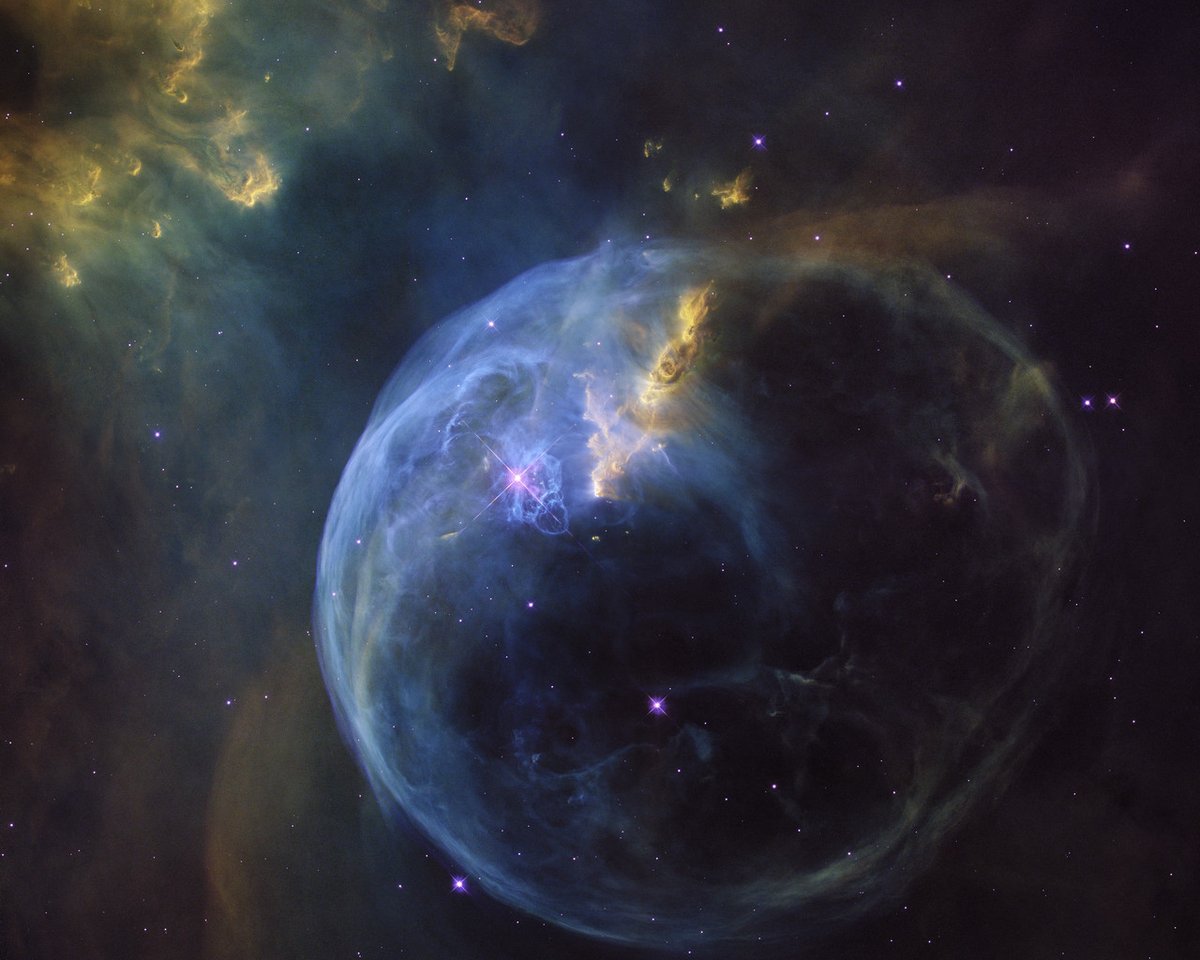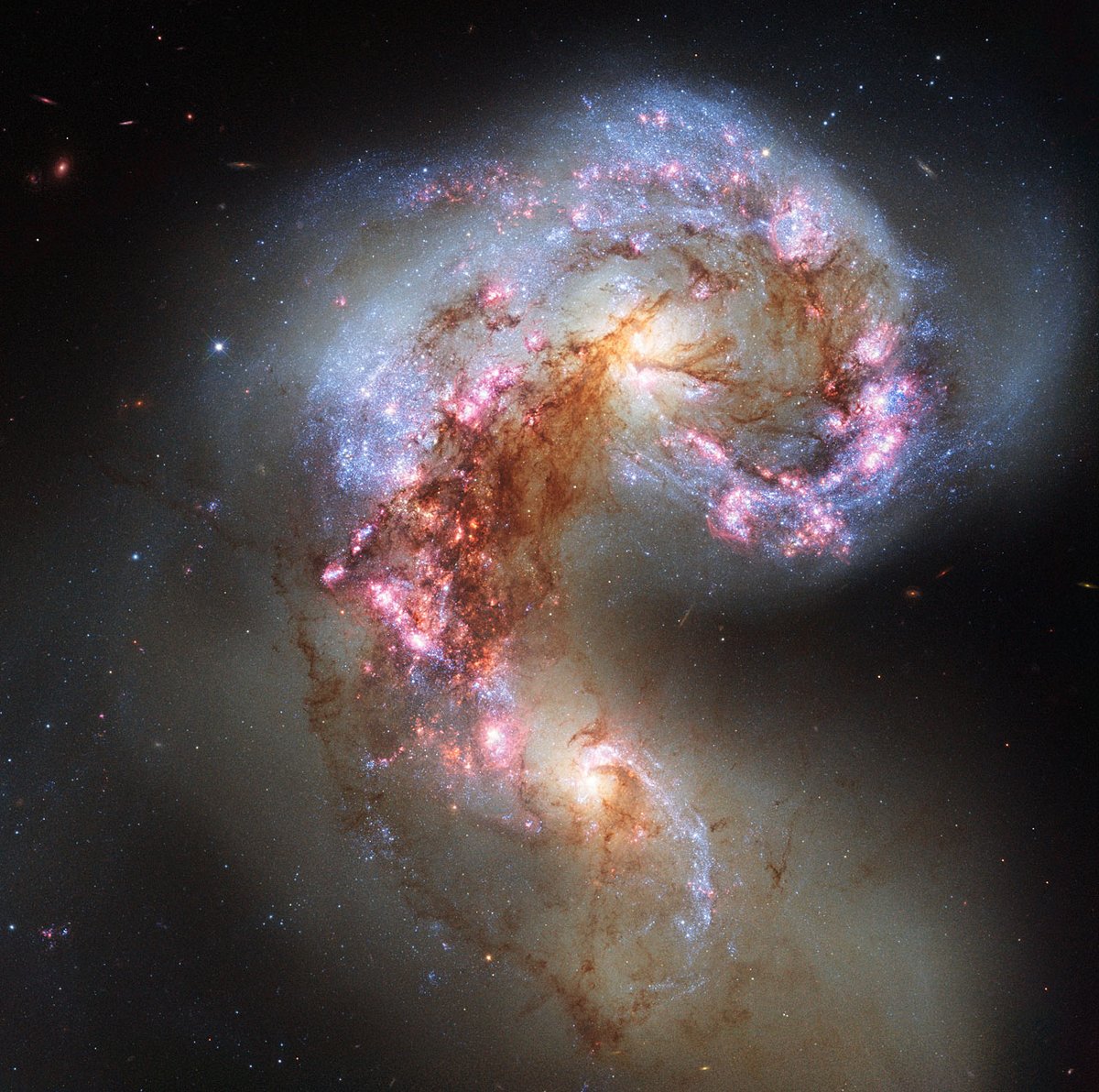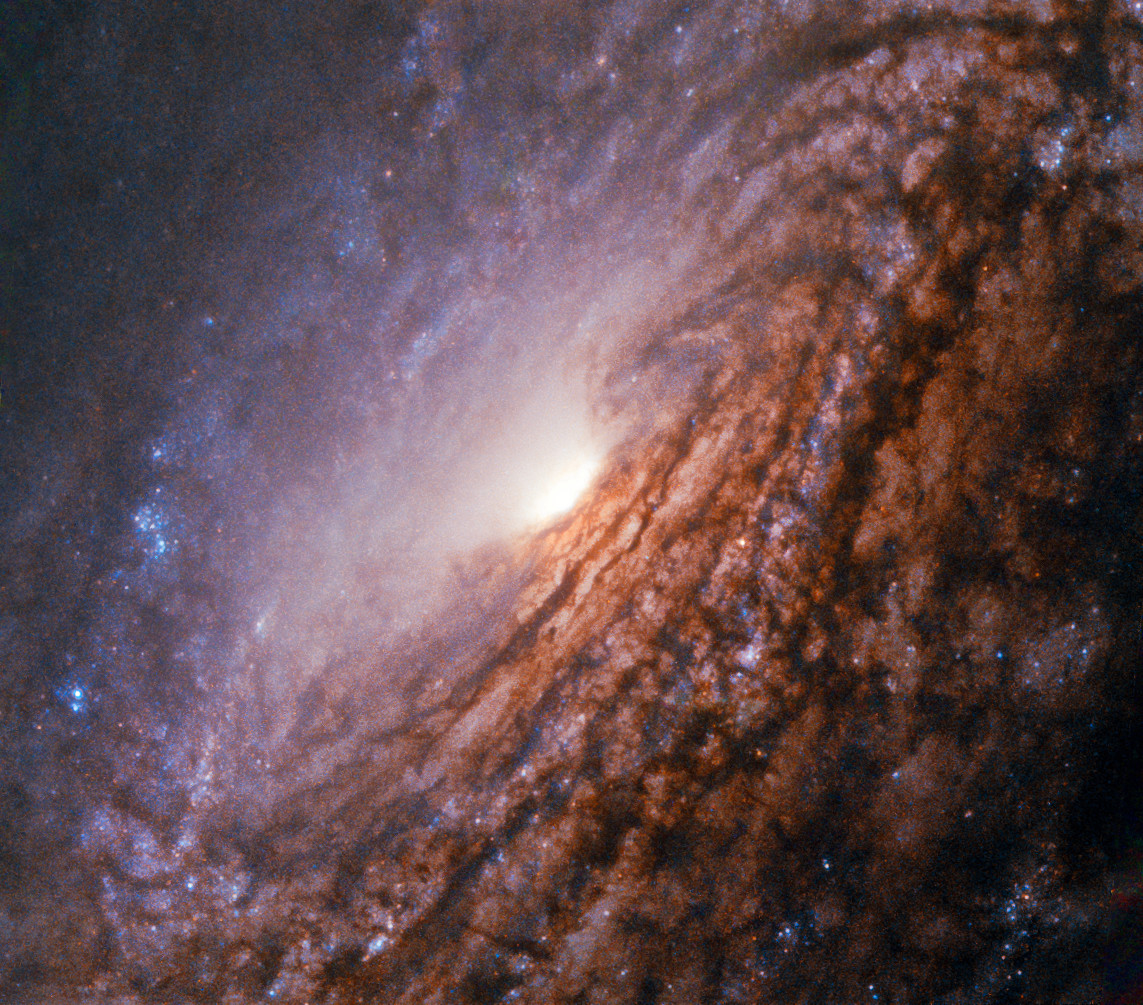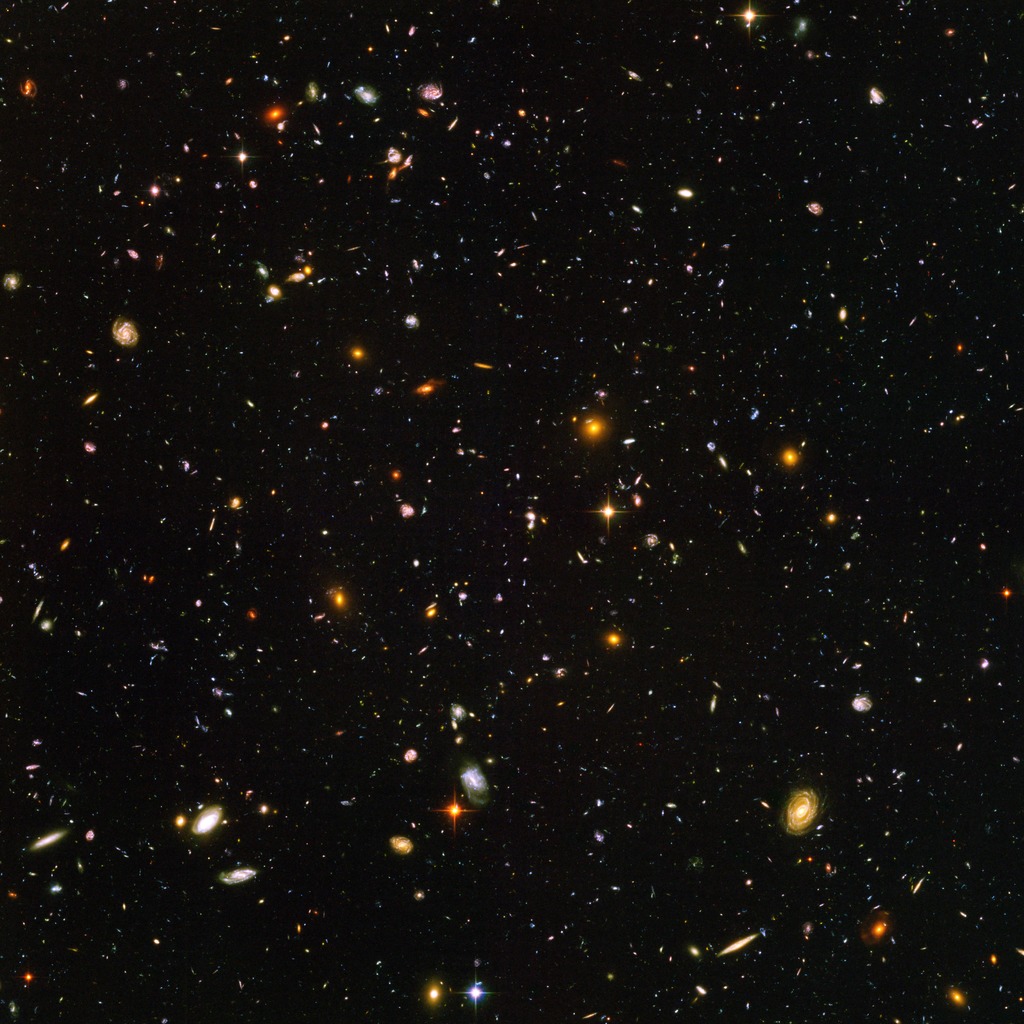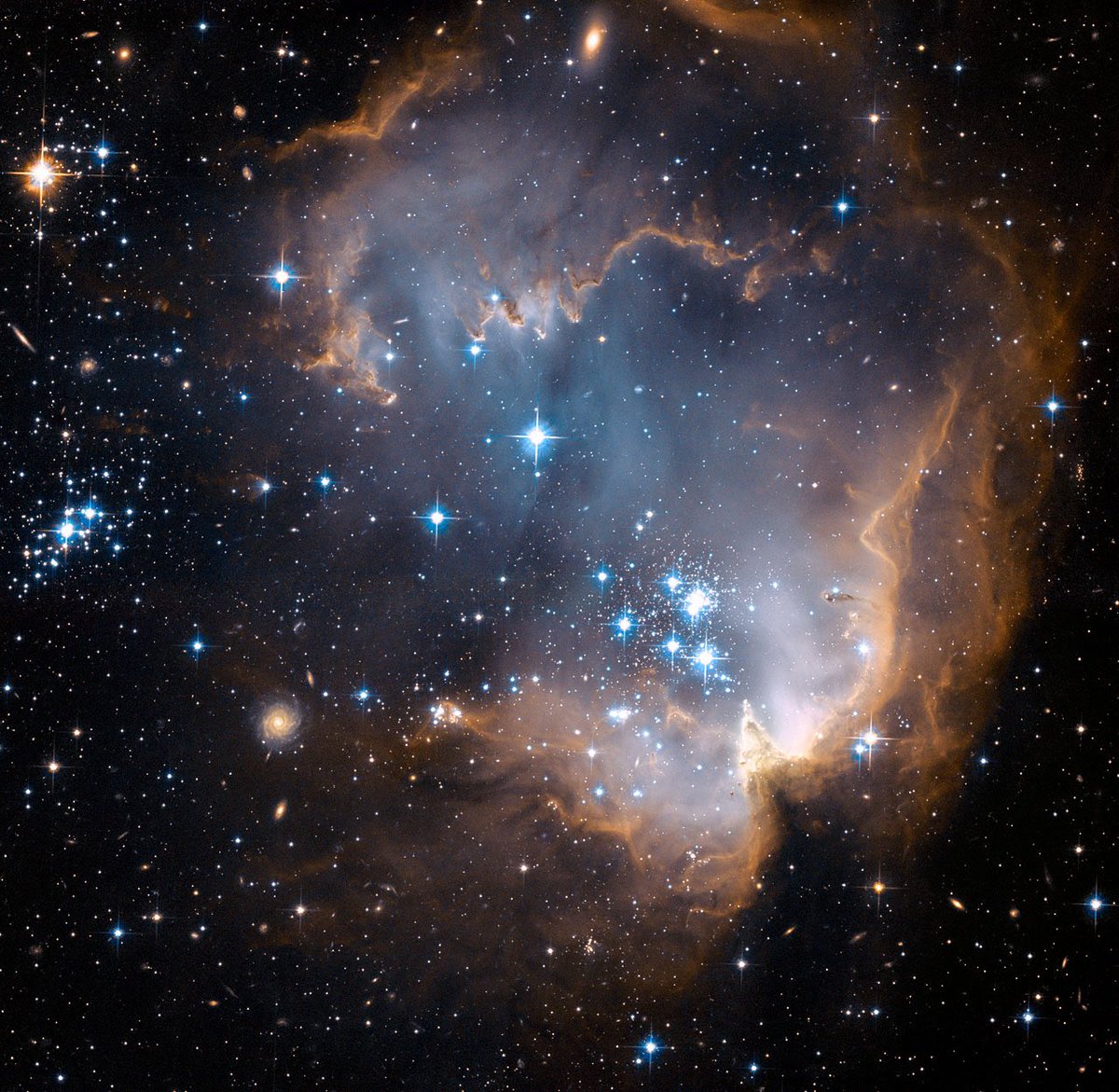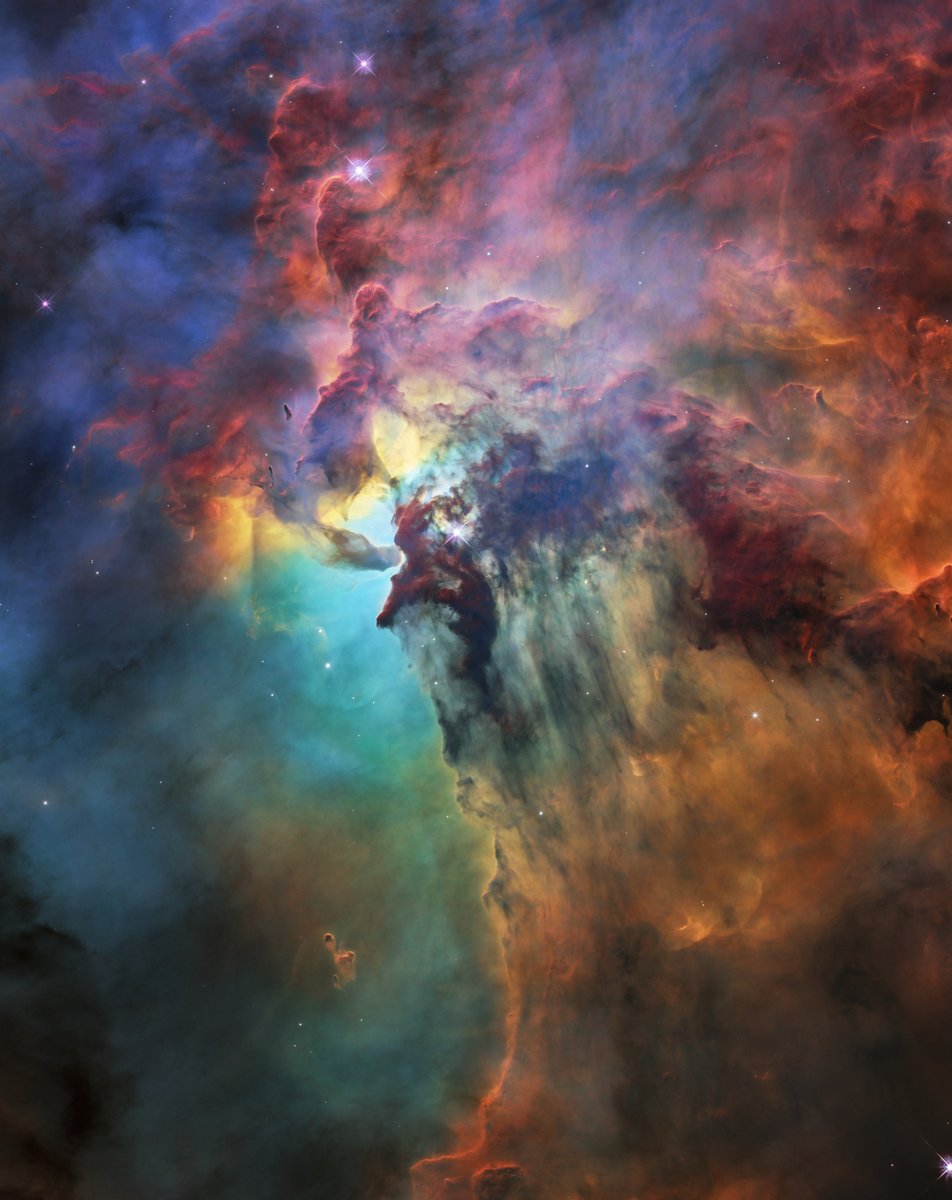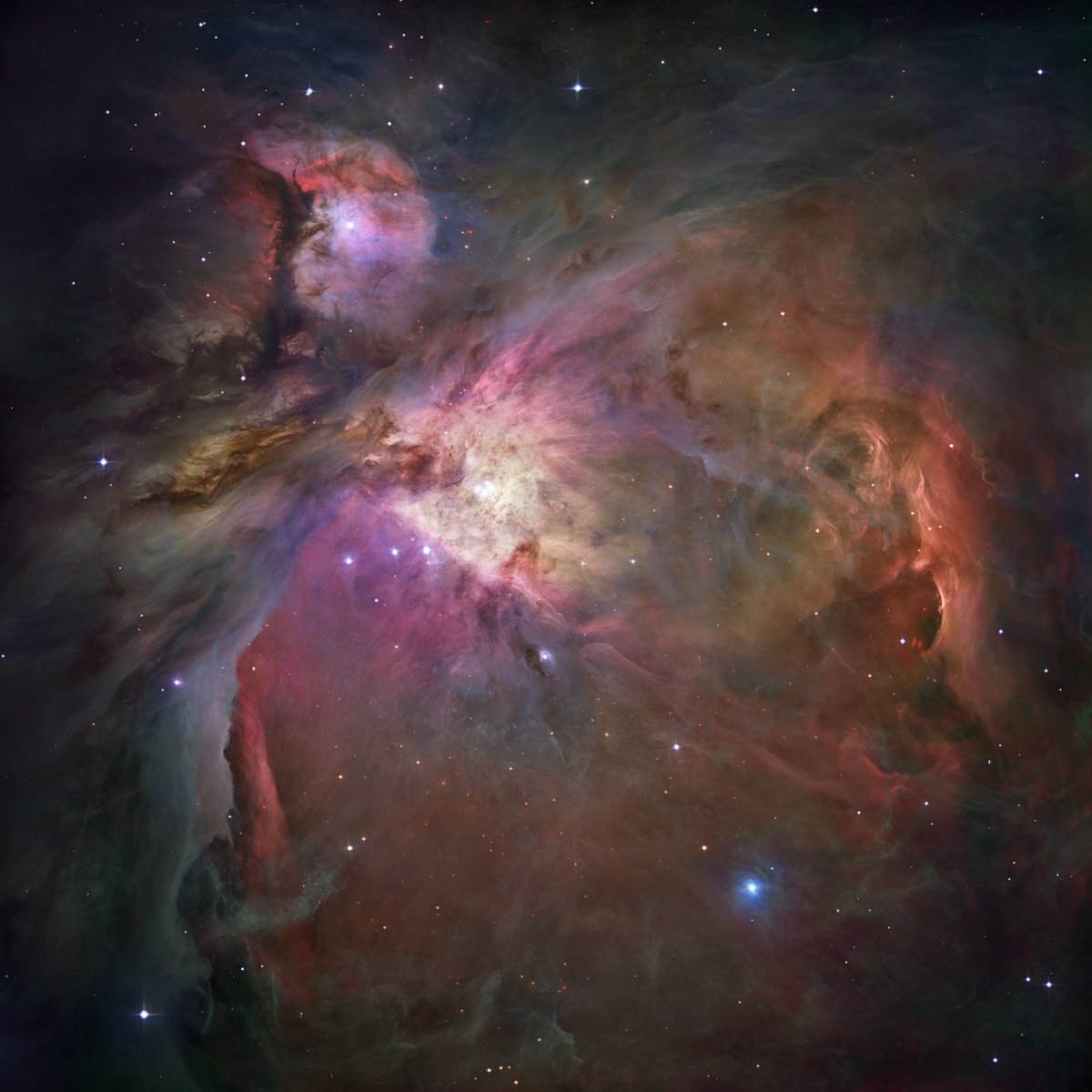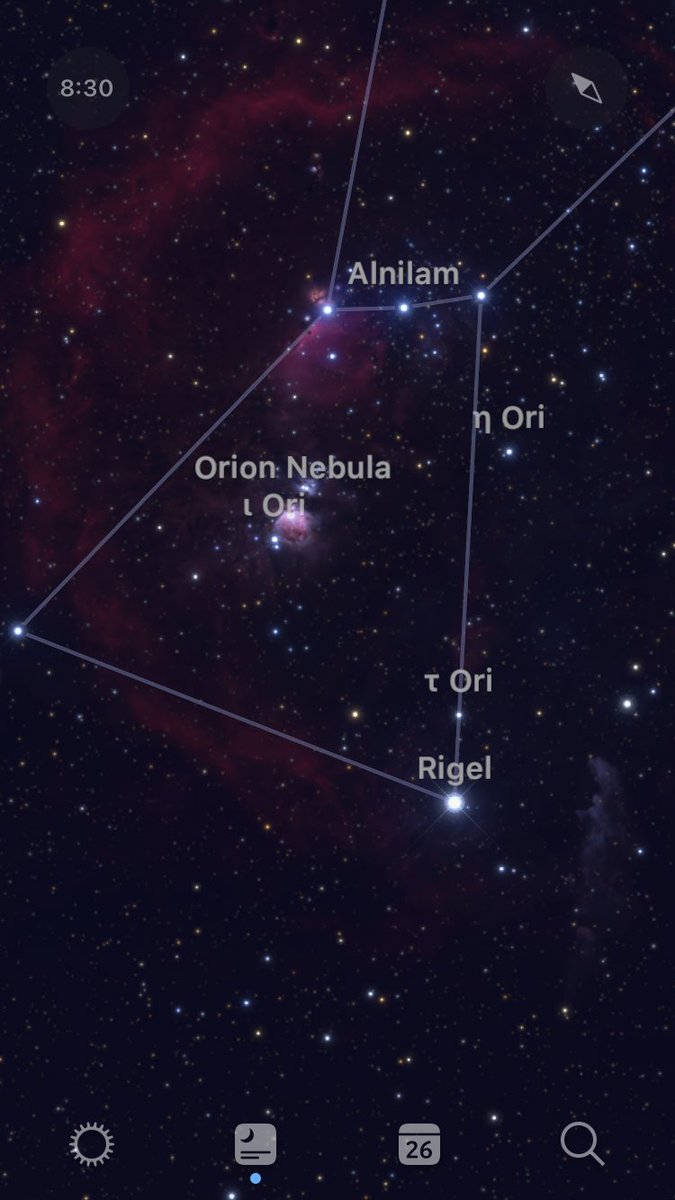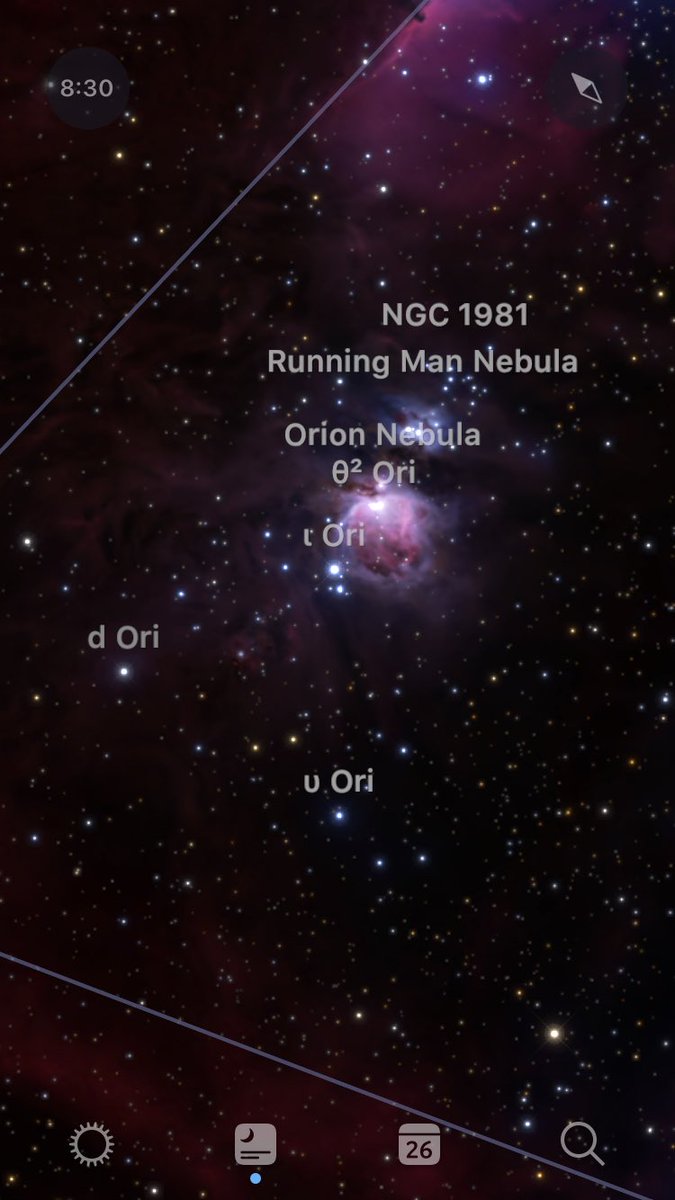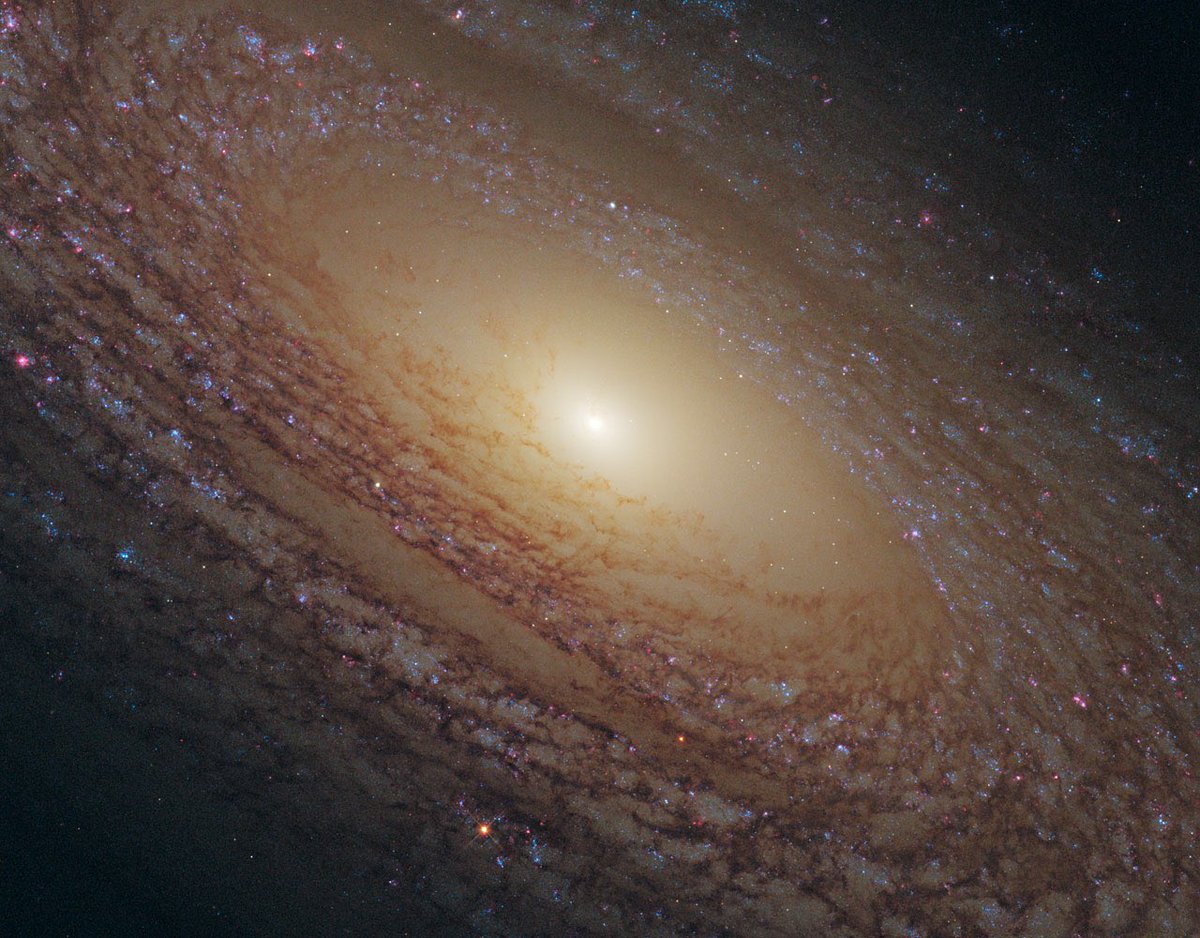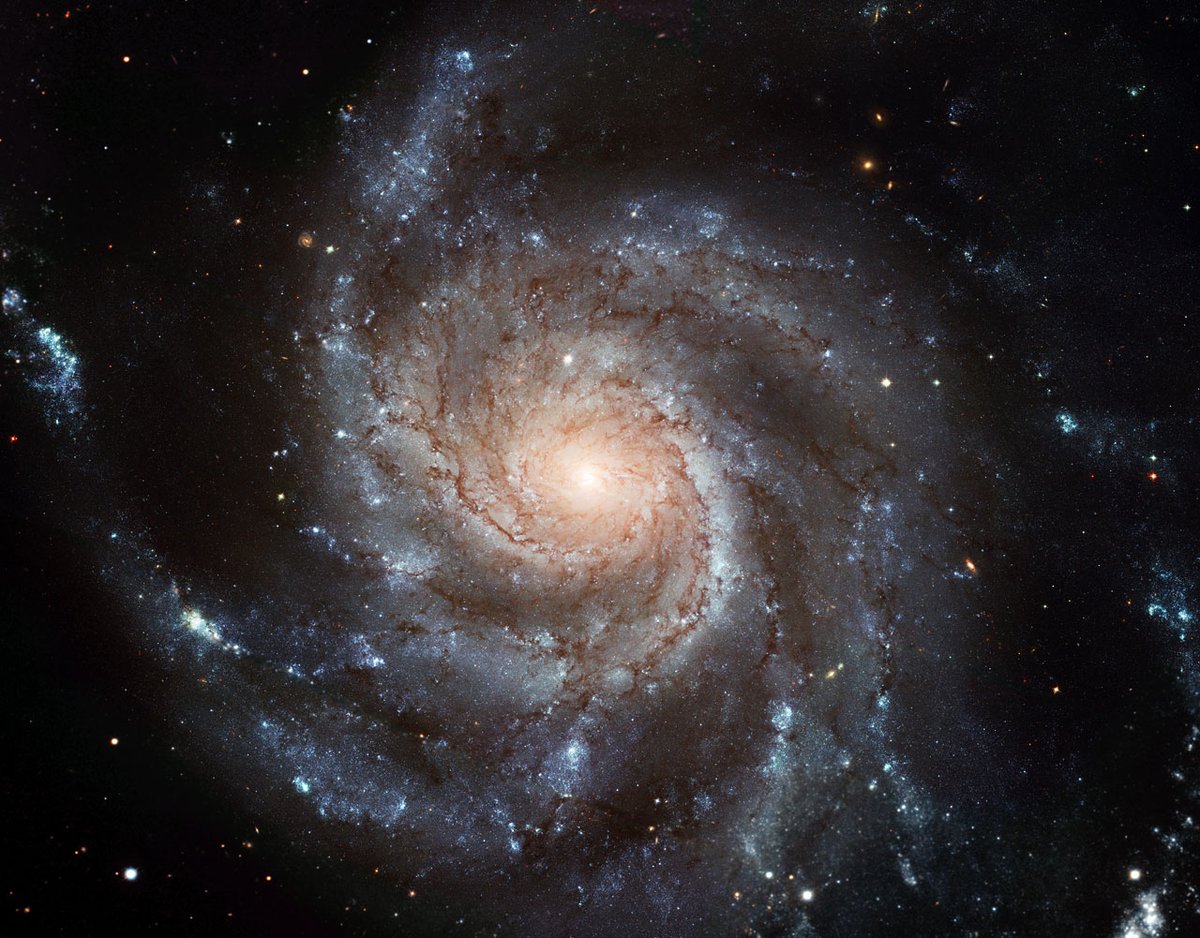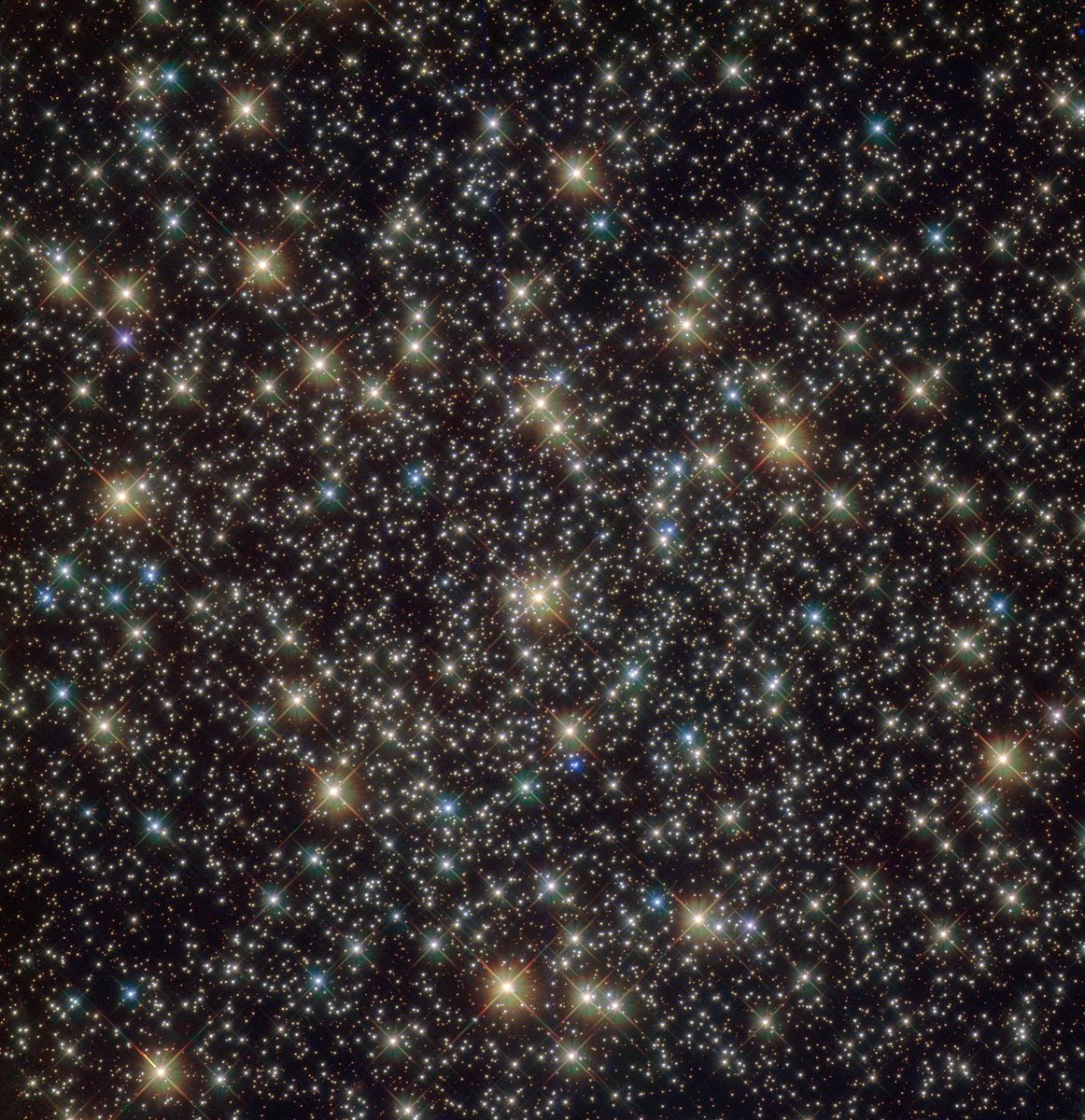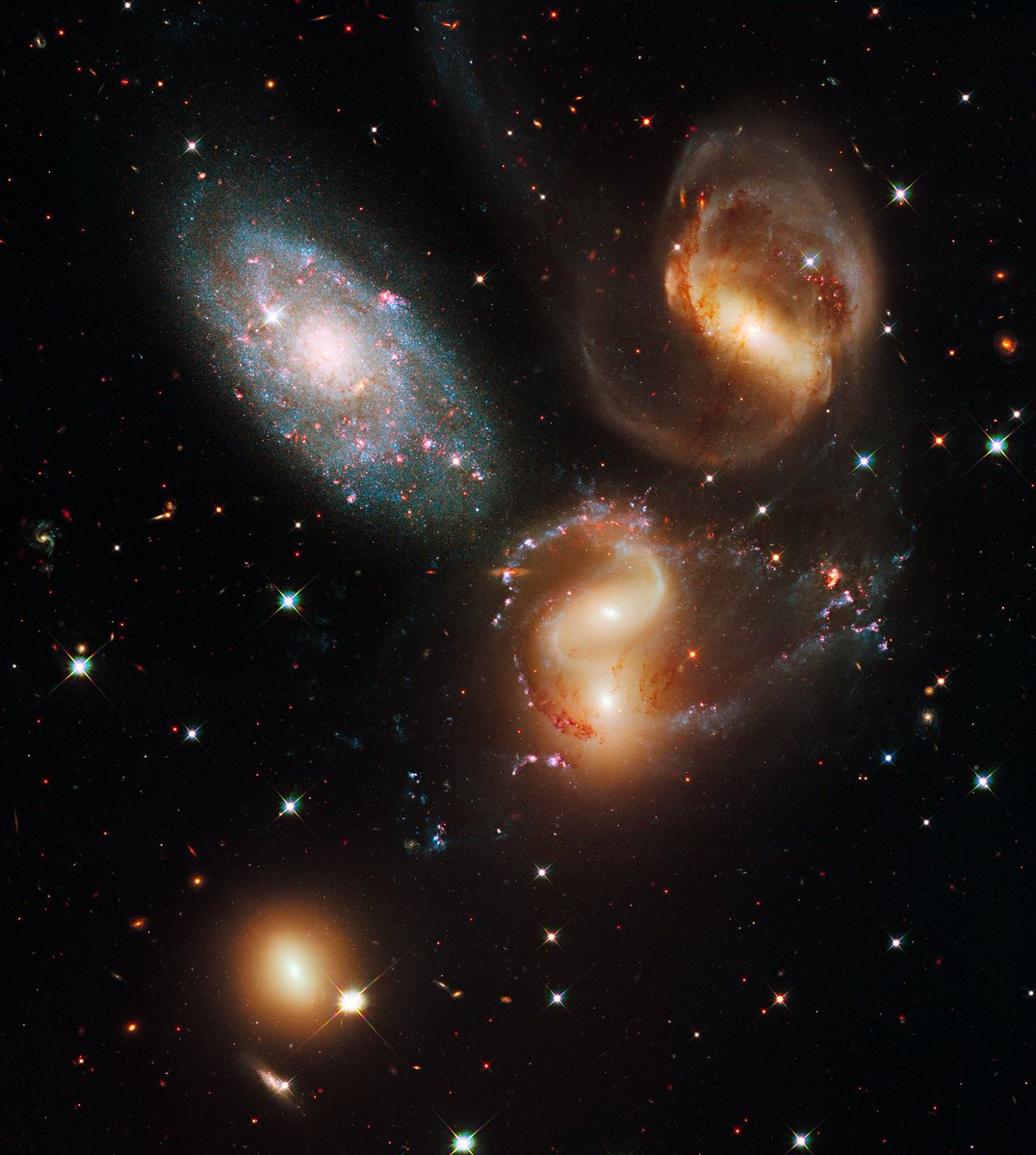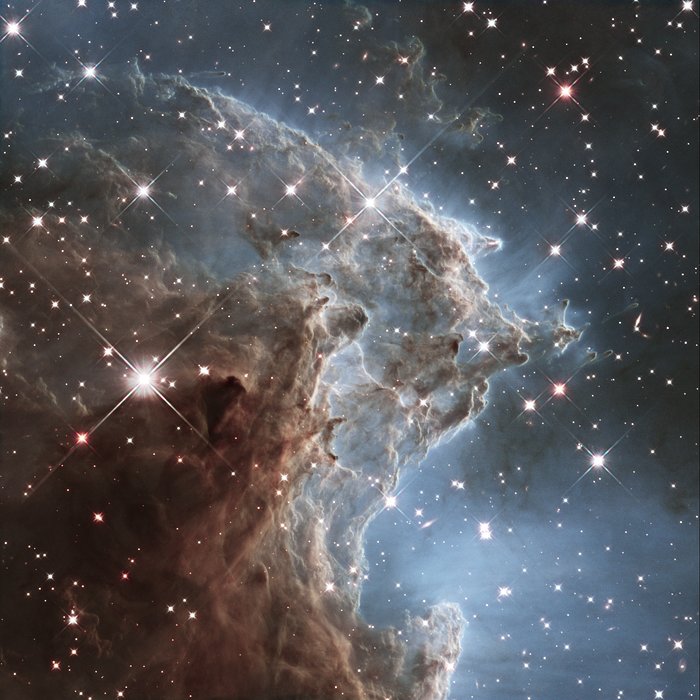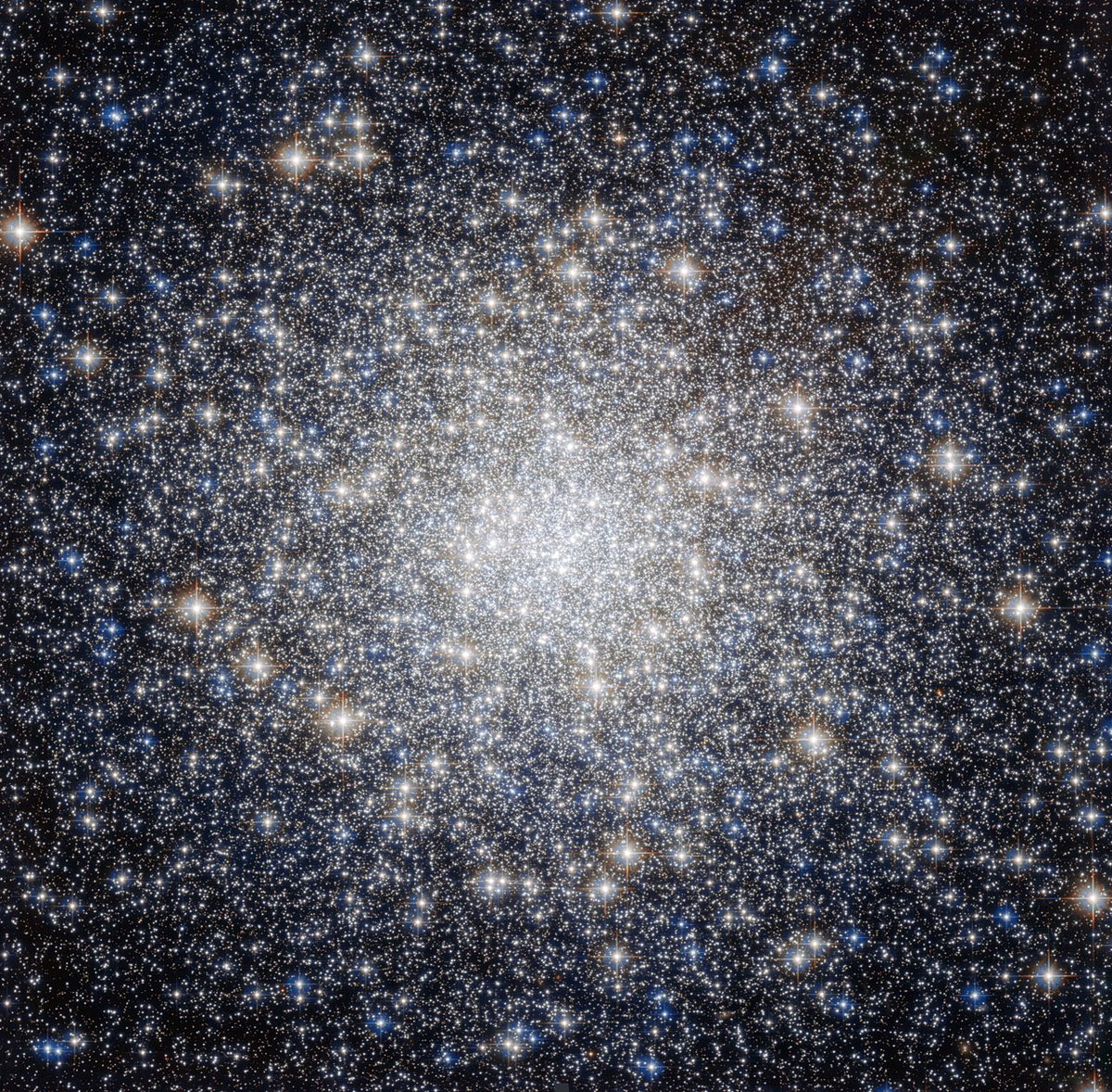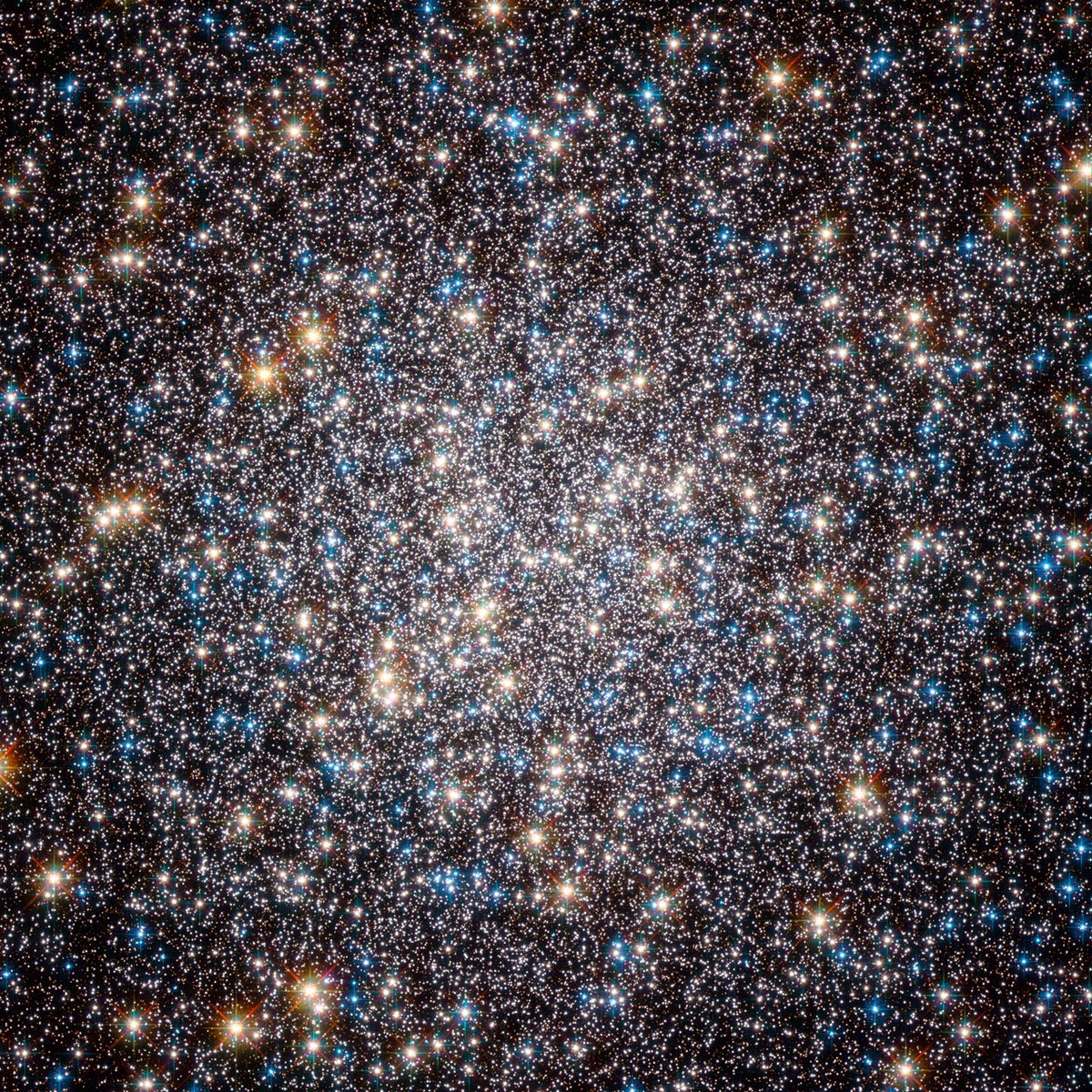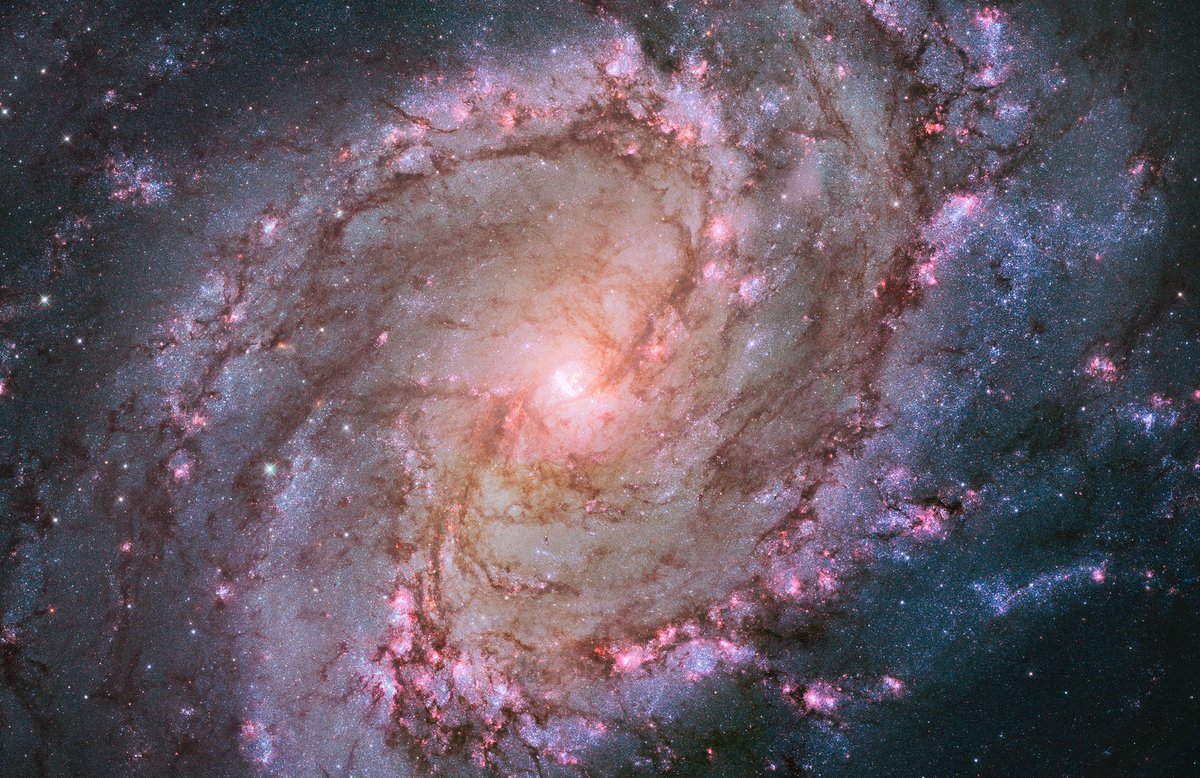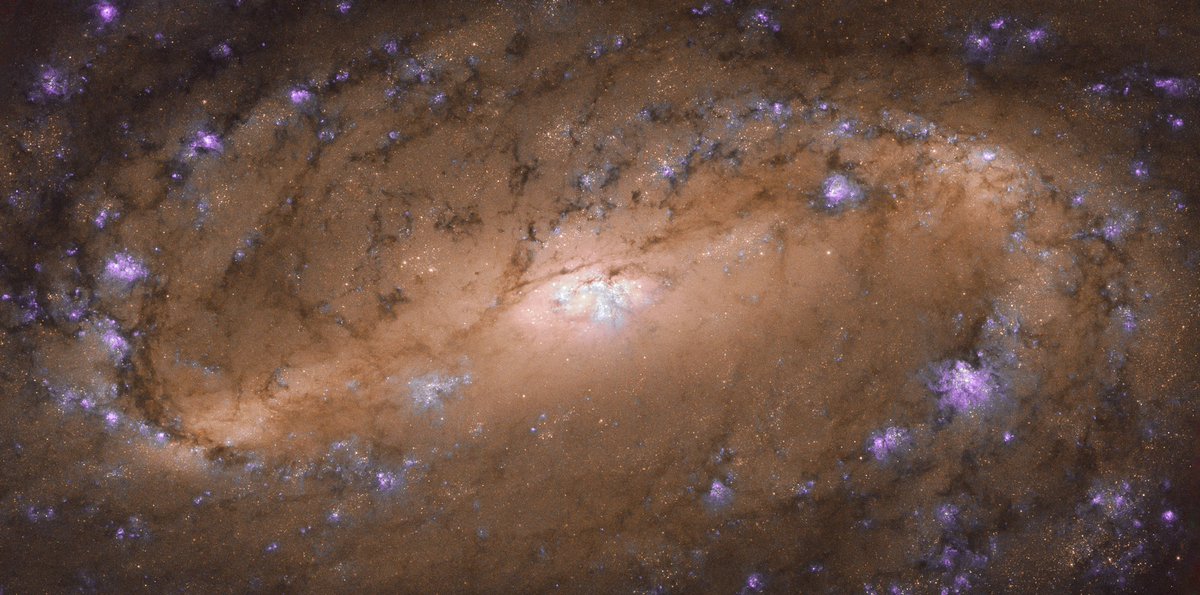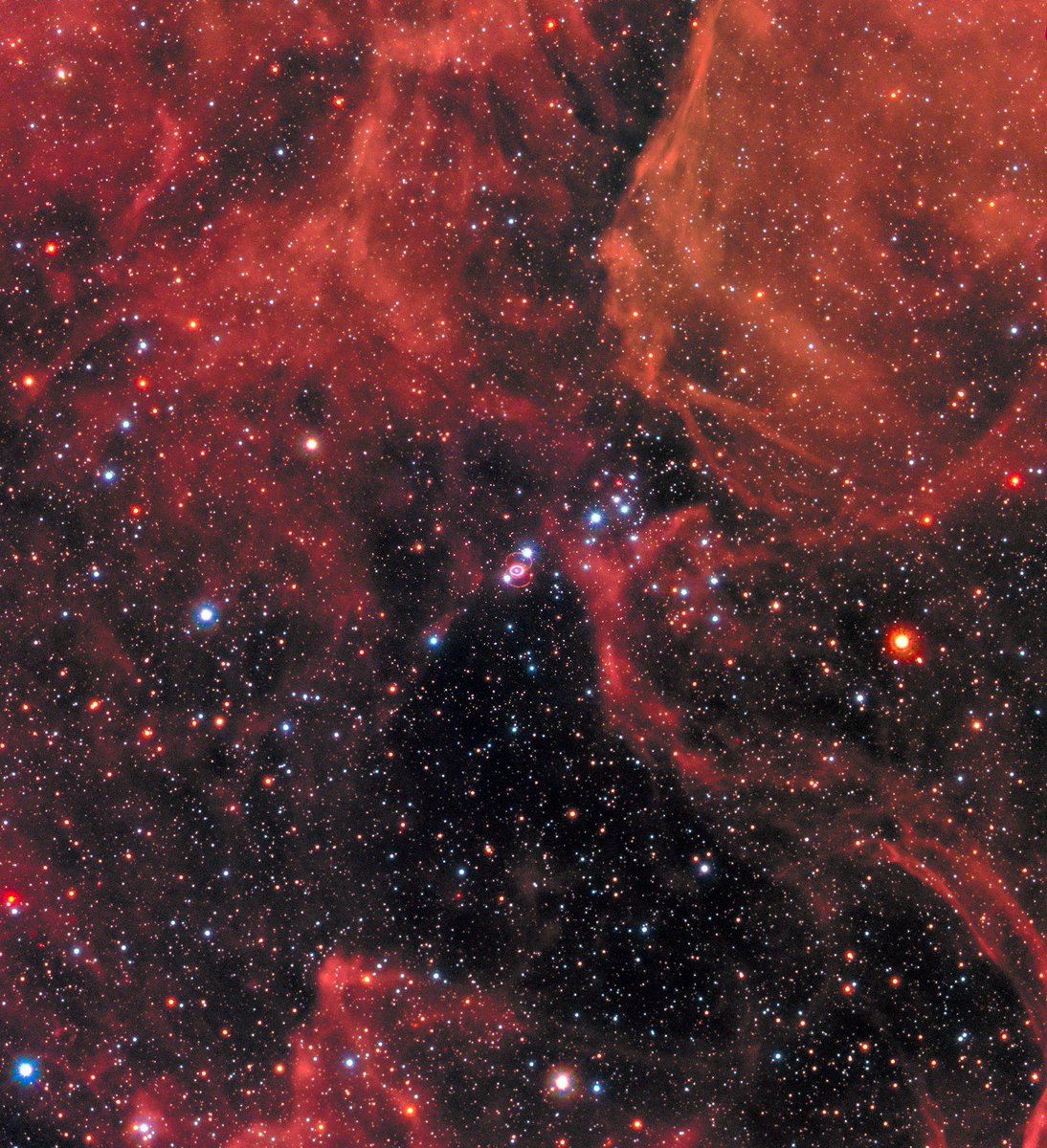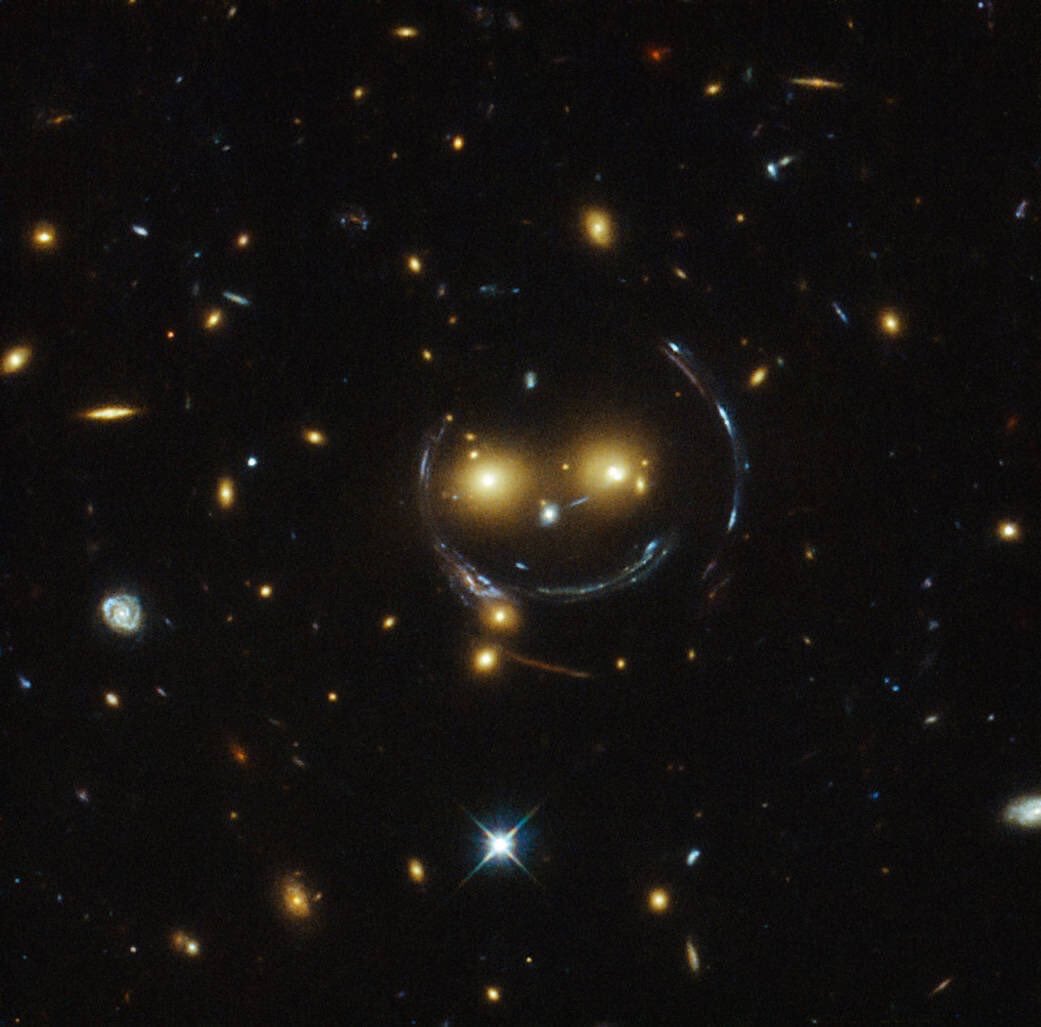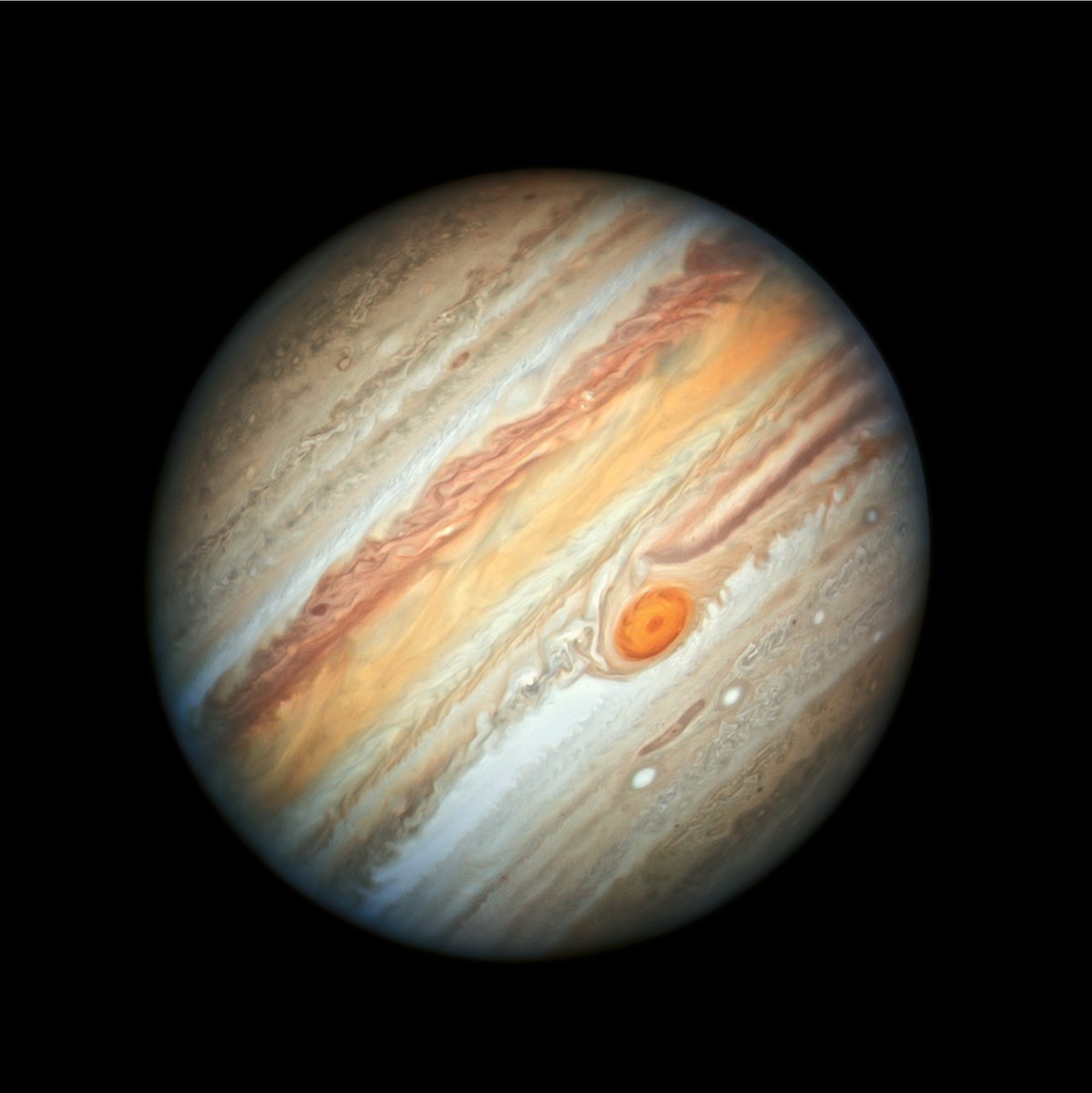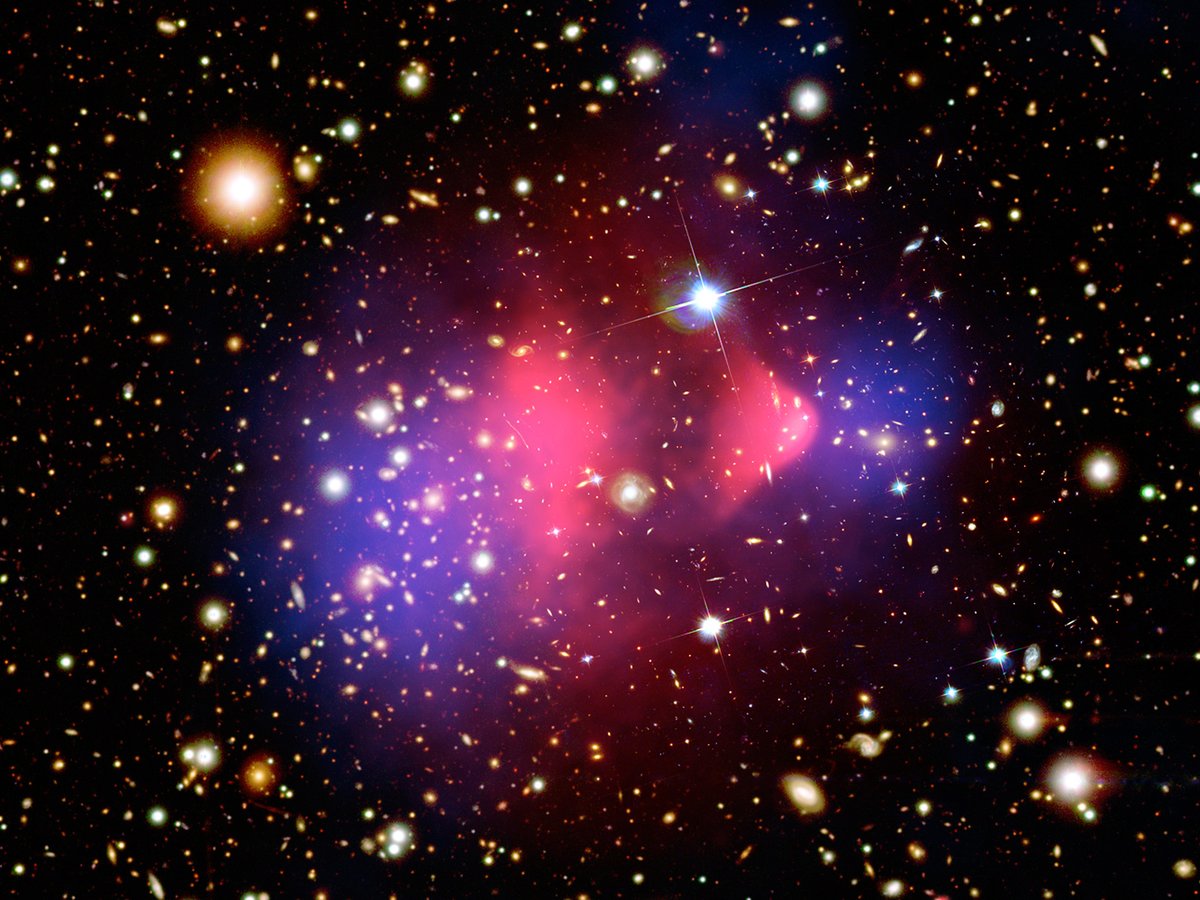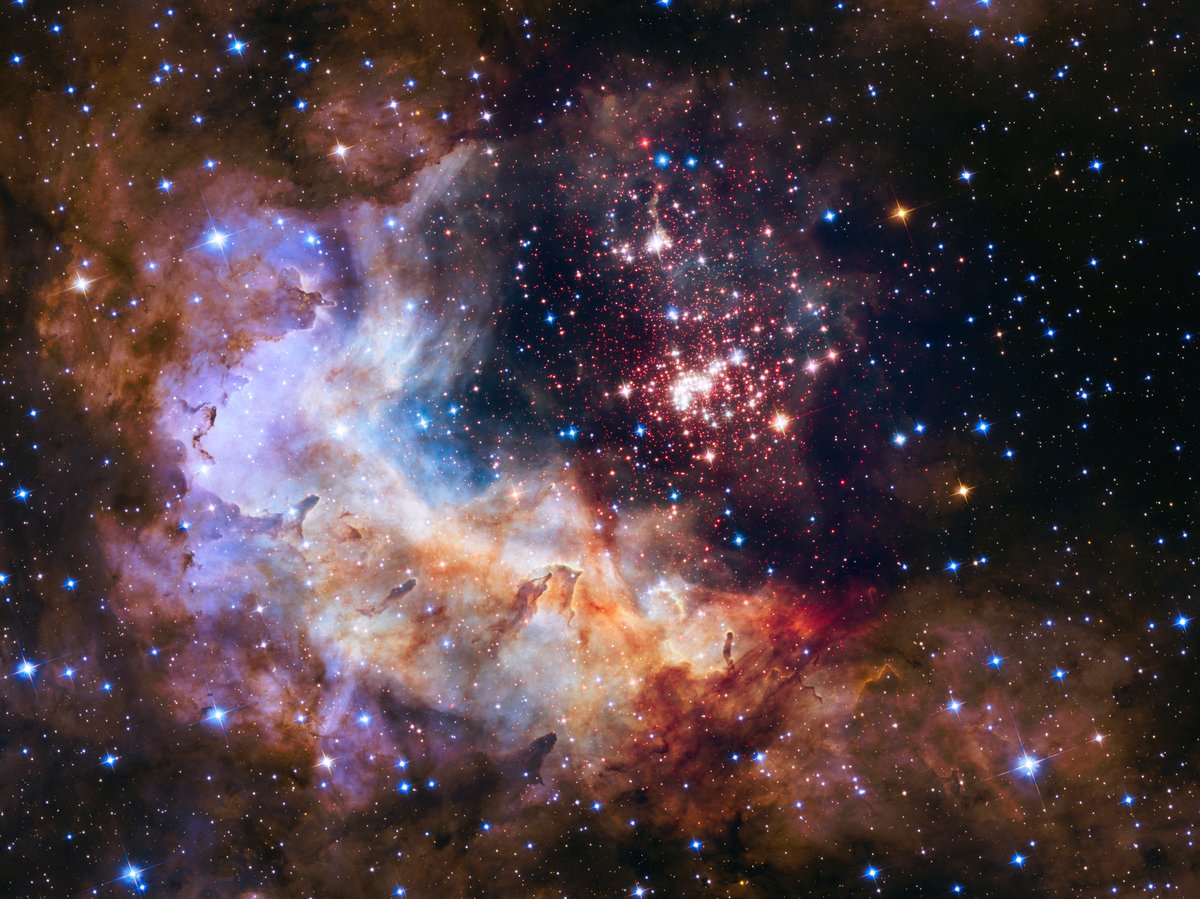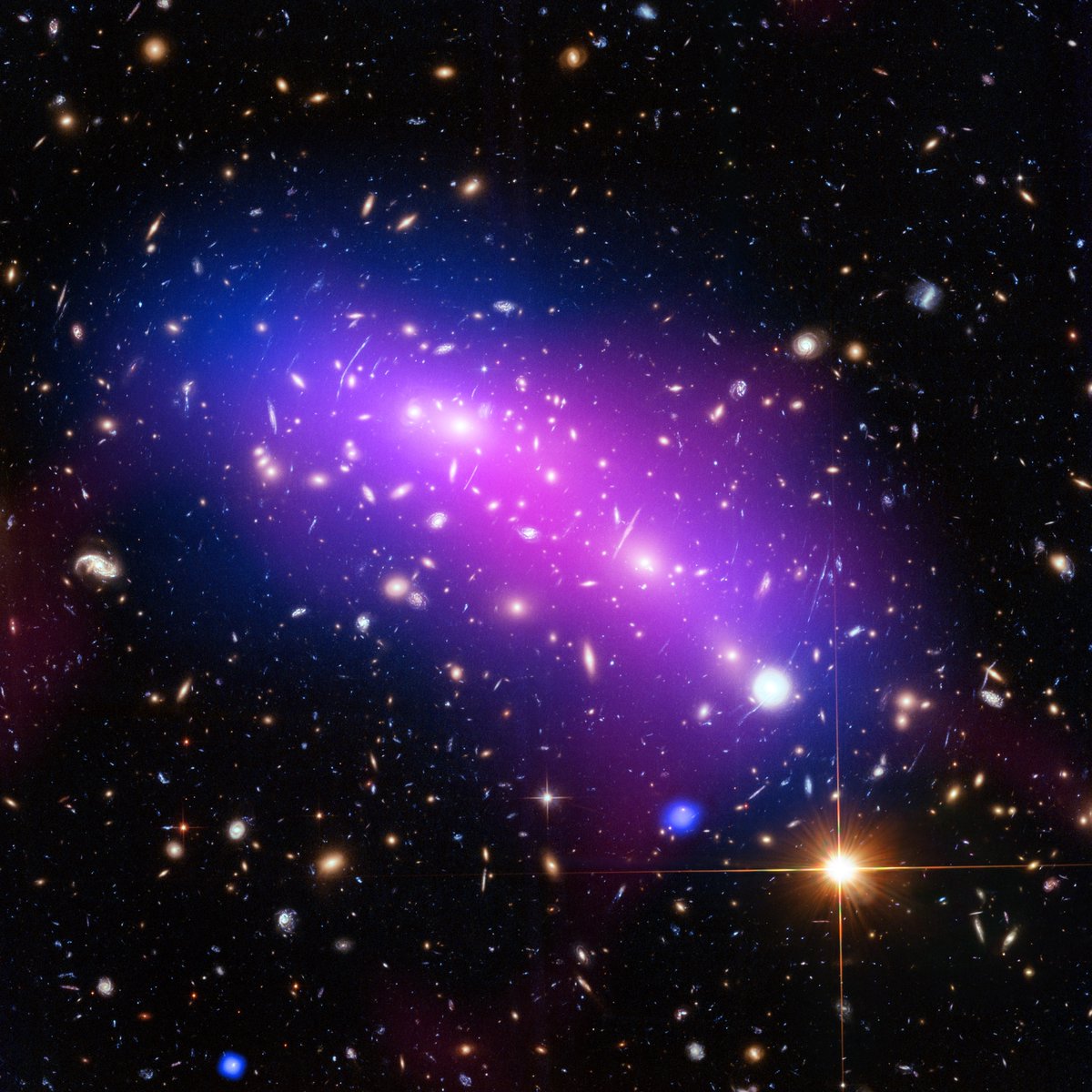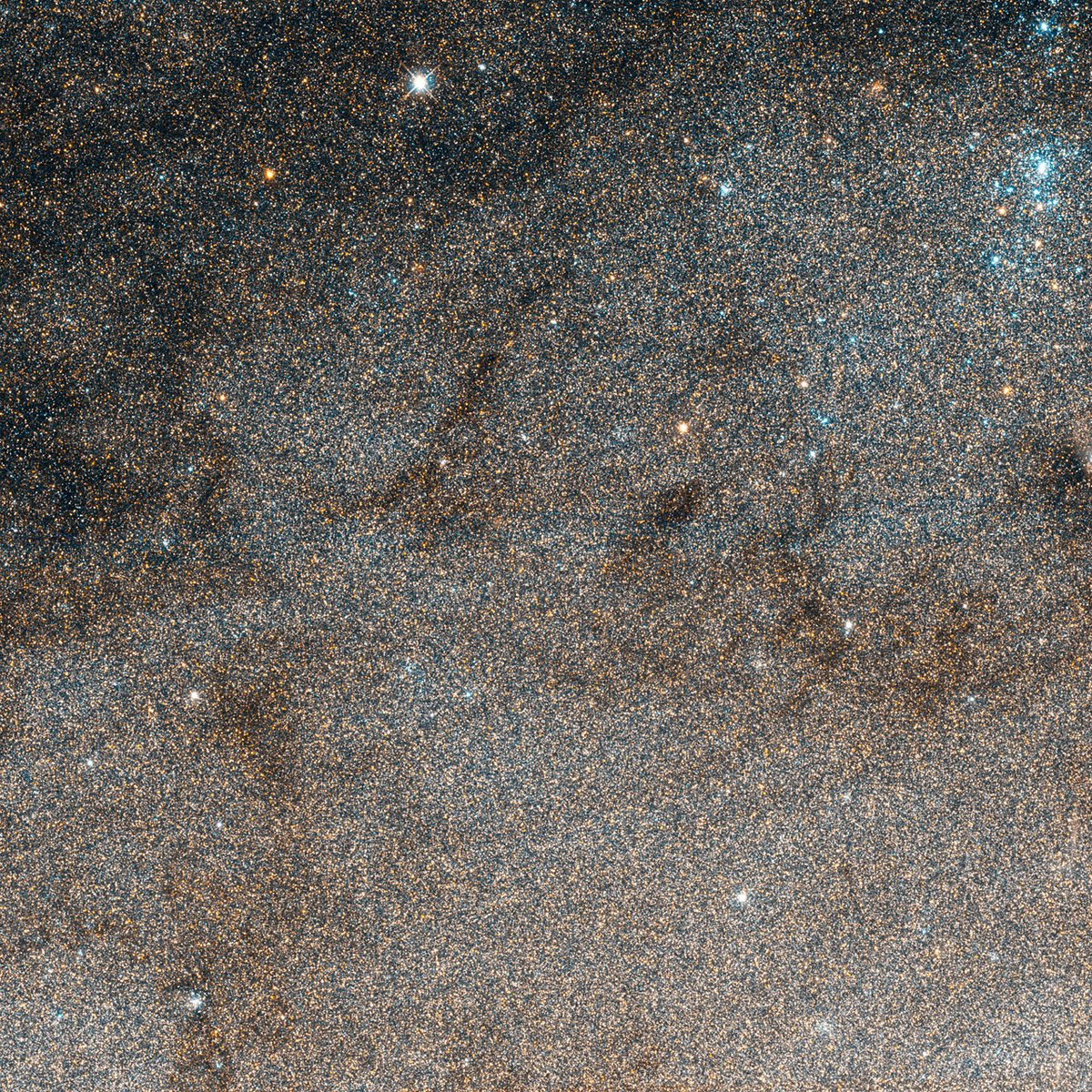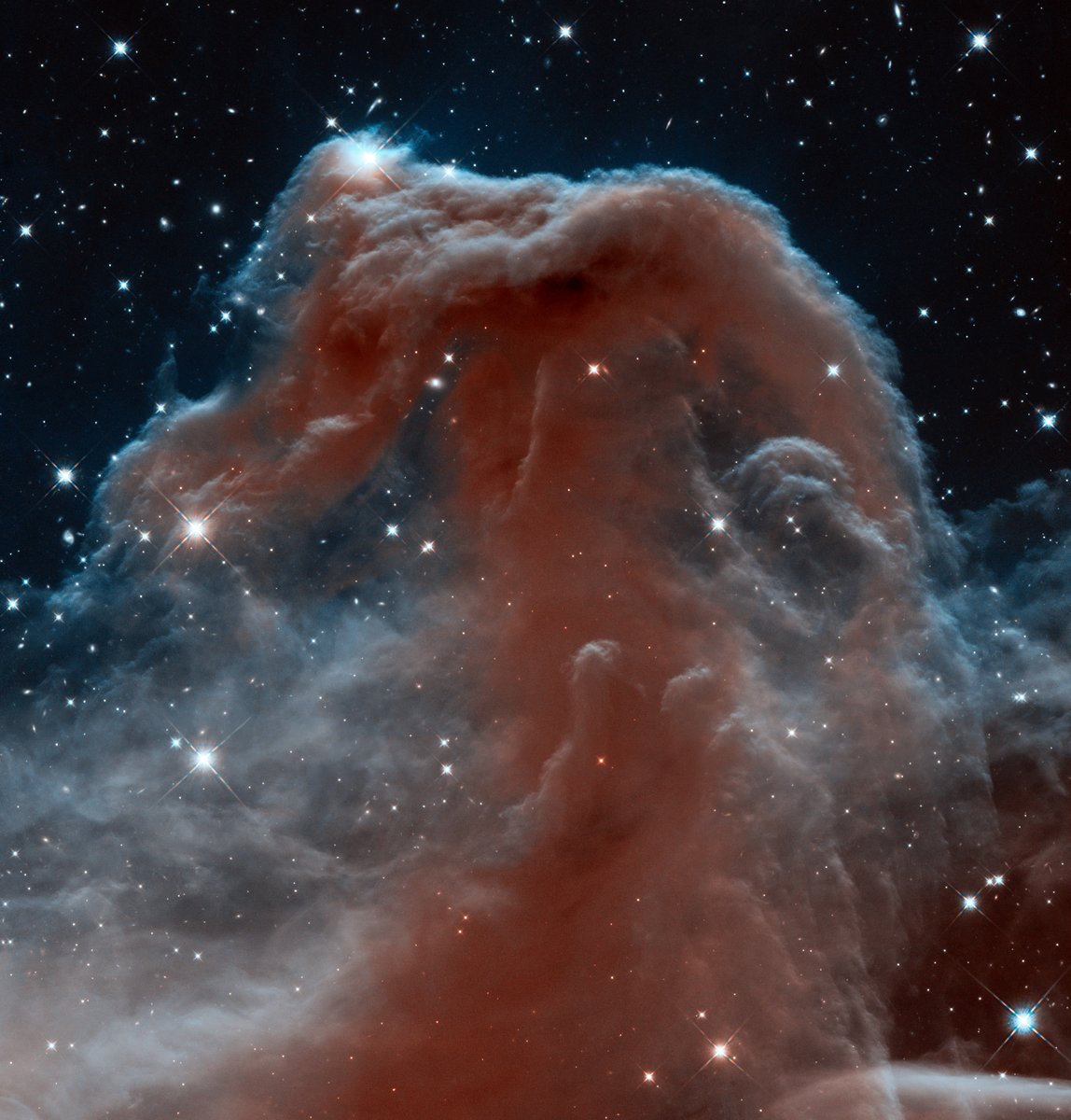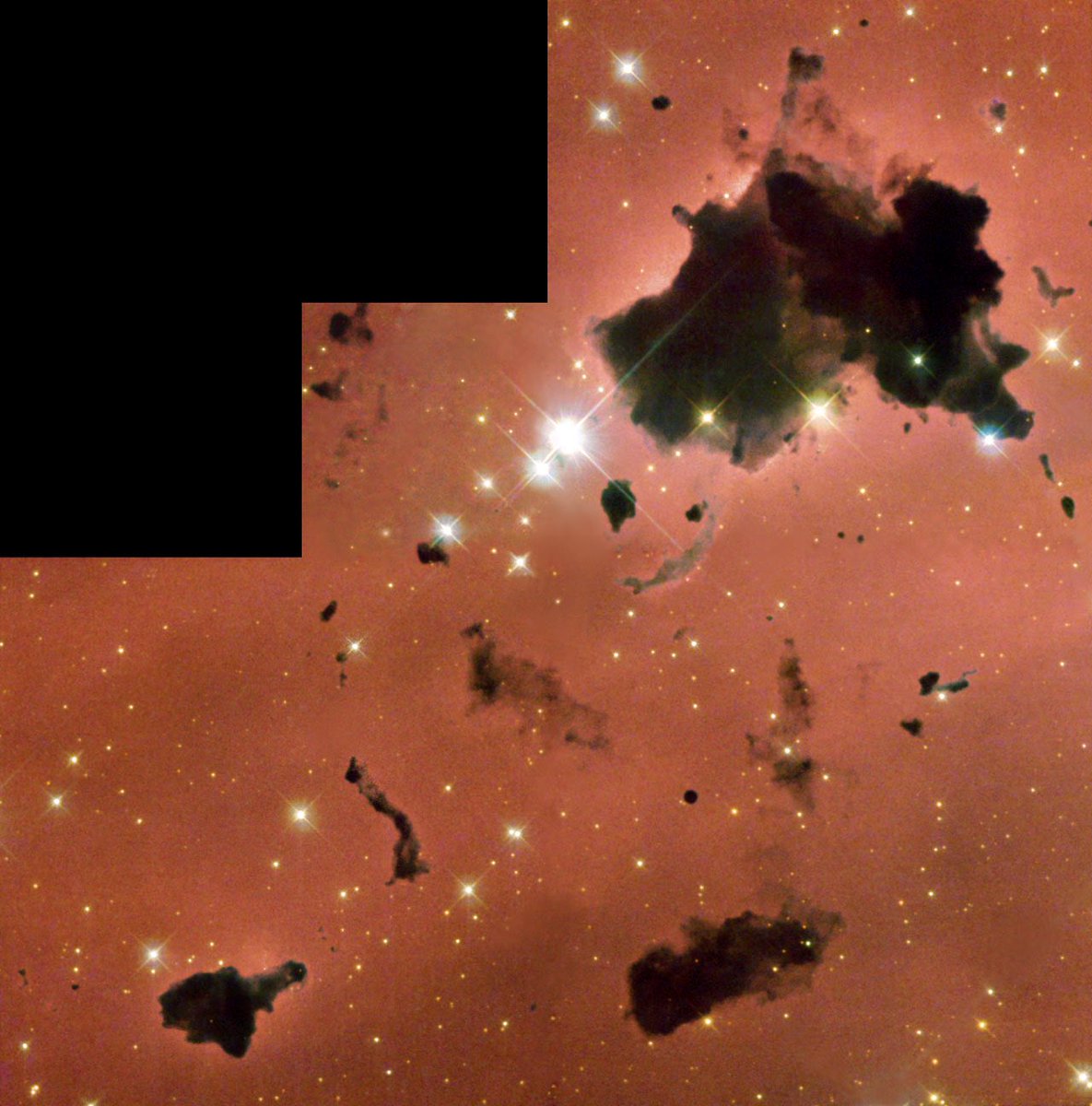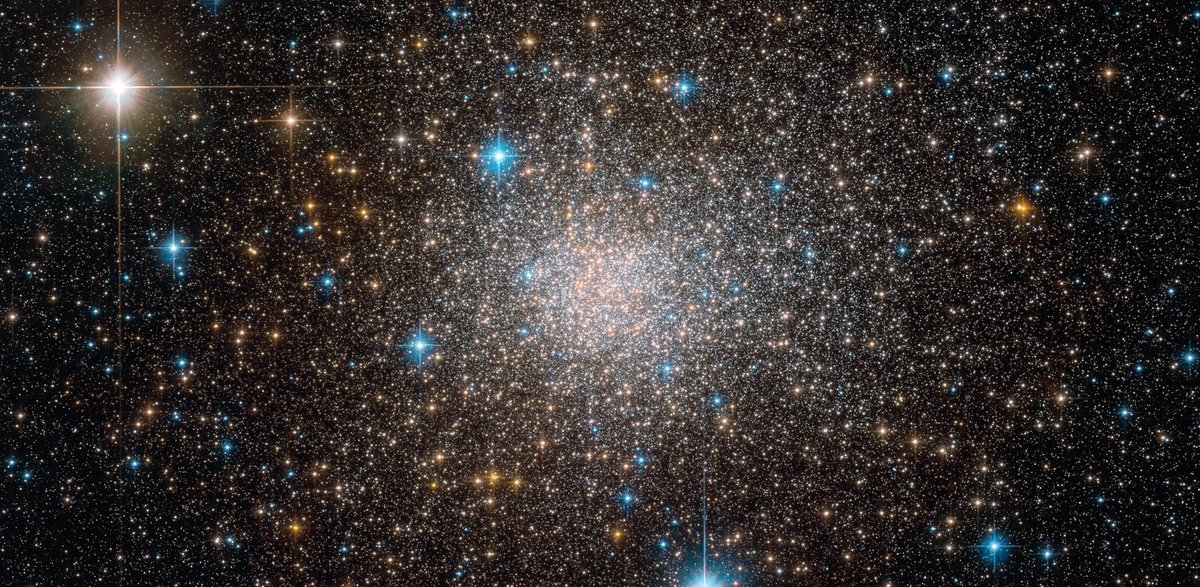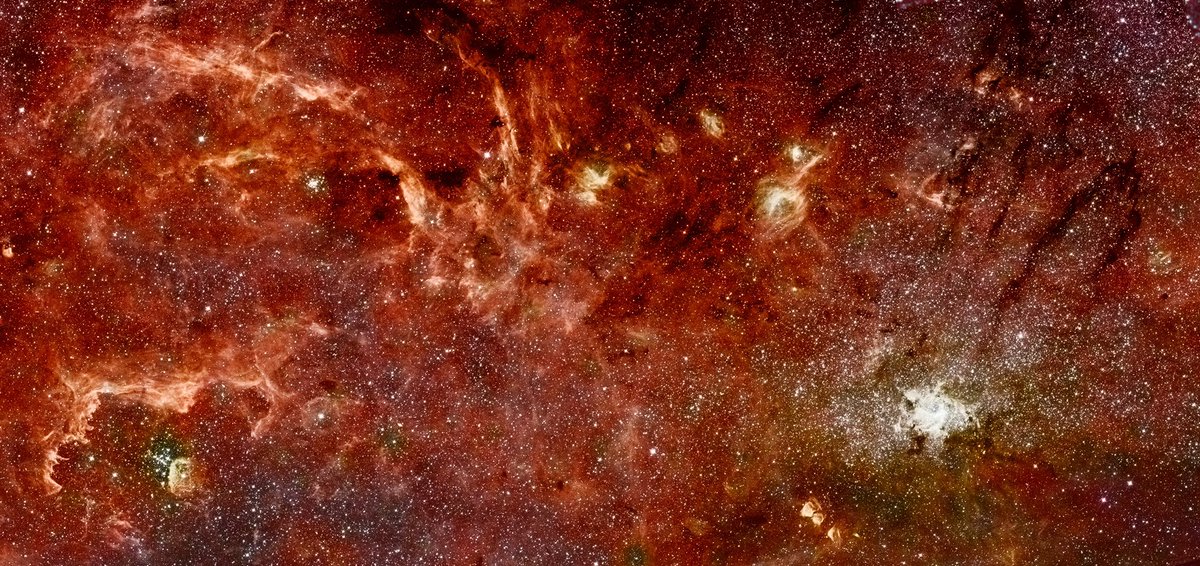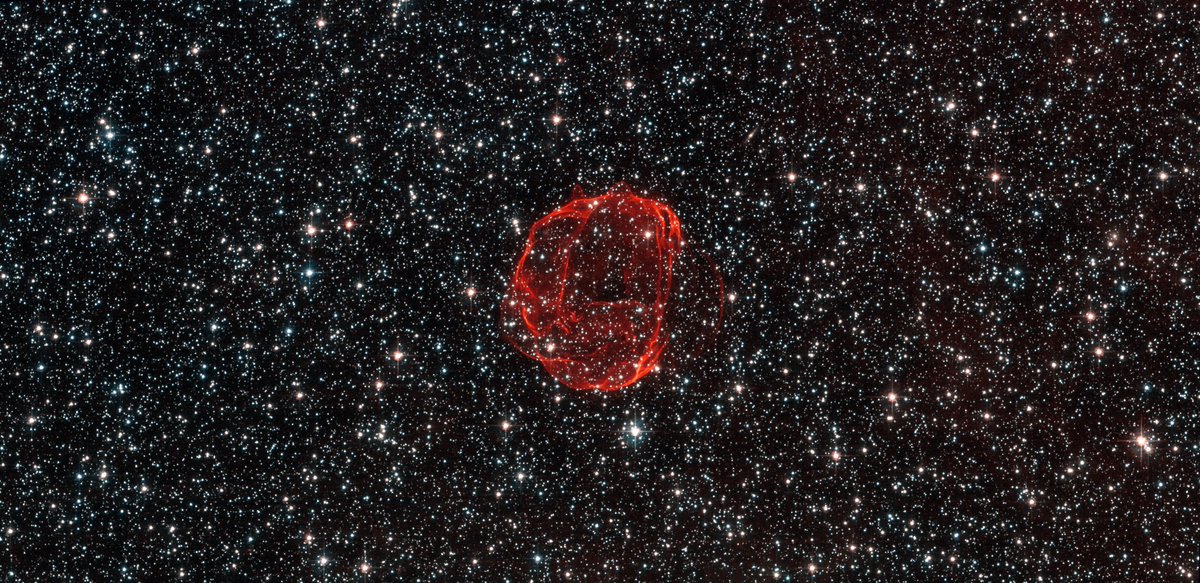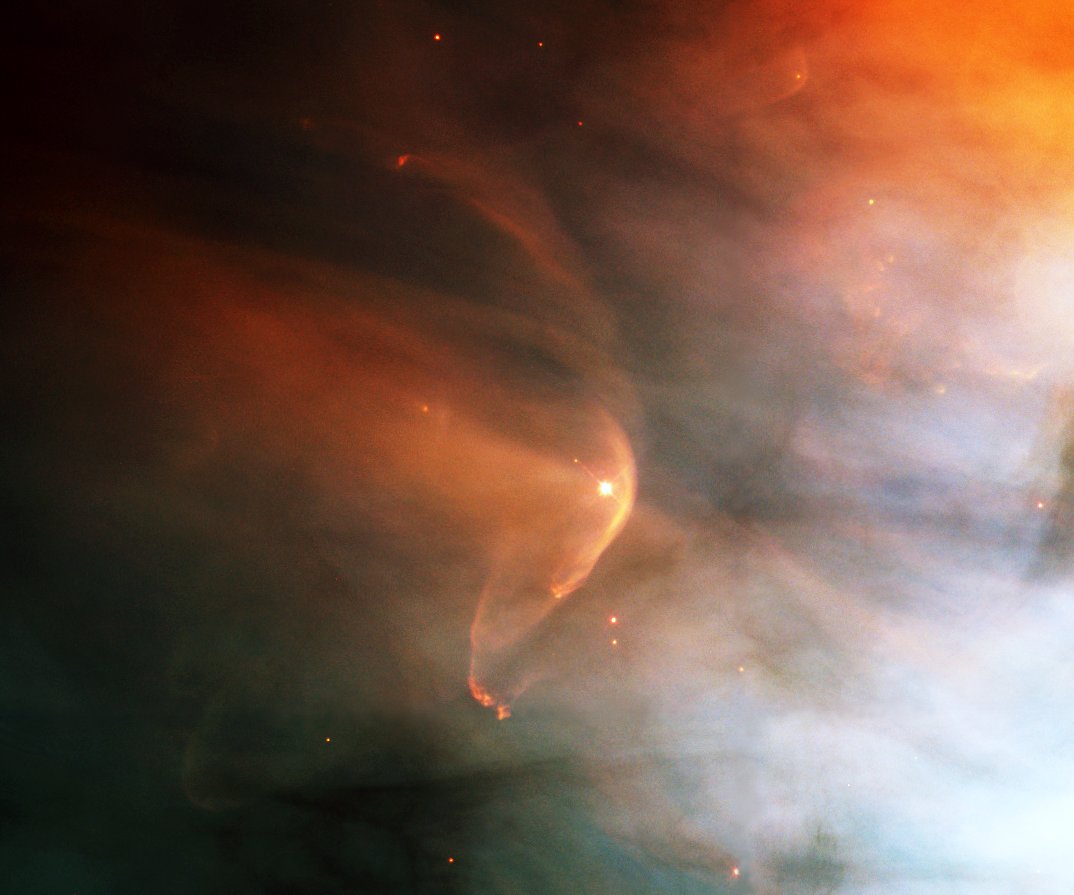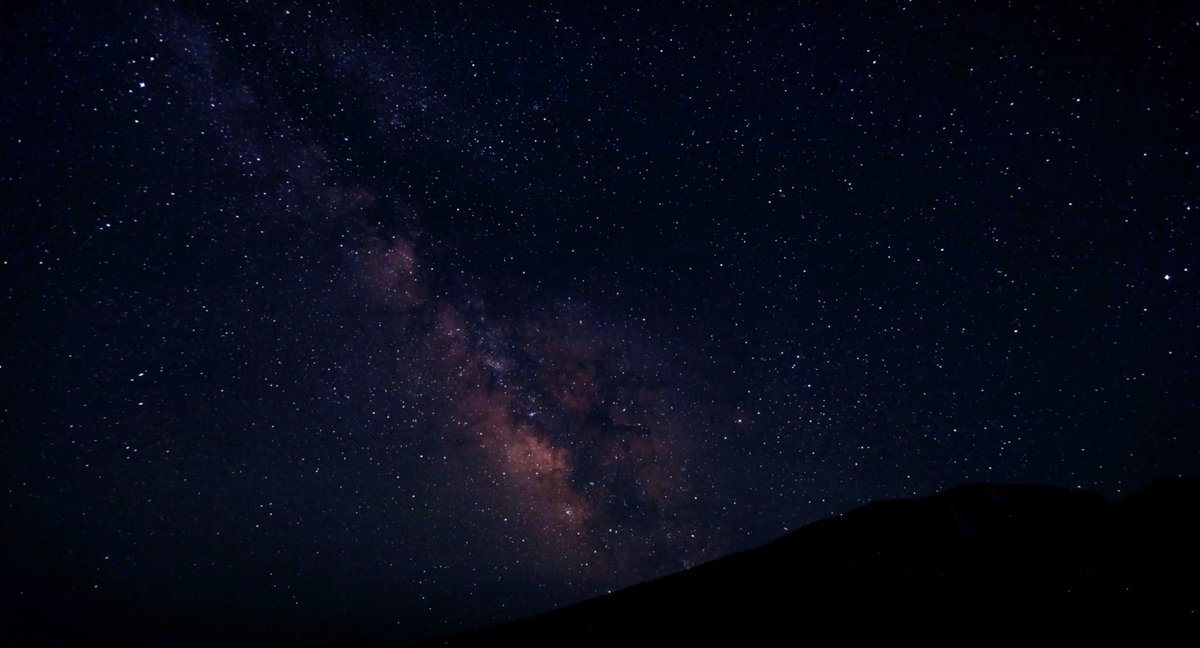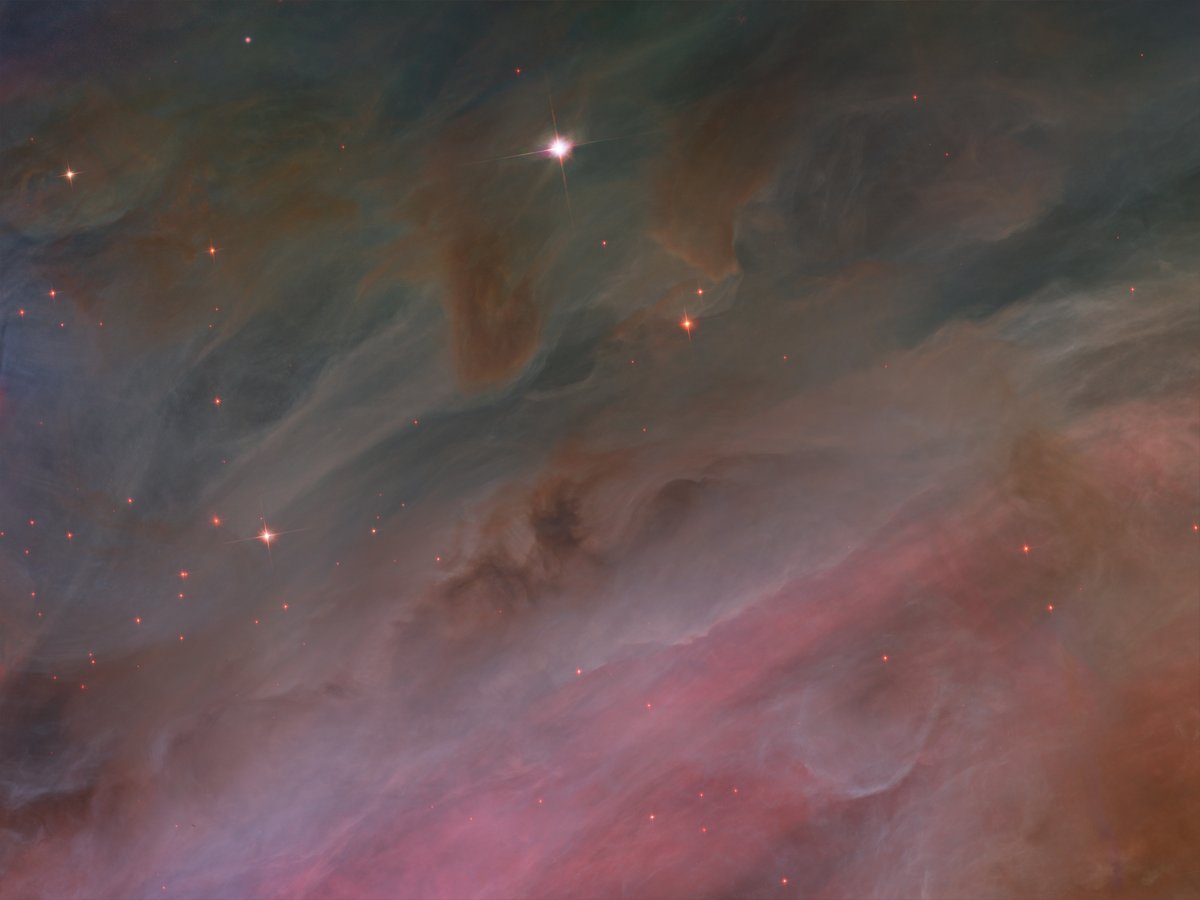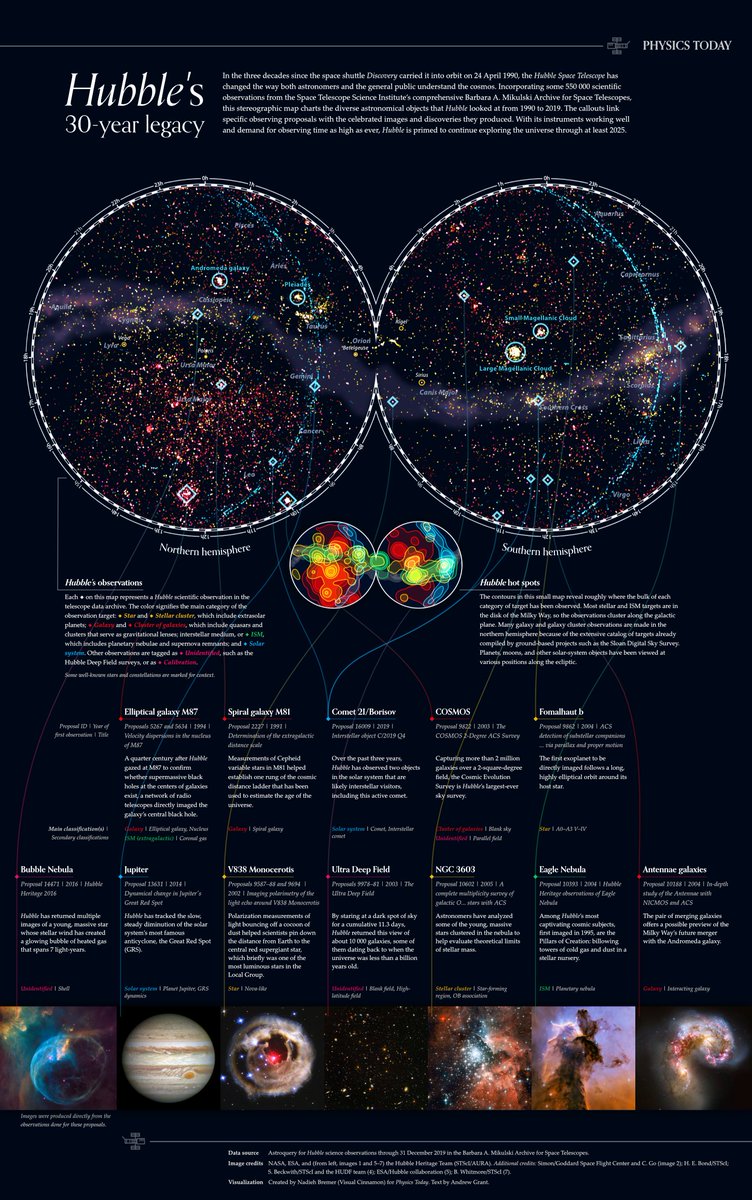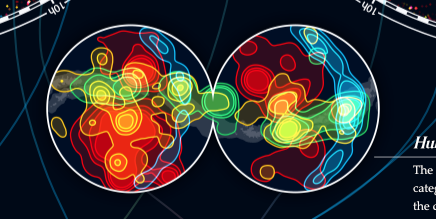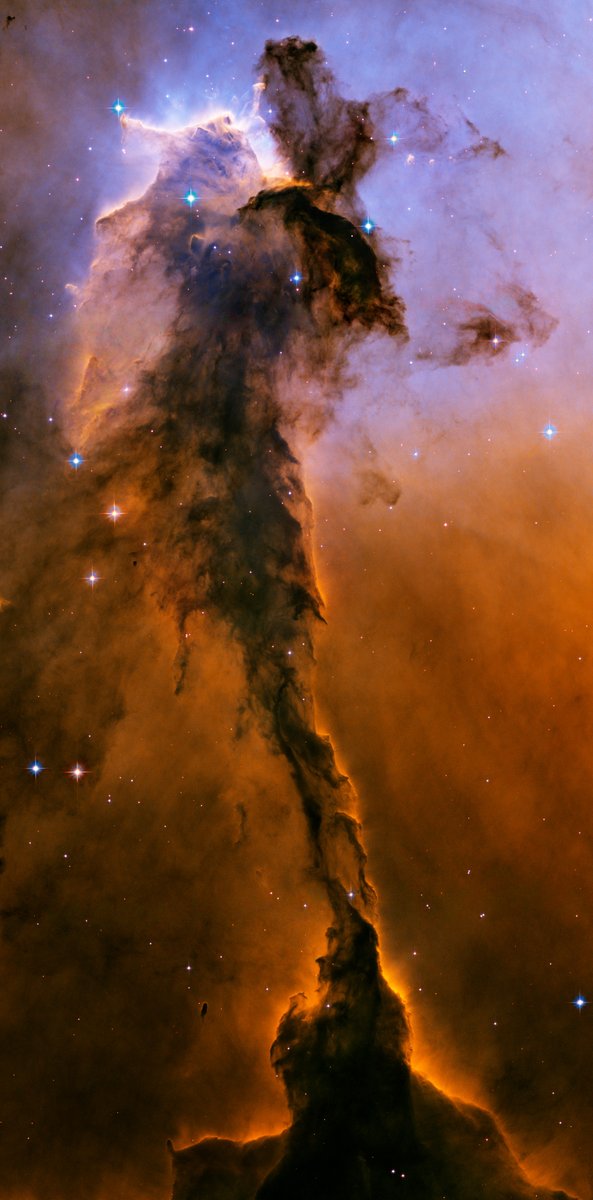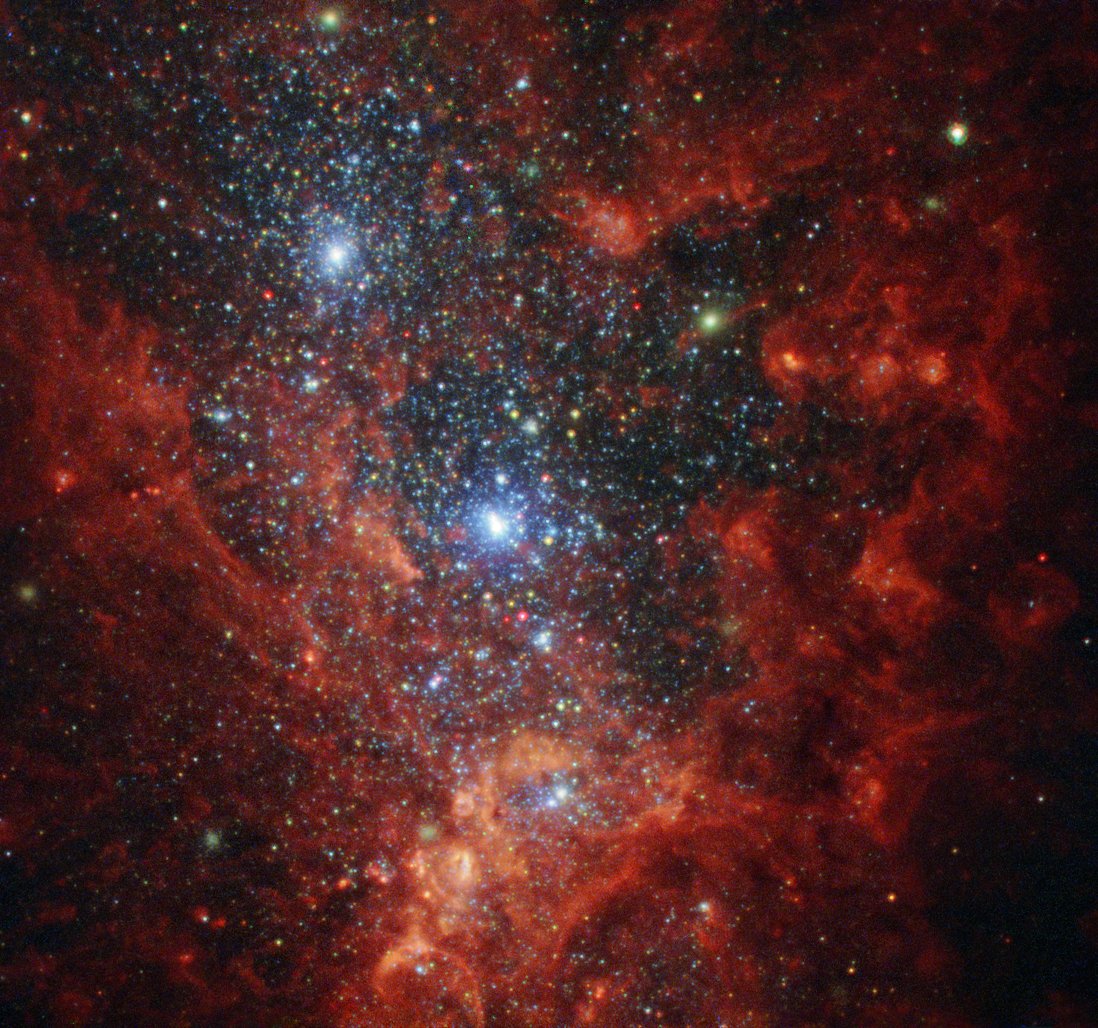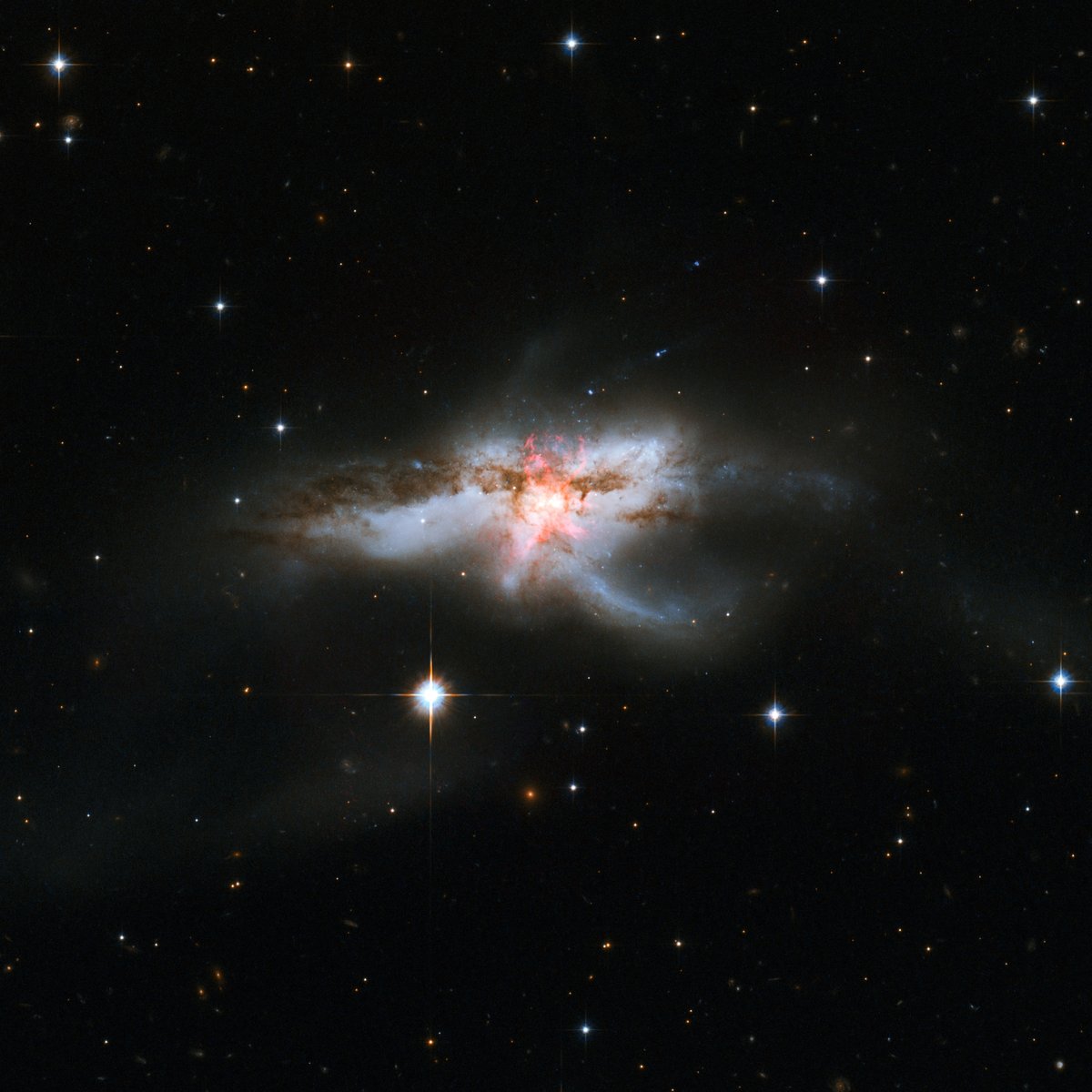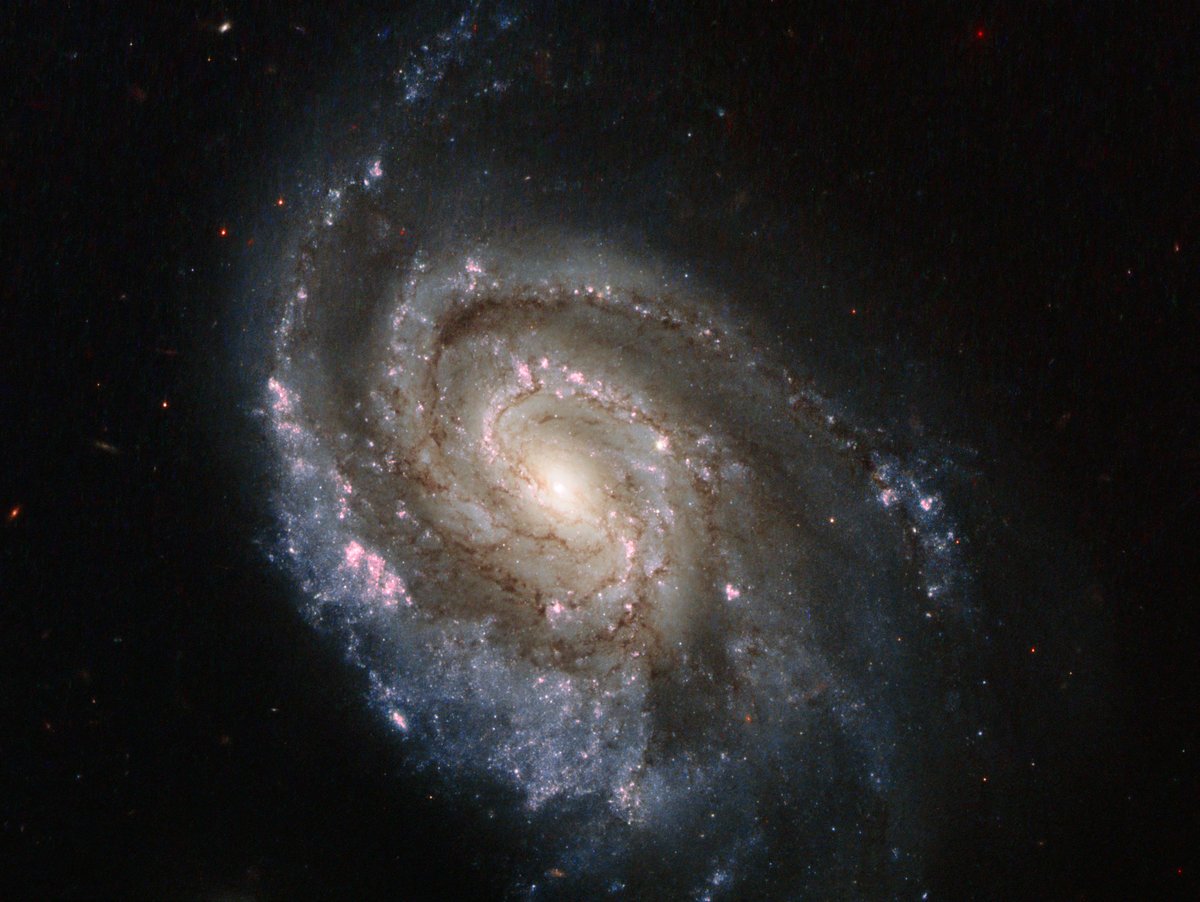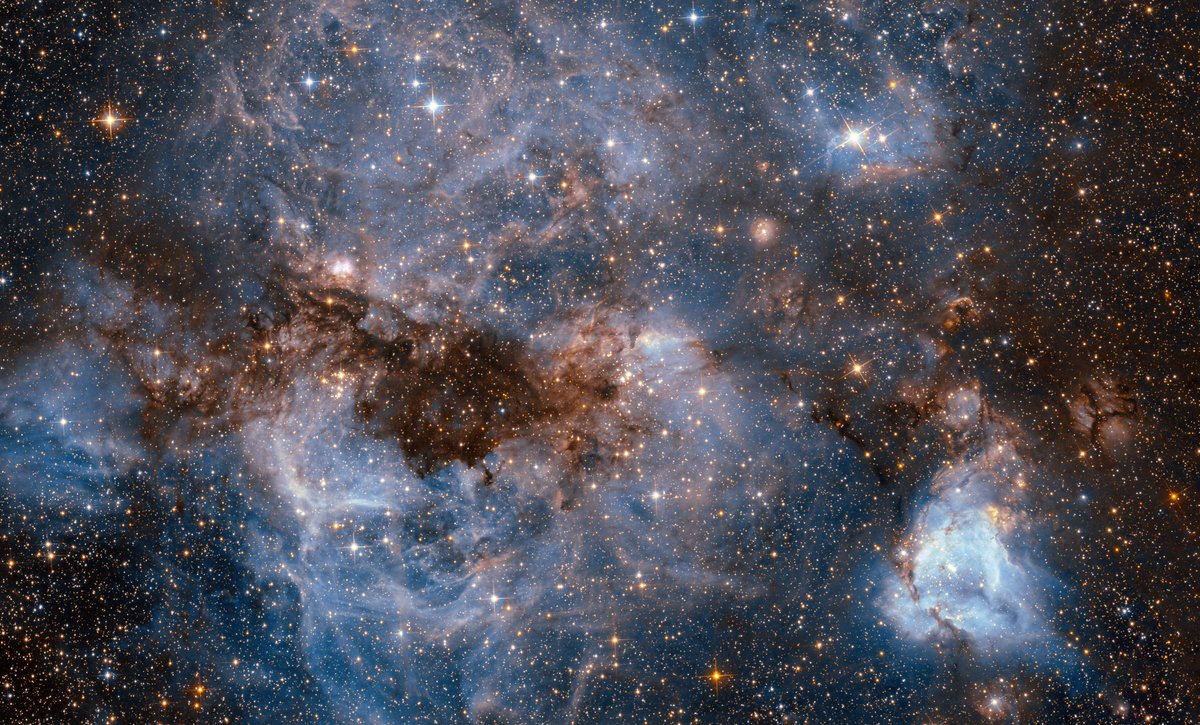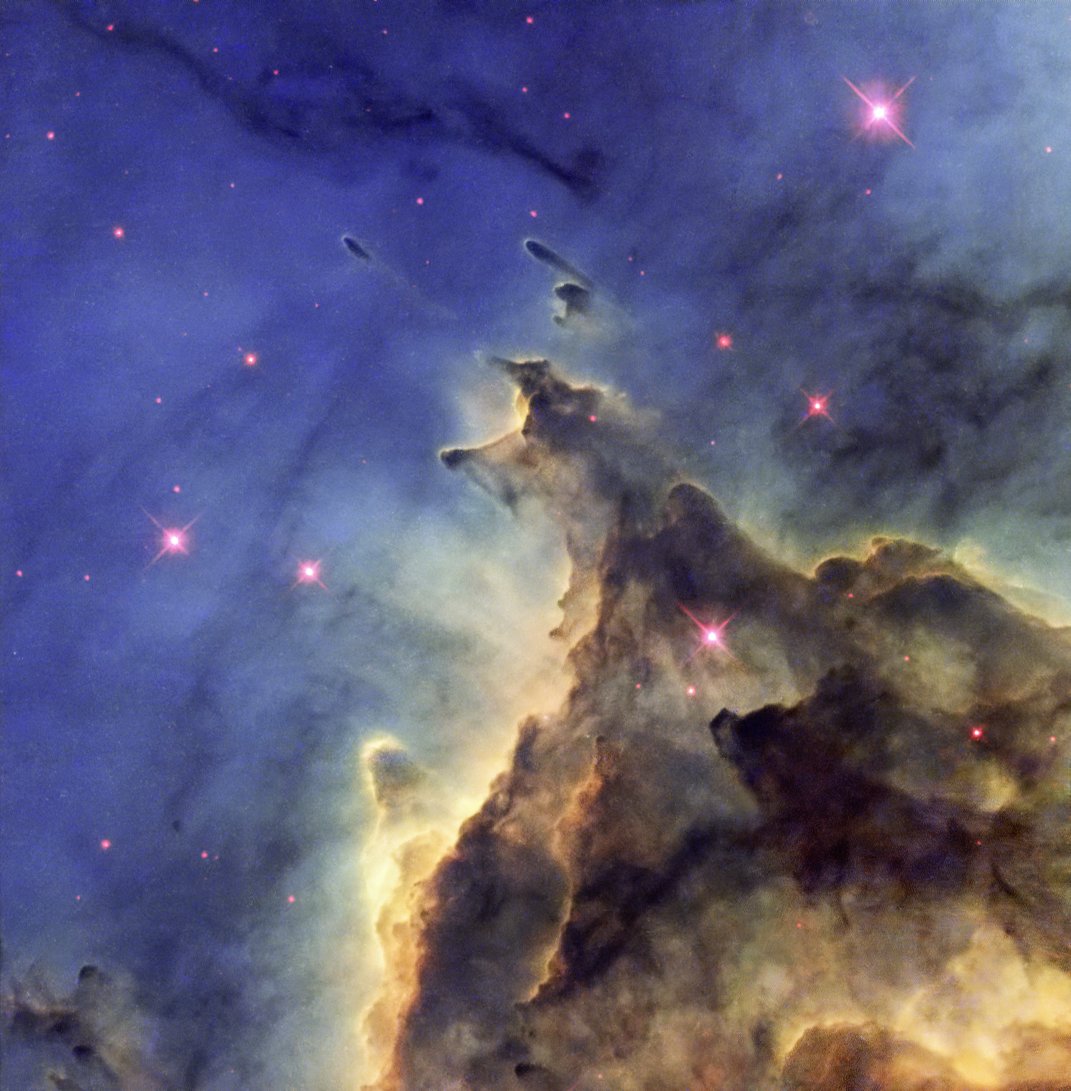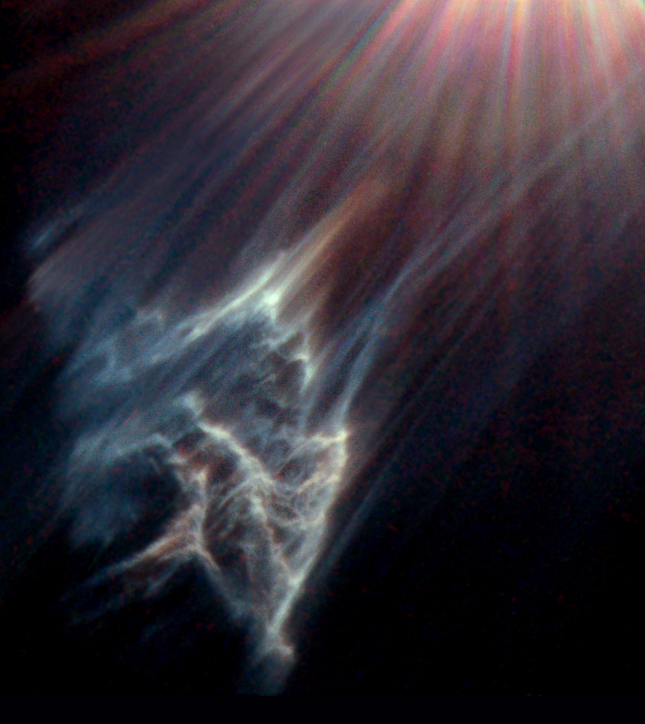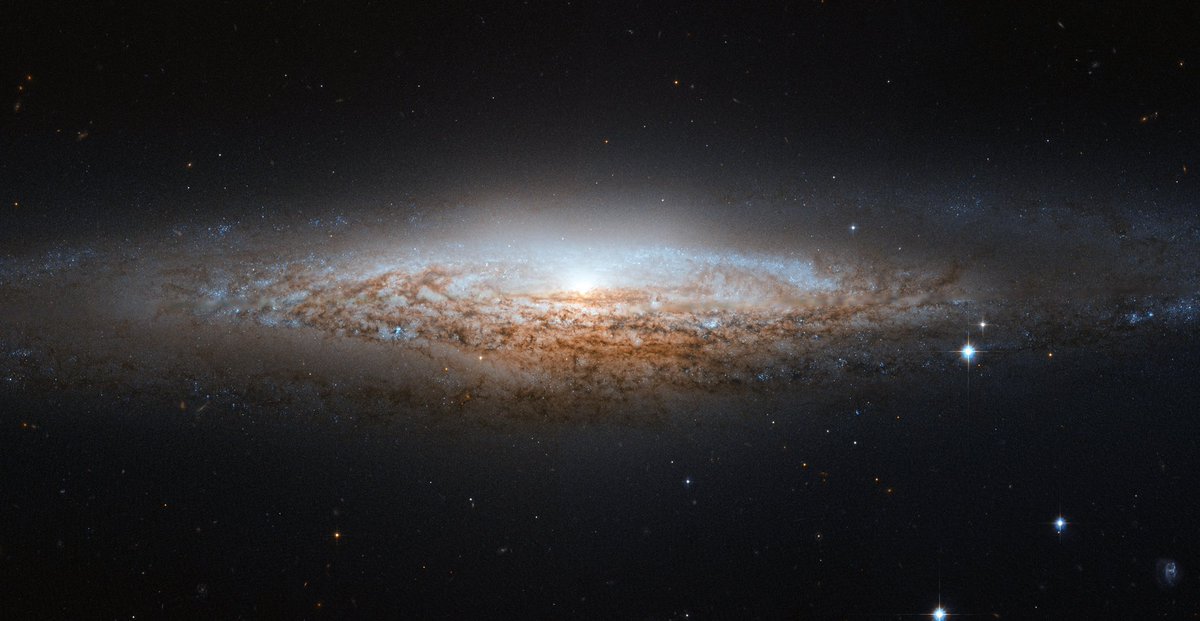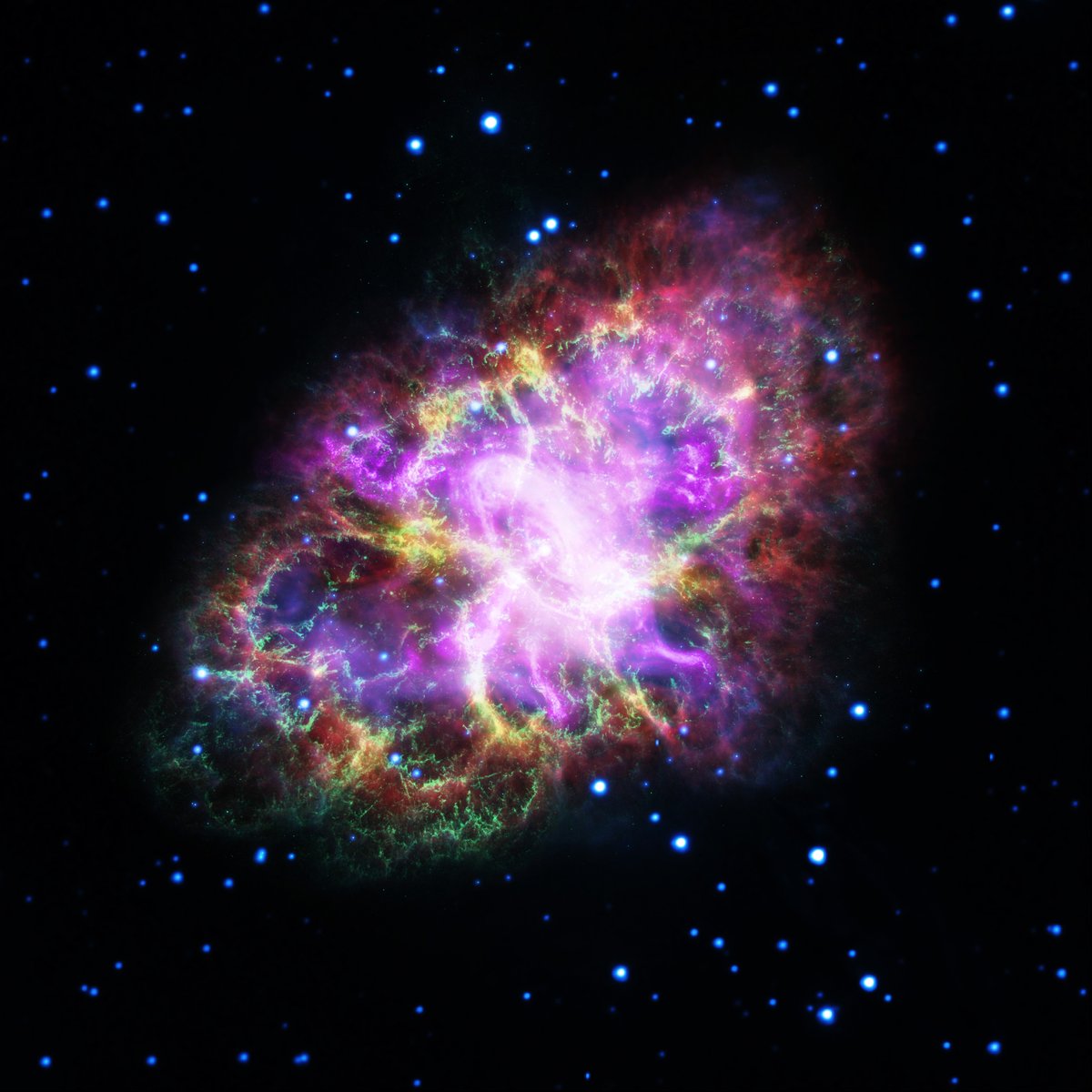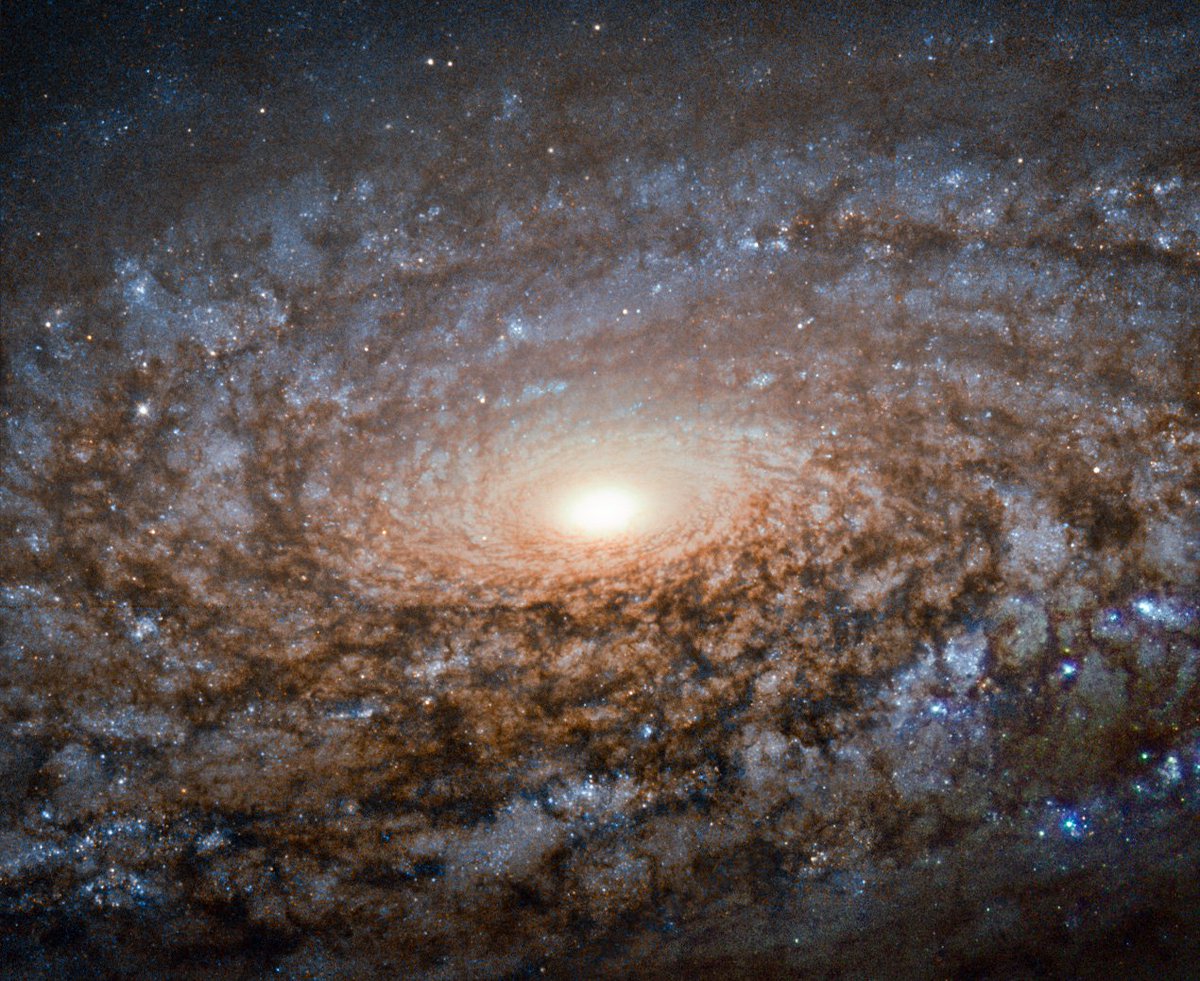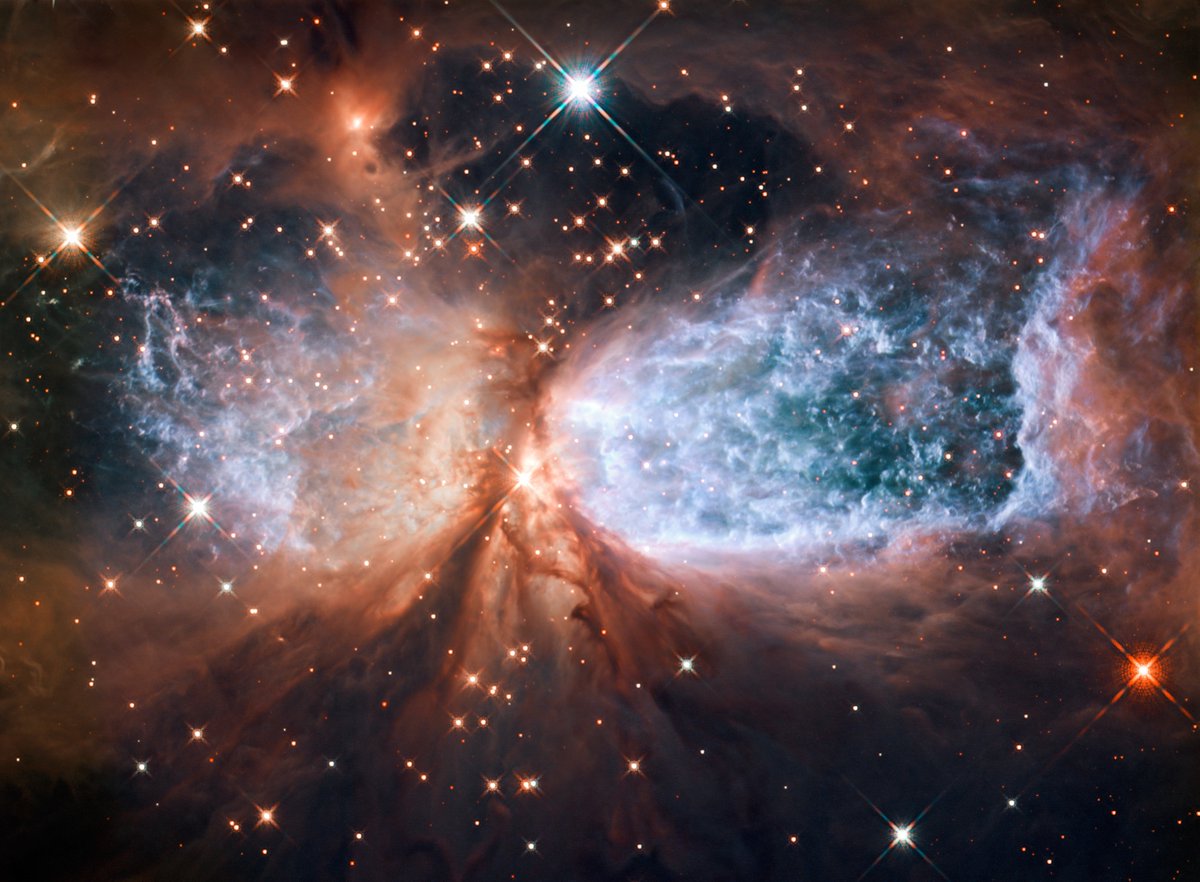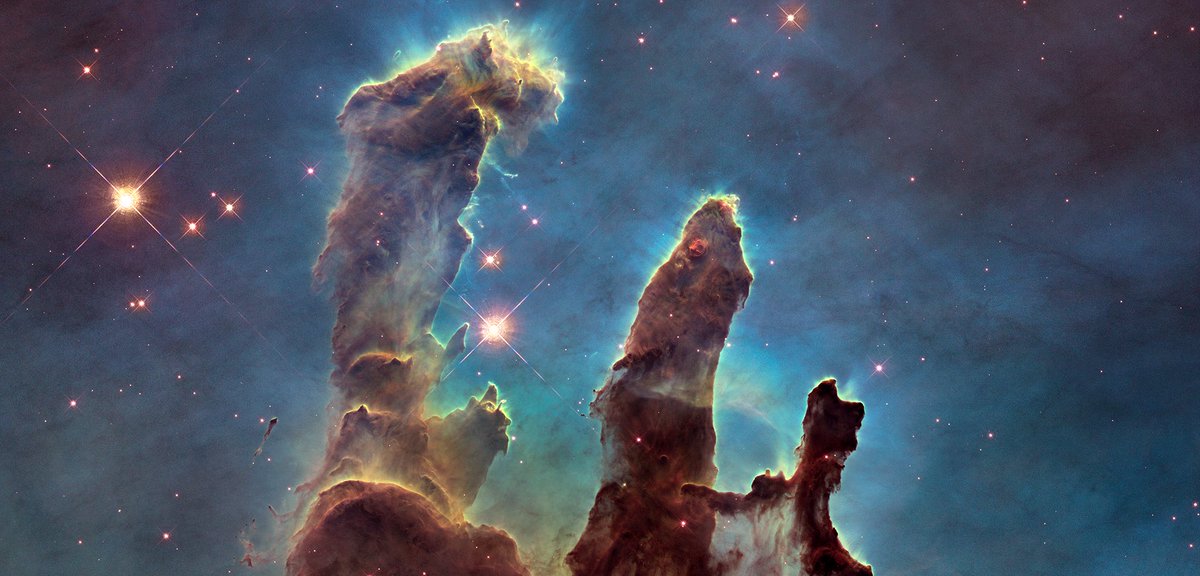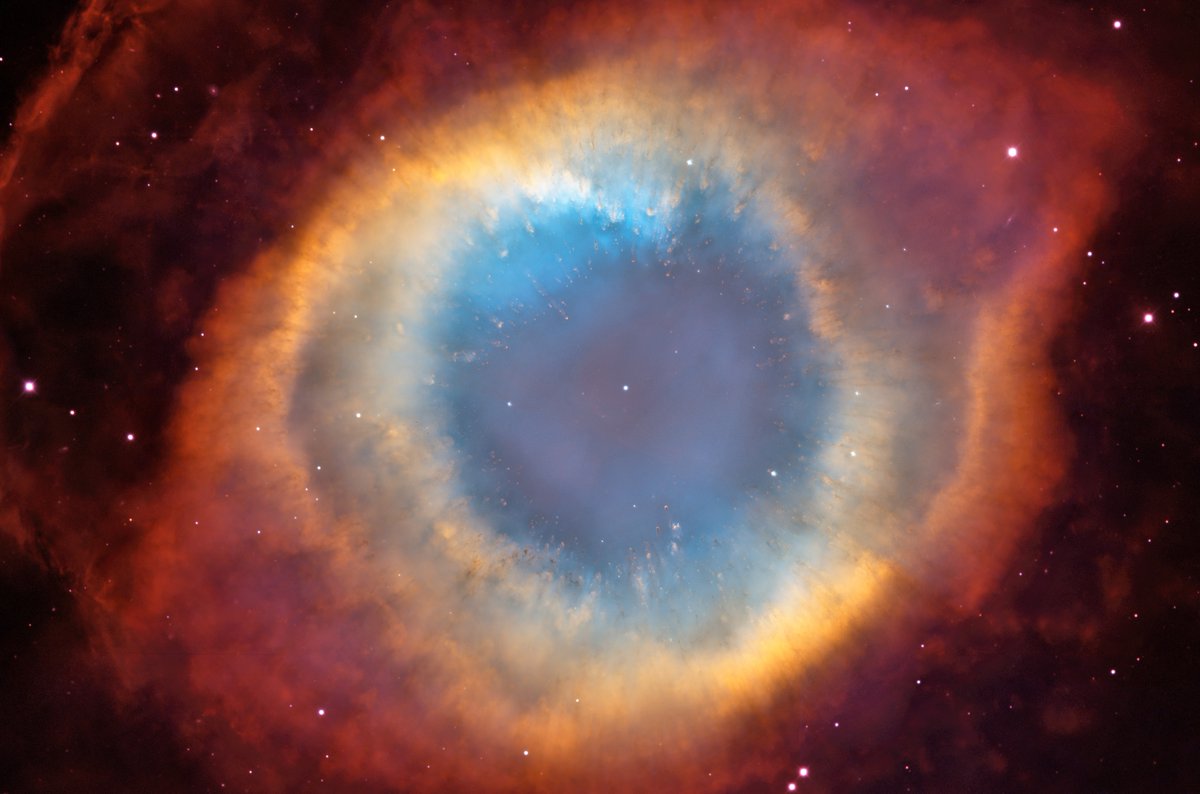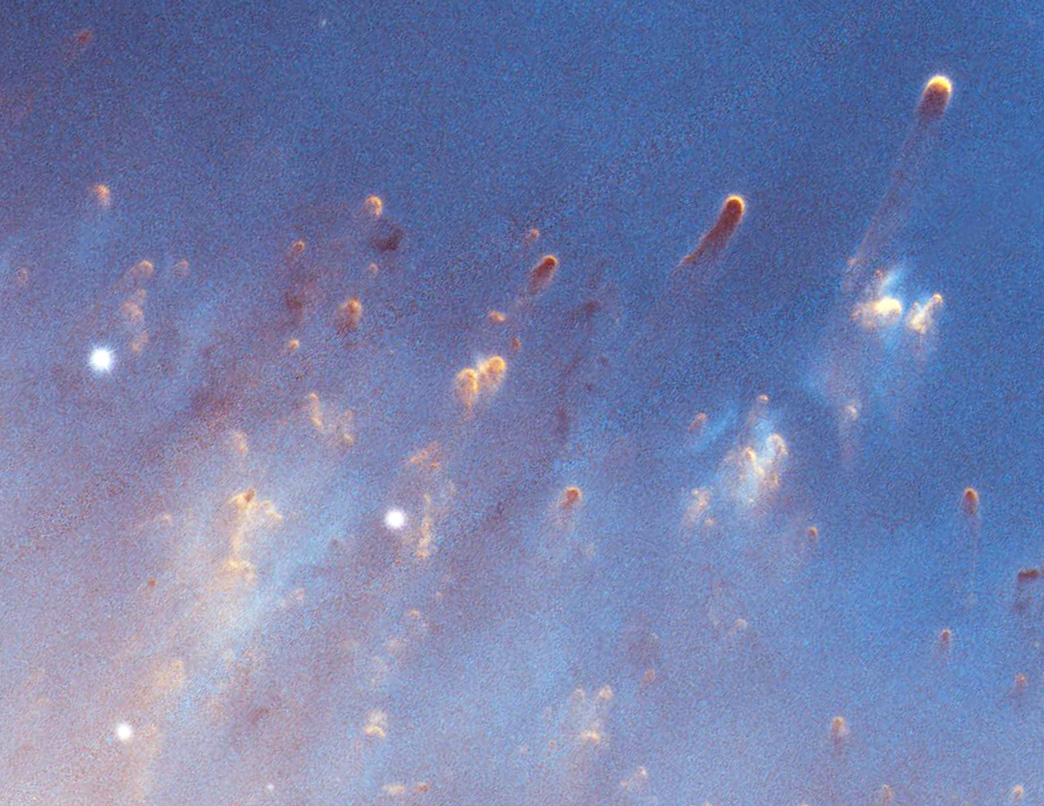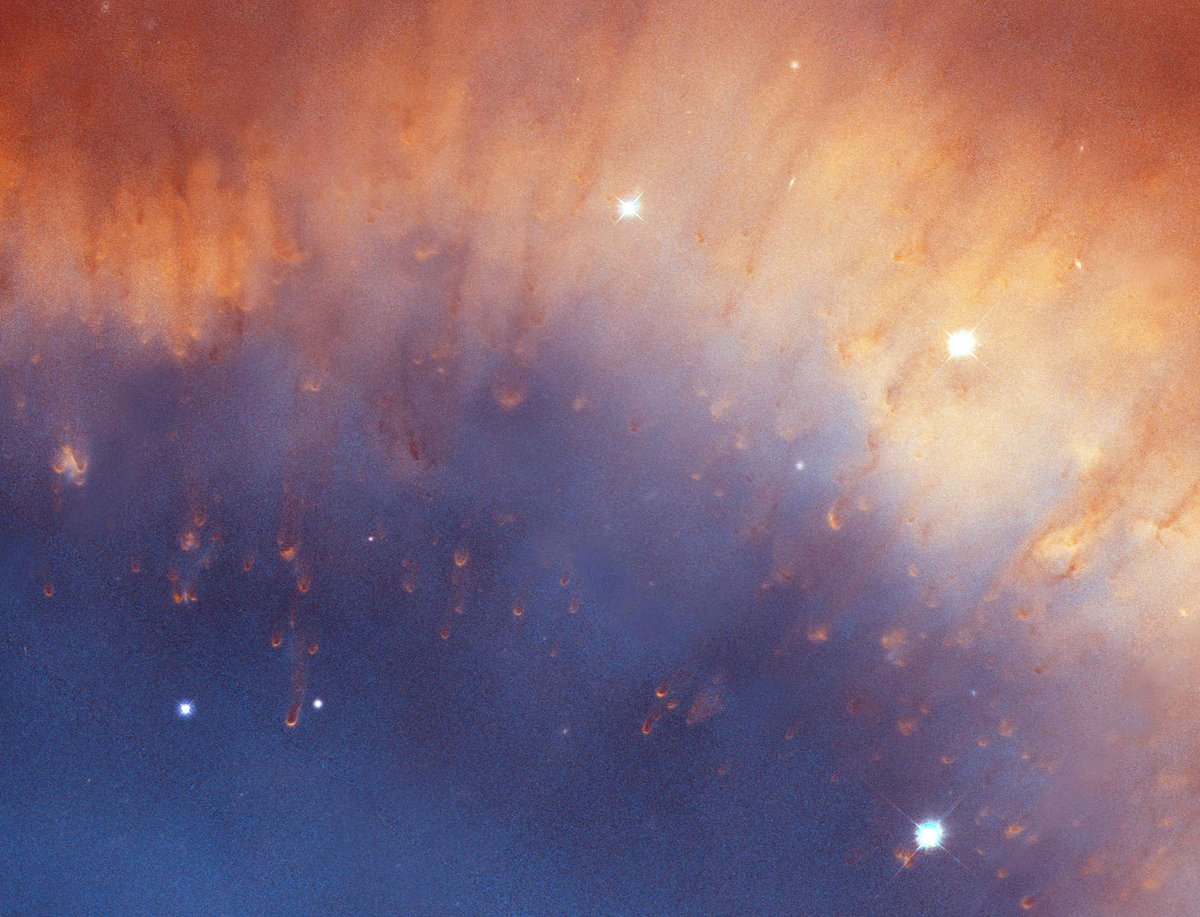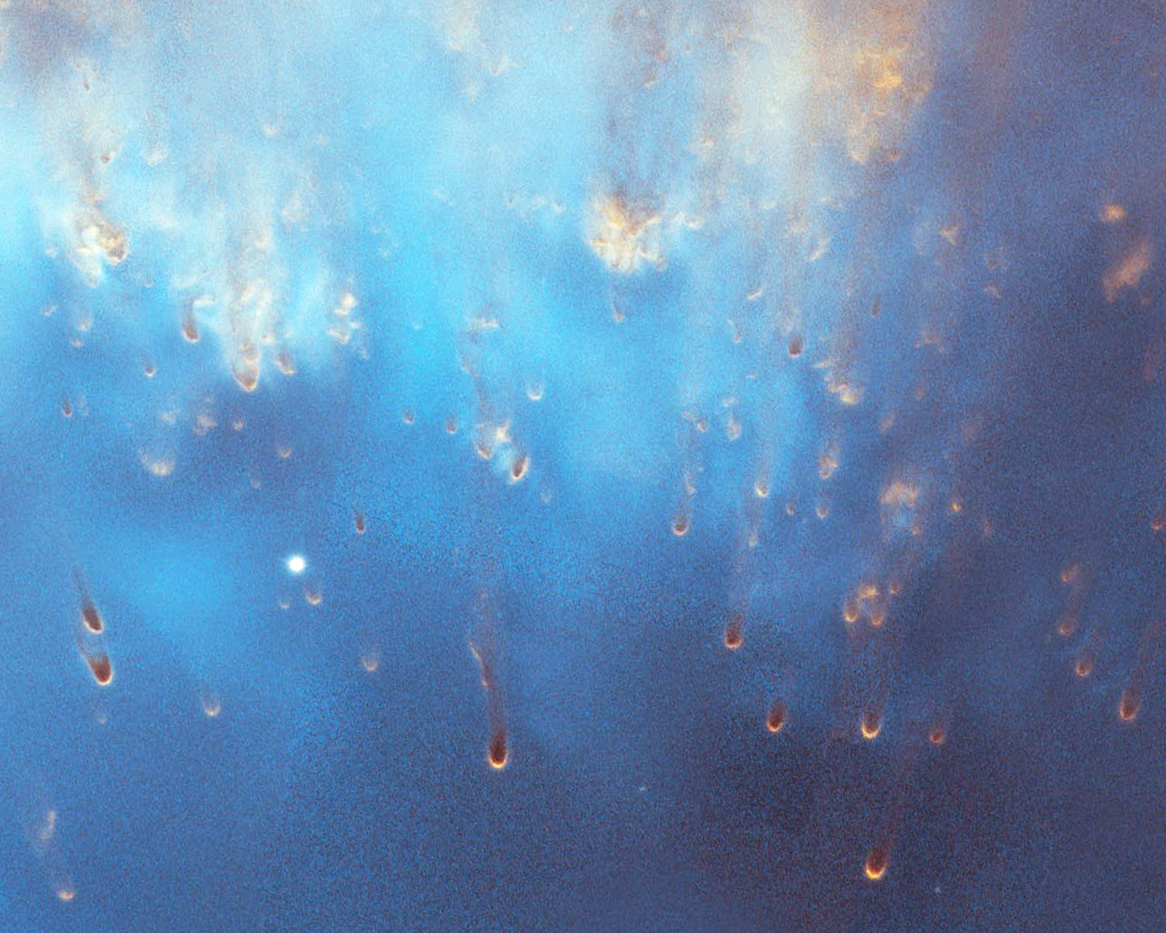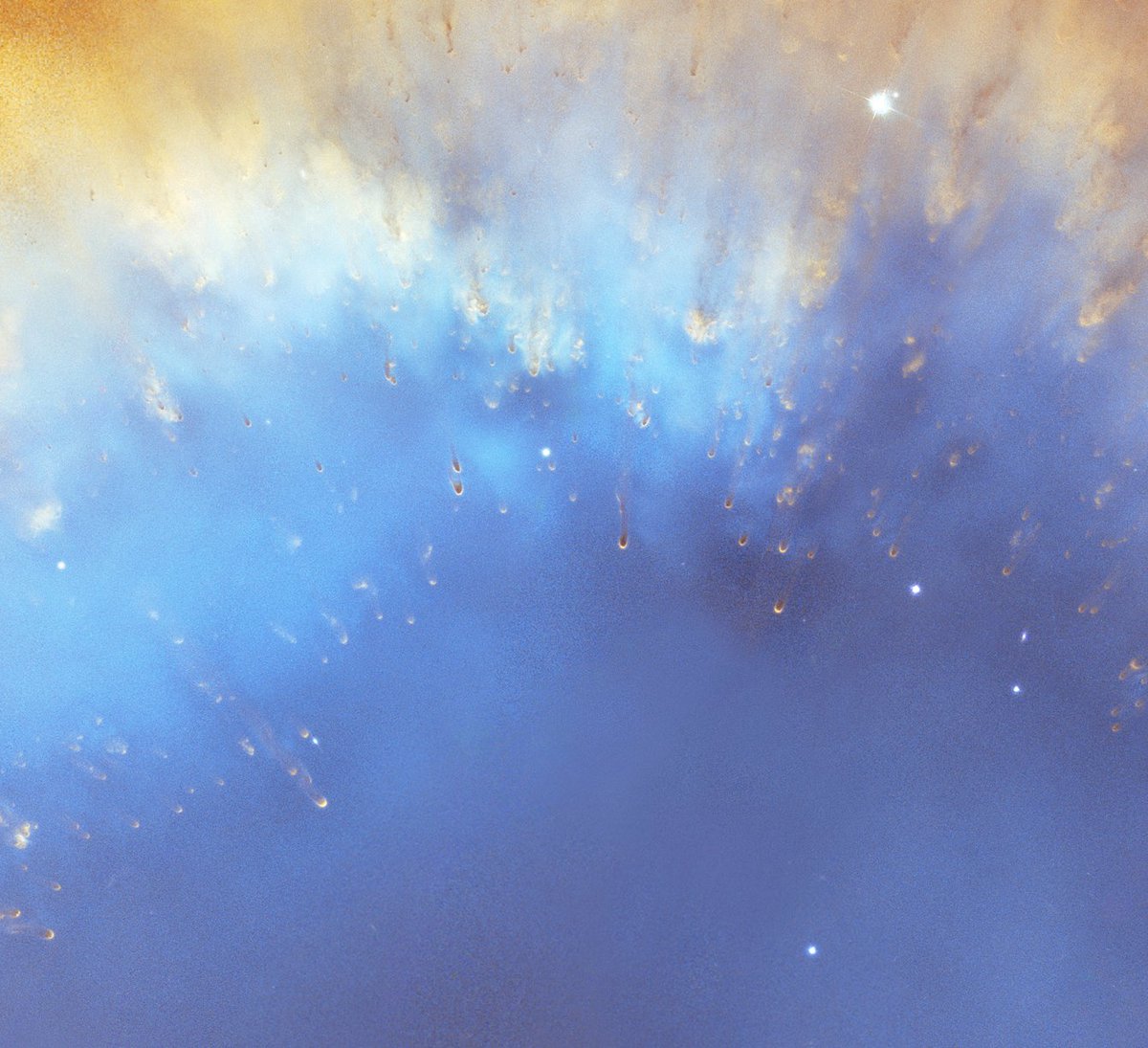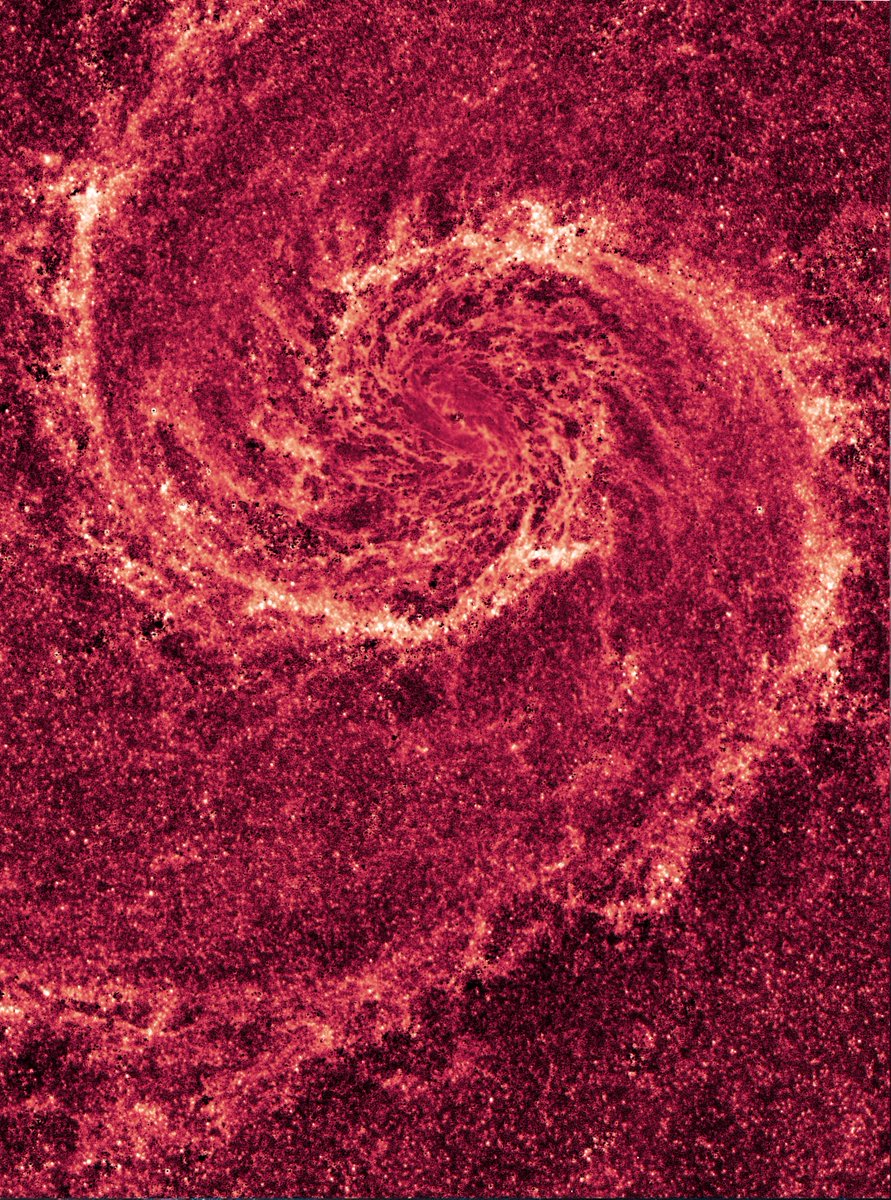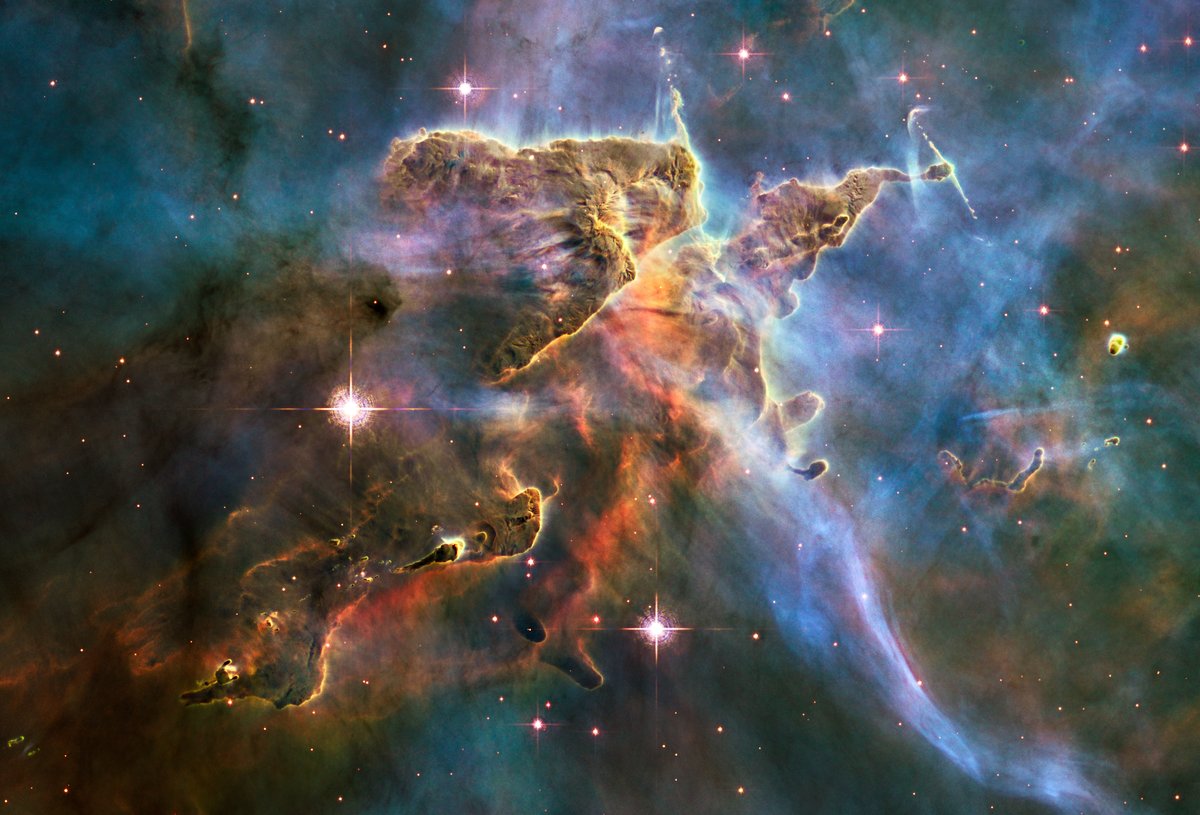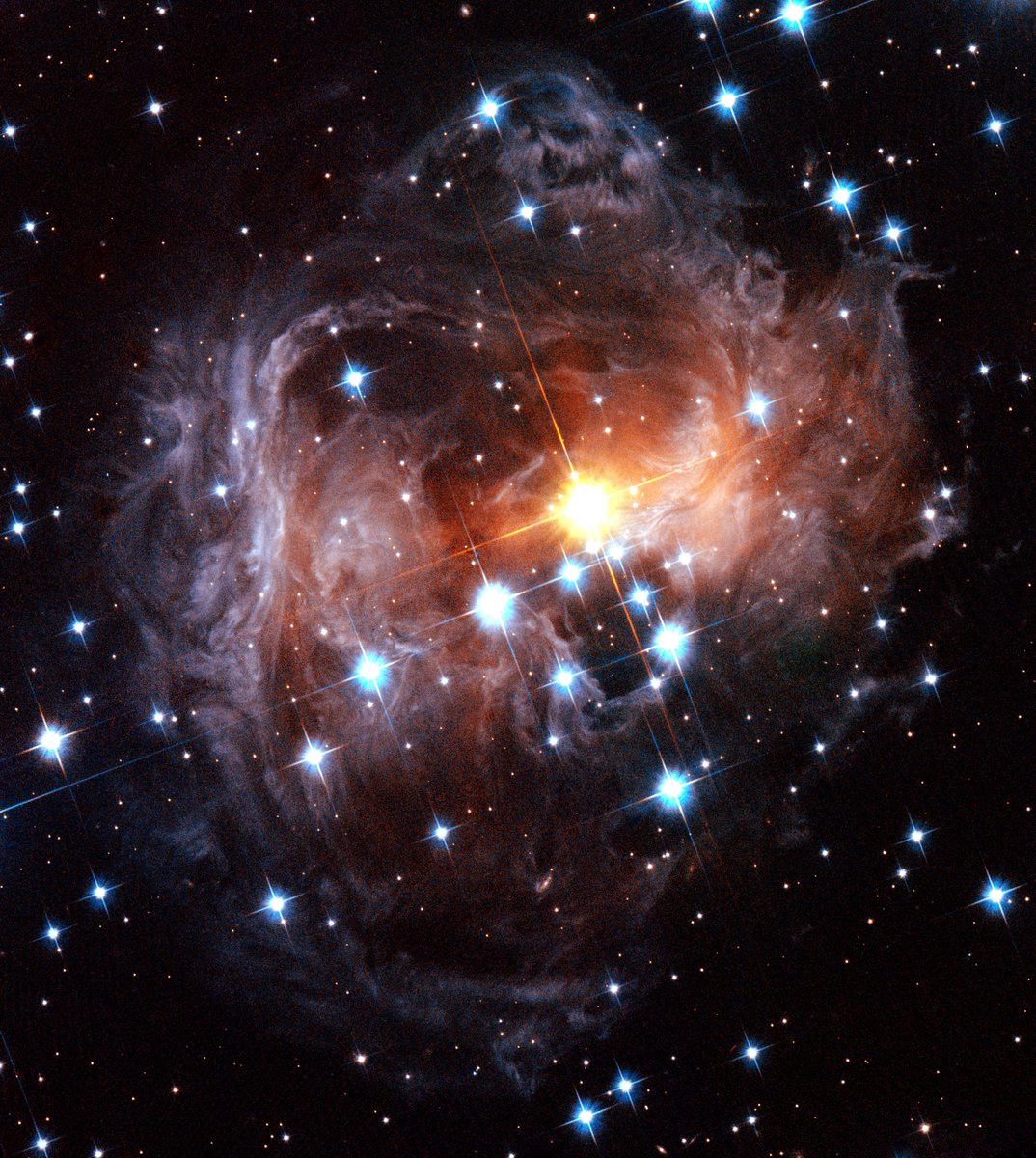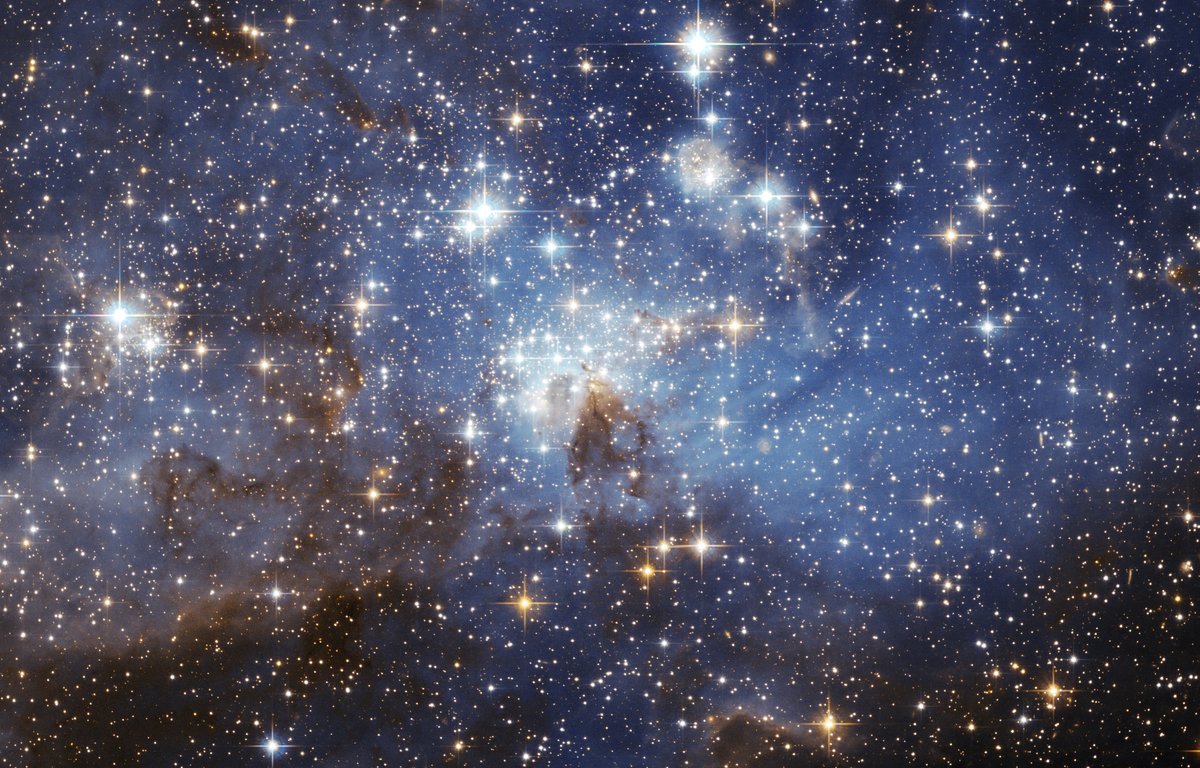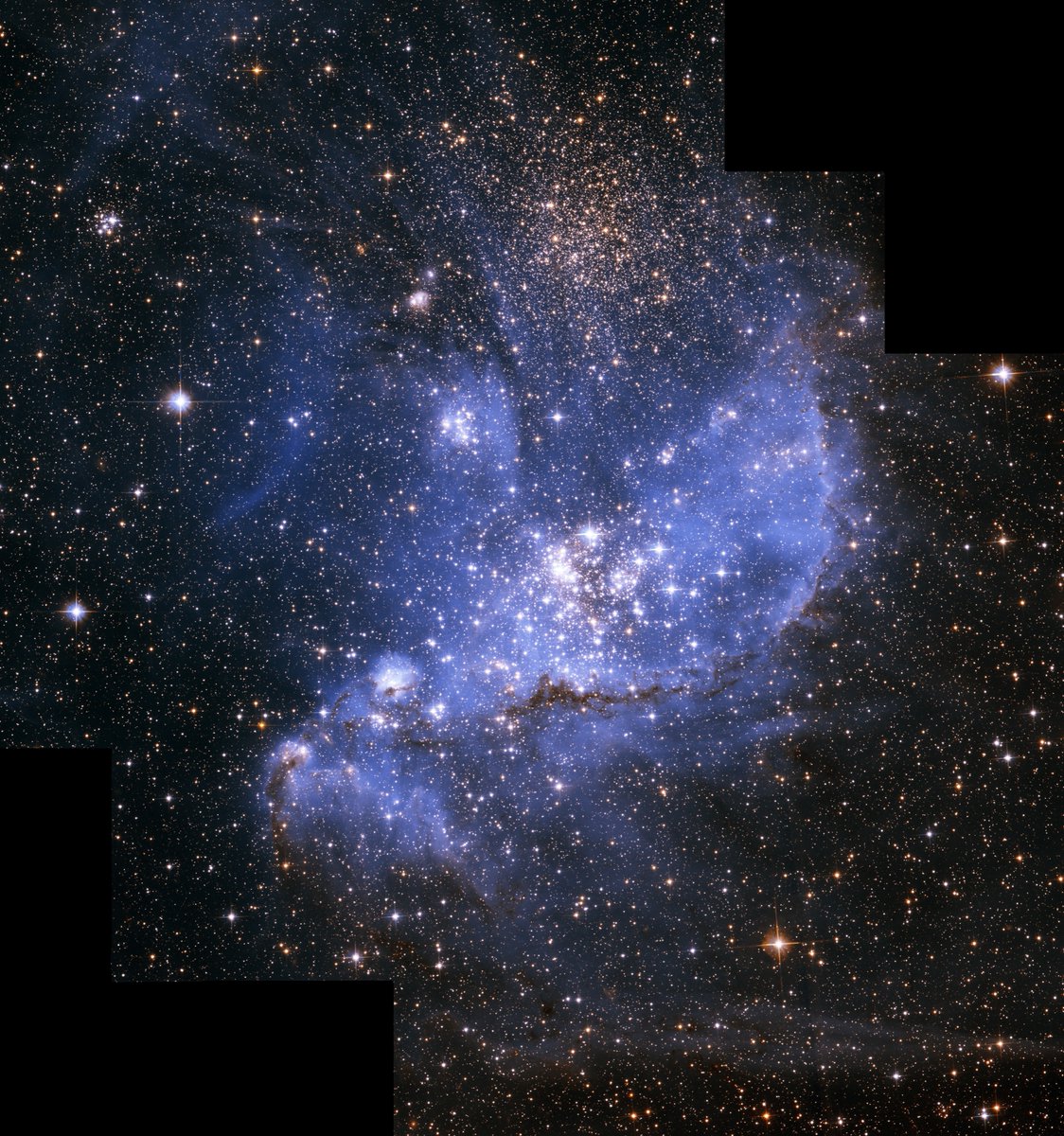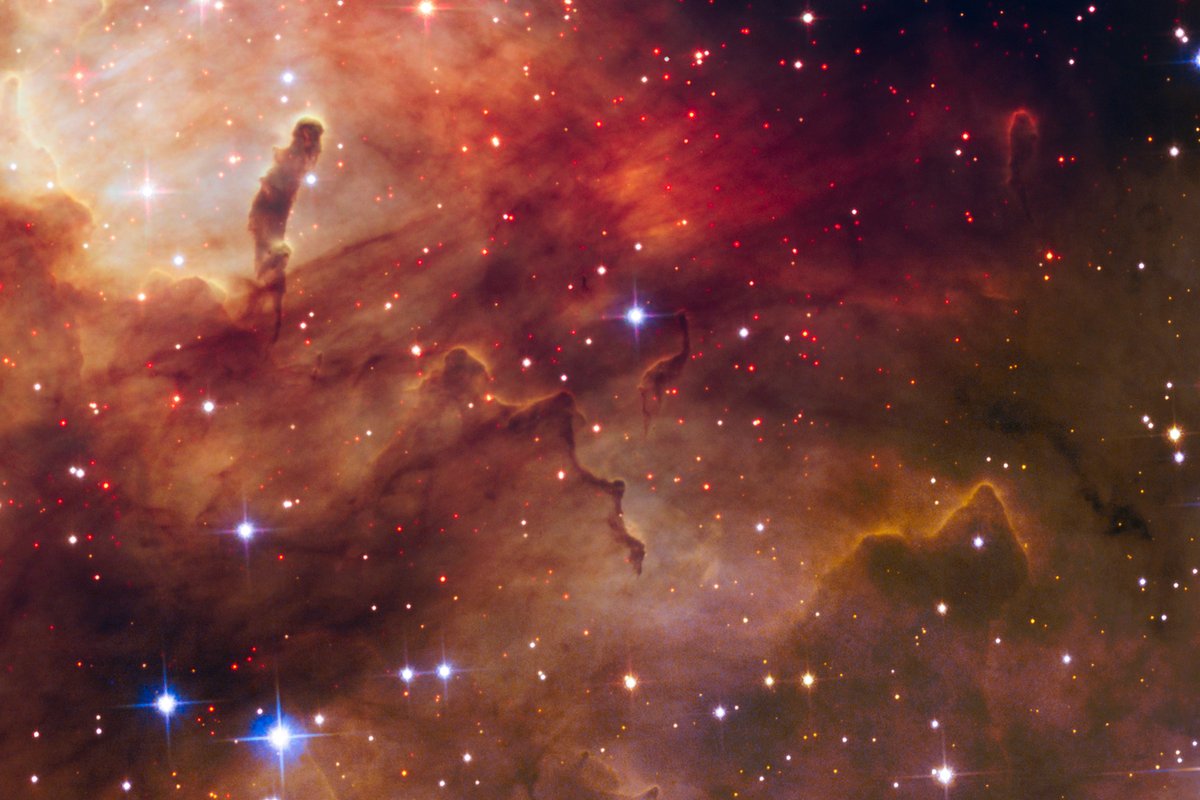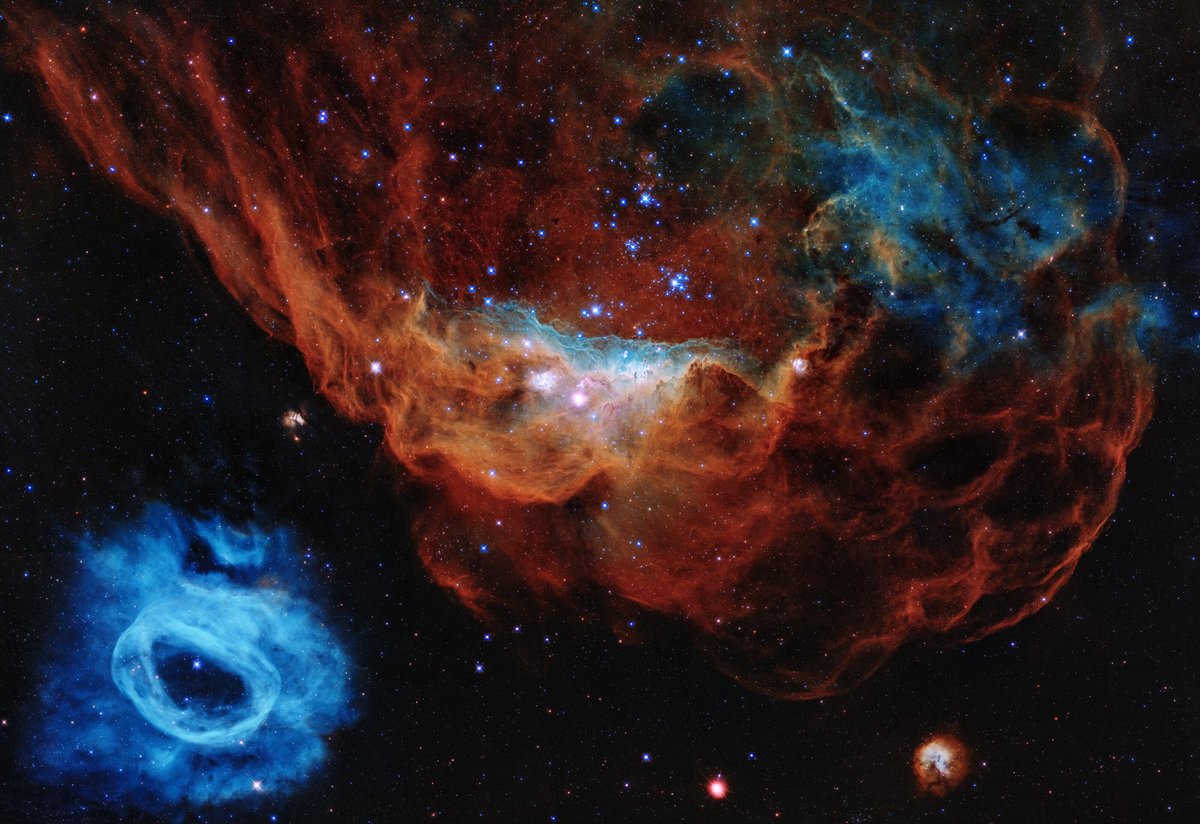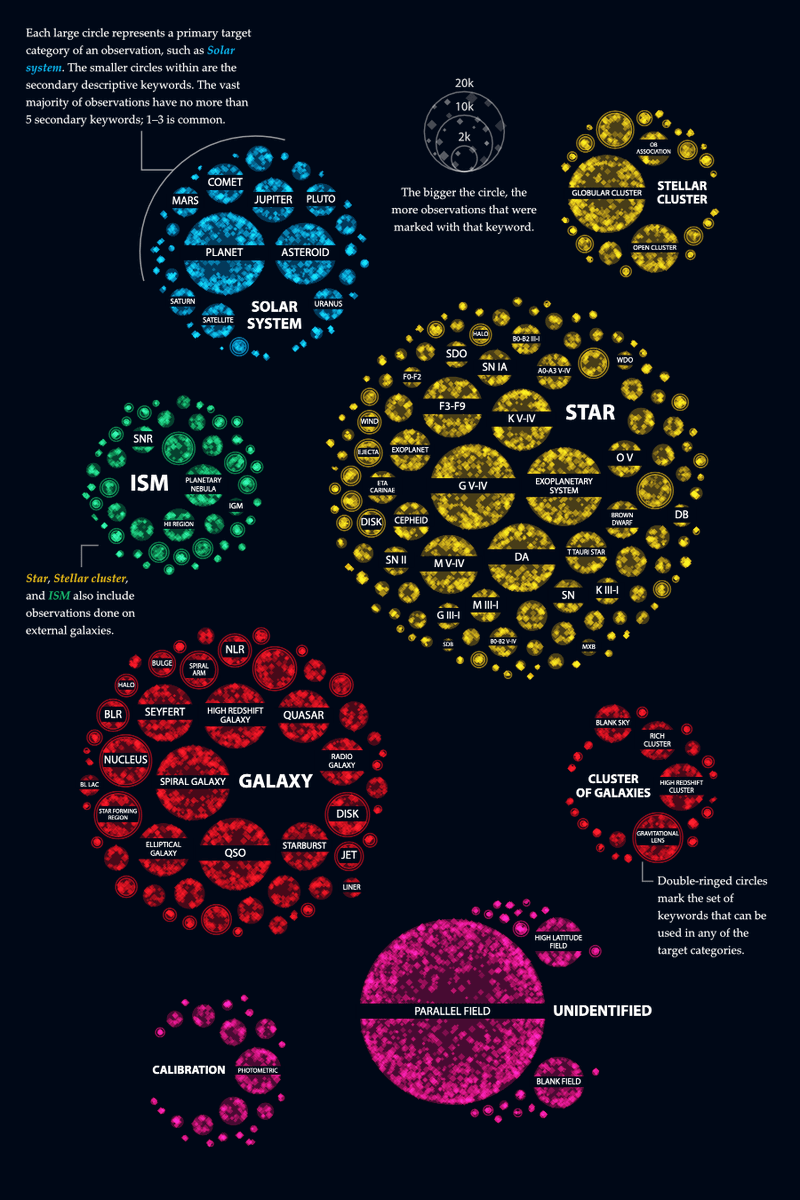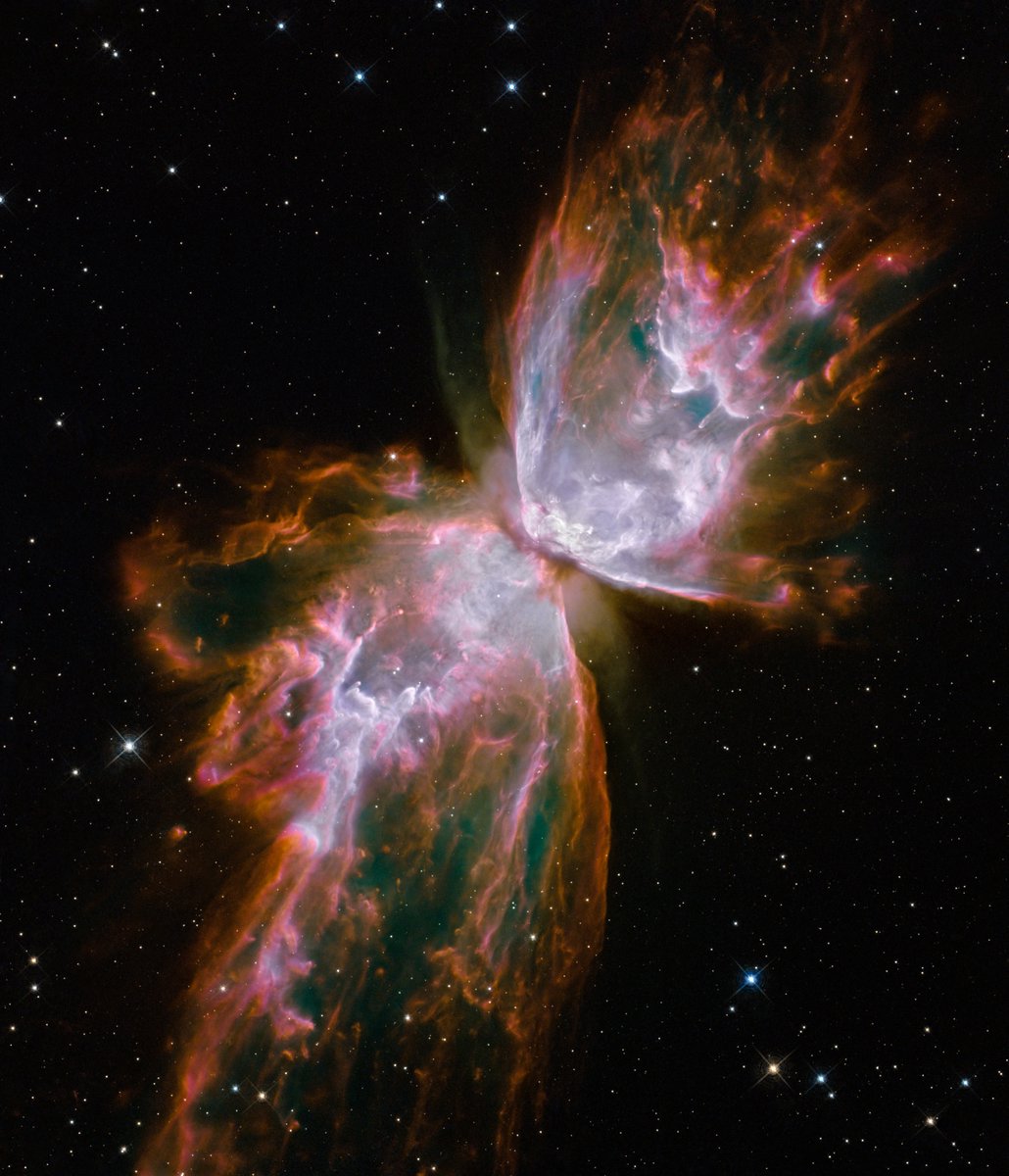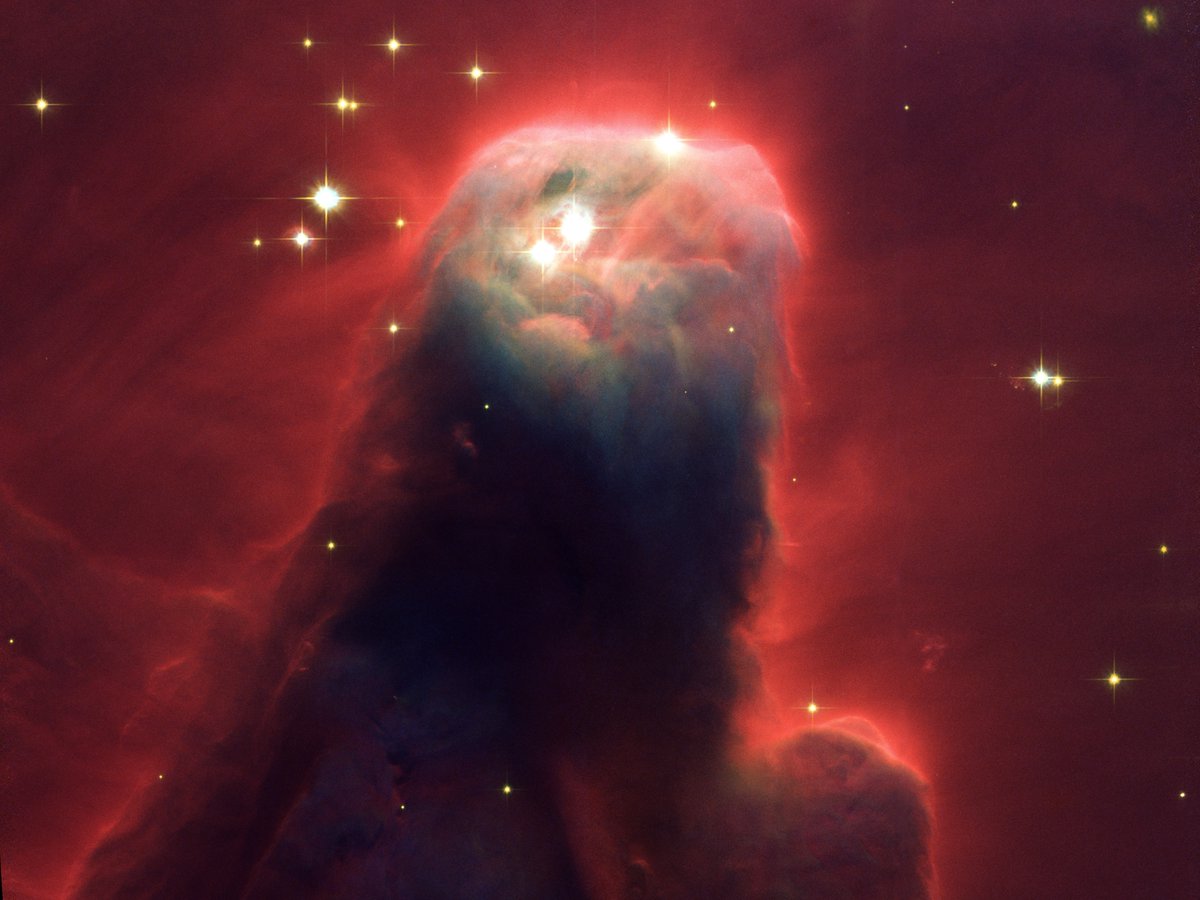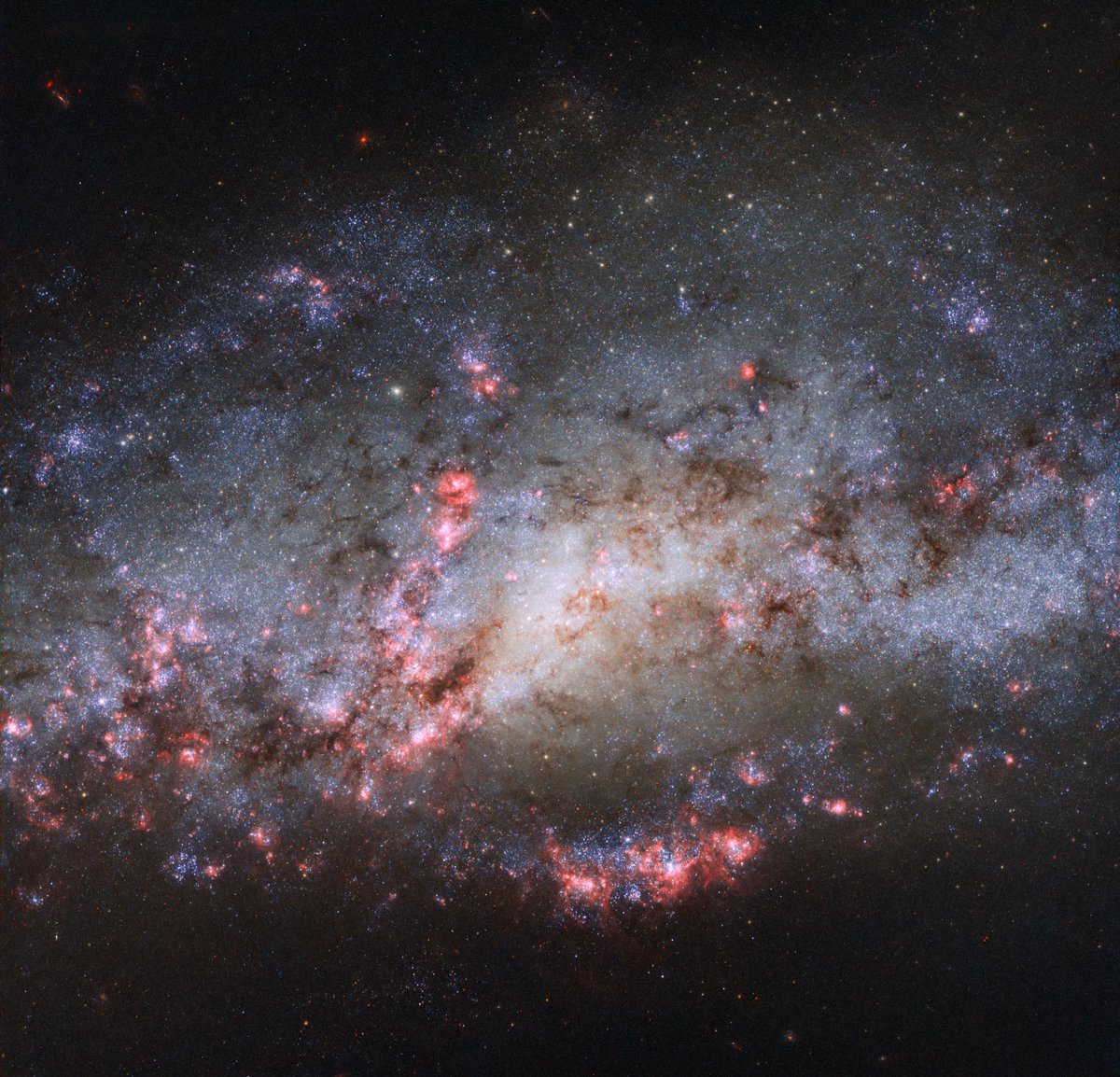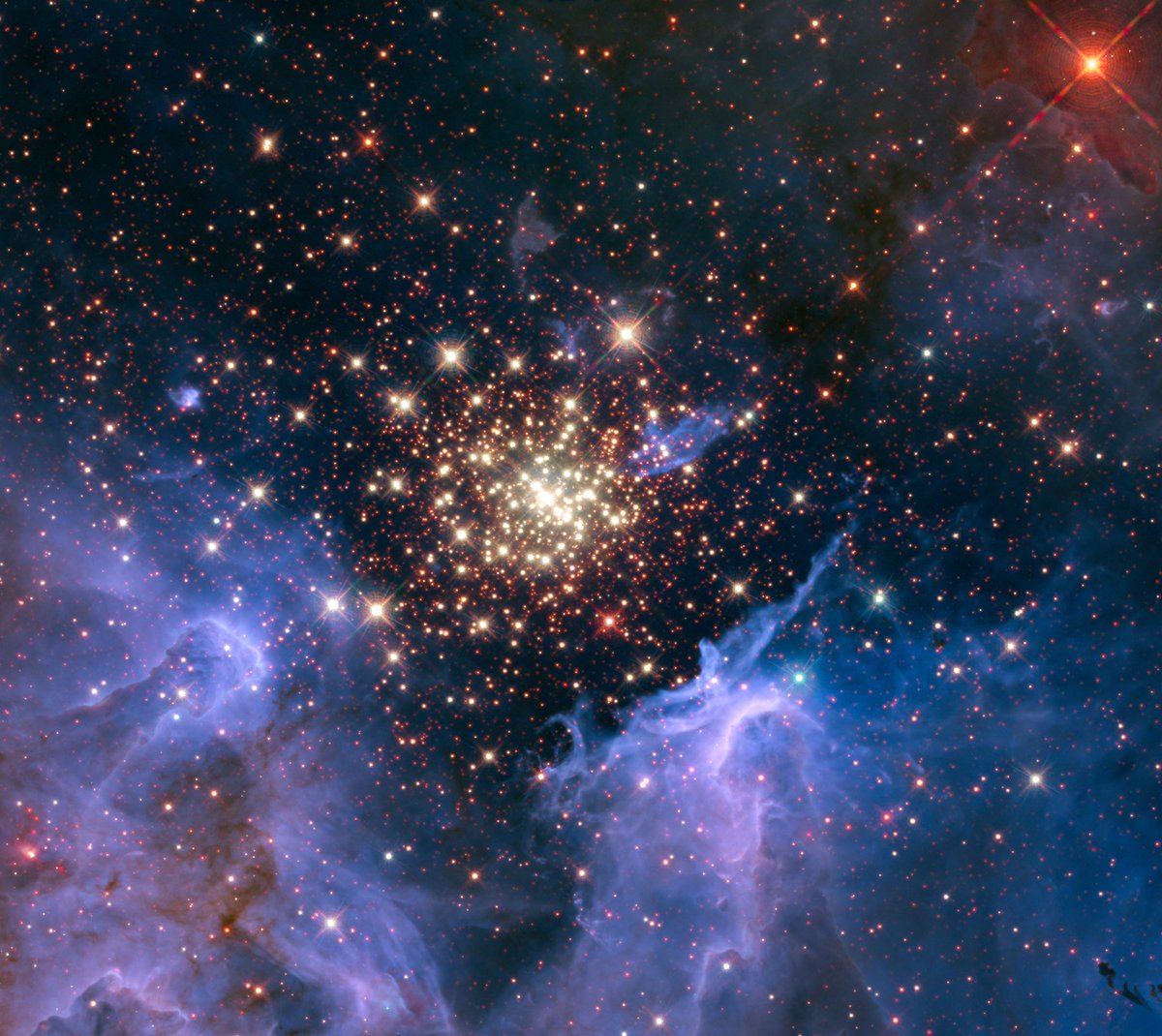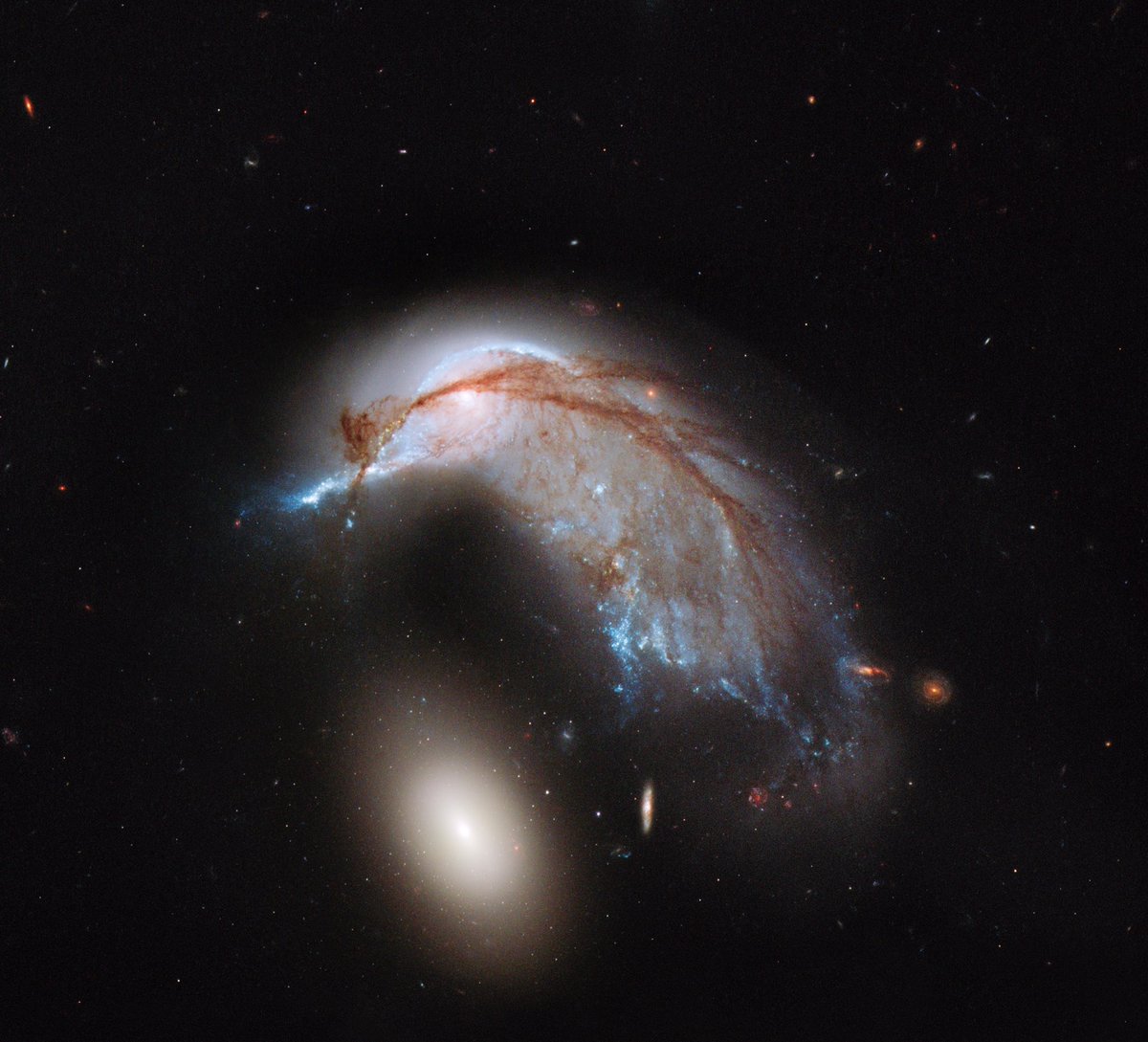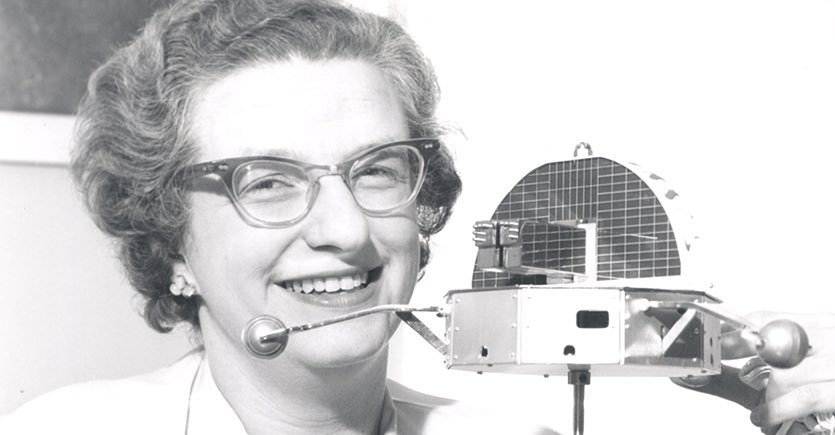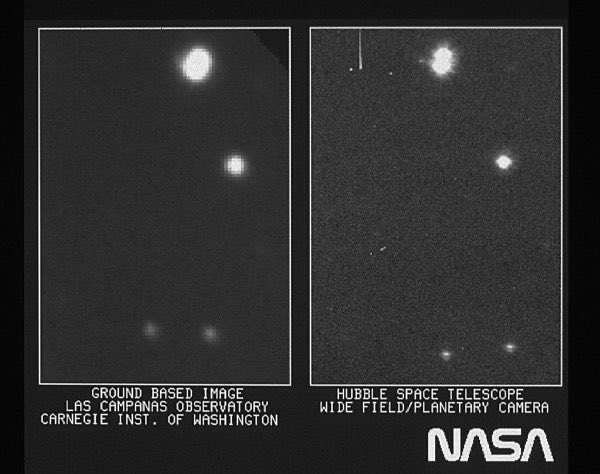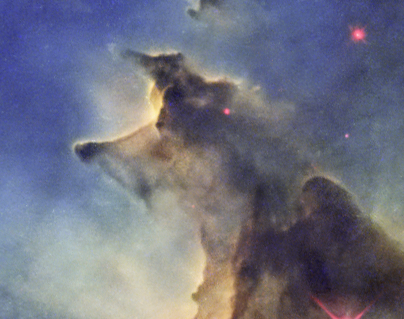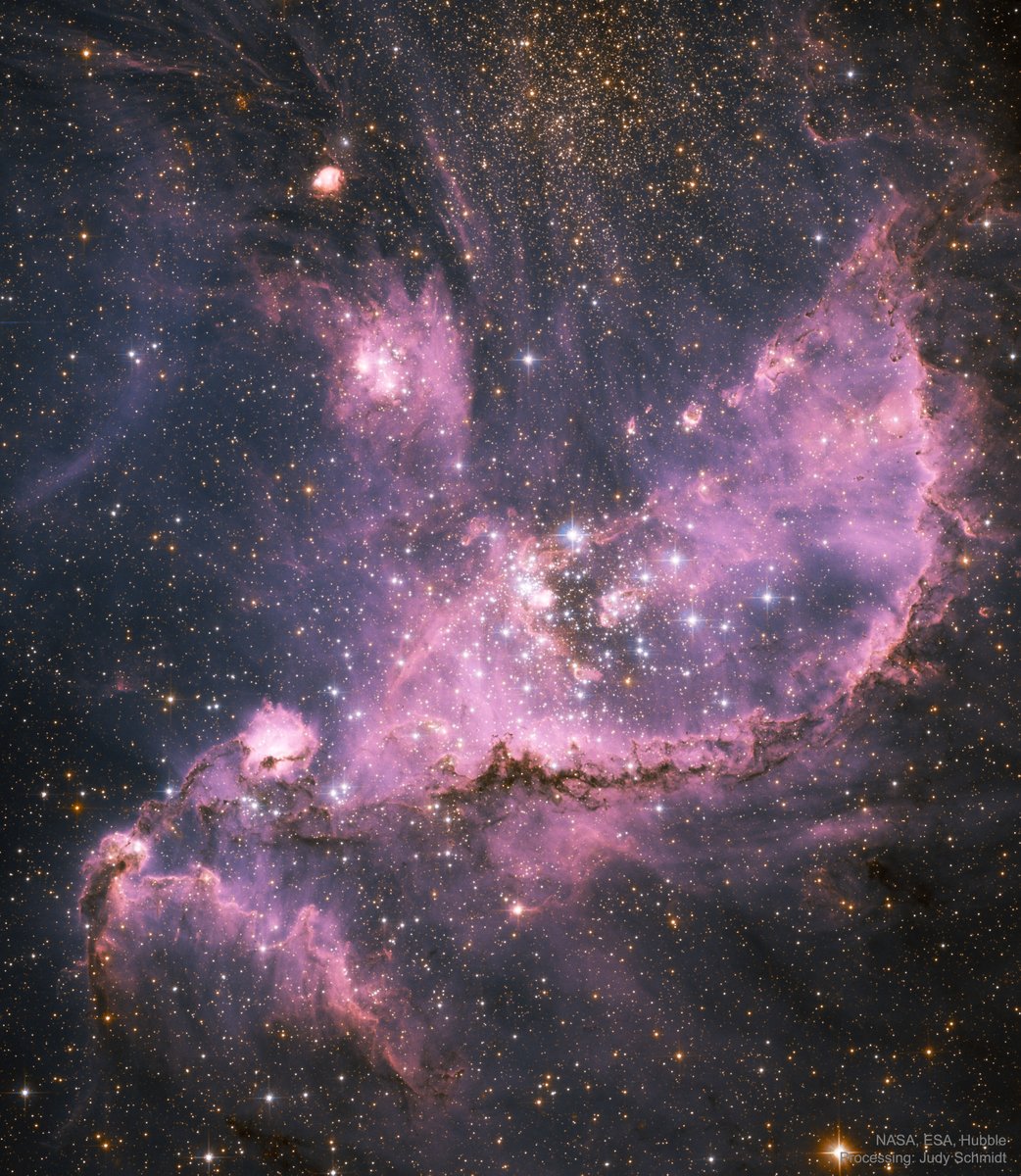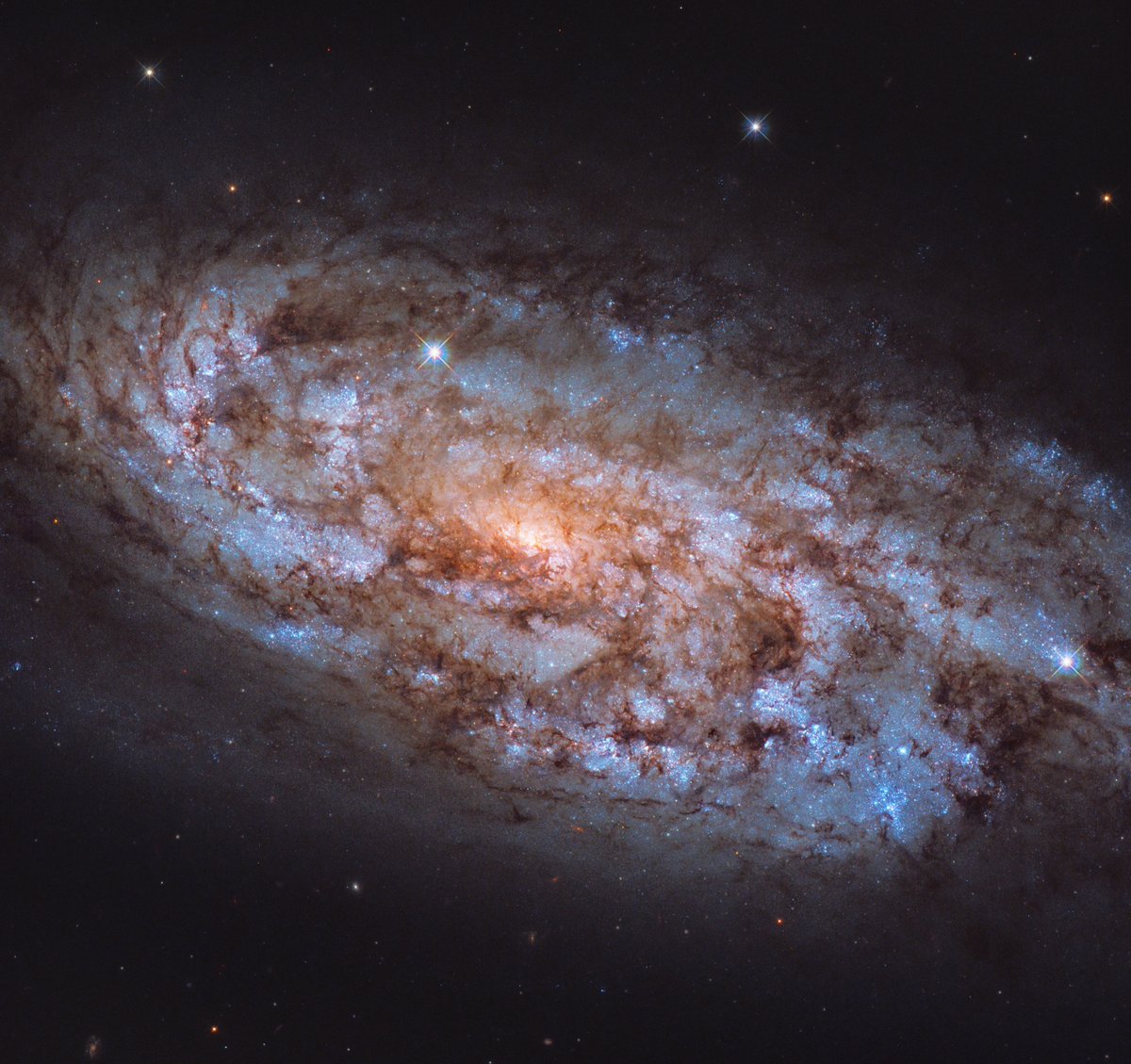It's halfway through Wednesday and you're all doing great. Let's share some Hubble images.
Former spiral galaxies NGC 4038 and NGC 4039 –– the Antennae Galaxies –– are a few hundred million years into a merger that will result in a single, elliptical galaxy.
ImageL: ESA/Hubble & NASA
ImageL: ESA/Hubble & NASA
The galaxy NGC 5033, an unbarred spiral in the constellation Canes Venatici.
Image Credit: ESA/Hubble & NASA; Acknowledgment: Judy Schmidt
https://www.nasa.gov/image-feature/goddard/2018/hubble-sets-sights-on-a-galaxy-with-a-bright-heart
Image Credit: ESA/Hubble & NASA; Acknowledgment: Judy Schmidt
https://www.nasa.gov/image-feature/goddard/2018/hubble-sets-sights-on-a-galaxy-with-a-bright-heart
The Hubble Ultra Deep Field (which @shannonmstirone shared earlier) is a deep look into a tiny patch of sky in the constellation Fornax. Over 11 days of exposure time revealed 10,000 galaxies, including some of the oldest known.
Image: NASA, ESA, S. Beckwith (STScI), HUDF Team
Image: NASA, ESA, S. Beckwith (STScI), HUDF Team
Almost every dot, smudge, and whorl of light in this image is a galaxy. (There are a few stars in there –– you can spot them by their diffraction spikes.) The deepest red ones are galaxies that probably formed when the Universe was less than a billion years old.
The nebula NGC 602 in the Small Magellanic Cloud.
Image: NASA, ESA and the Hubble Heritage Team (STScI/AURA)-ESA/Hubble Collaboration
Image: NASA, ESA and the Hubble Heritage Team (STScI/AURA)-ESA/Hubble Collaboration
Hubble captured this image of the Lagoon Nebula for its 28th anniversary in 2018. The image shows a region about 4 light years across; the entire nebula is roughly 55 light years high by 20 light years wide.
Image: NASA, ESA, STScI
https://spacetelescope.org/images/heic1808a/
Image: NASA, ESA, STScI
https://spacetelescope.org/images/heic1808a/
The Lagoon Nebula is a bit over 4000 light years away. The light in this image left the nebula around the same time the Middle Kingdom period in Egypt was getting underway.
The Orion Nebula (M42) was the first deep sky object I found with my telescope when I was a kid.
Image: NASA, ESA, M. Robberto ( Space Telescope Science Institute/ESA), Hubble Space Telescope Orion Treasury Project Team
Image: NASA, ESA, M. Robberto ( Space Telescope Science Institute/ESA), Hubble Space Telescope Orion Treasury Project Team
It’s visible to the naked eye as a smudge on the sky. If you have a dark, clear sky tonight go outside and look at the sword hanging from Orion’s belt. Even better, use binoculars or a small telescope!
The galaxy NGC 2841 is a “flocculent spiral.”
Flocculent.
Image: NASA, ESA, Hubble Heritage (STScI/AURA)-ESA/Hubble Collaboration Acknowledgment: M. Crockett & S. Kaviraj (Oxford University, UK), R. O'Connell (UVA), B. Whitmore (STScI), WFC3 Scientific Oversight Committee.
Flocculent.
Image: NASA, ESA, Hubble Heritage (STScI/AURA)-ESA/Hubble Collaboration Acknowledgment: M. Crockett & S. Kaviraj (Oxford University, UK), R. O'Connell (UVA), B. Whitmore (STScI), WFC3 Scientific Oversight Committee.
Flocculent refers to the “fluffy” appearance of the arms; they aren’t as well-formed as other sorts of spirals.
Flocculent.
I like to say flocculent.
Flocculent.
I like to say flocculent.
Use it in a sentence.
“The flocculent puppy lept into the air and caught the hedgehog.”
“The flocculent puppy lept into the air and caught the hedgehog.”
Anyway, the Pinwheel Galaxy (NGC 5457) is an example of a "grand design spiral." Where a flocculent galaxy is fluffy and patchy, a grand design spiral has well-formed arms sweeping out long arcs.
Image: European Space Agency & NASA
Image: European Space Agency & NASA
The globular cluster NGC 3201. There's a black hole near the center, its presence given away by the motion of a nearby star whipping around it.
https://spacetelescope.org/images/potw1804a/
Acknowledgement: Sarajedini et al.
Credit: ESA/Hubble & NASA
https://spacetelescope.org/images/potw1804a/
Acknowledgement: Sarajedini et al.
Credit: ESA/Hubble & NASA
"Stephan's Quintet" in the constellation Pegasus isn't really a quintet. The galaxy in the upper-right corner of the image is only about 40 million light years away; the four others are about 300 million light years away.
Image: NASA, ESA and the Hubble SM4 ERO Team
Image: NASA, ESA and the Hubble SM4 ERO Team
Part of the Monkey Head Nebula, brimming with young stars.
Image: NASA, ESA, Hubble Heritage Team (STScI/AURA)
Image: NASA, ESA, Hubble Heritage Team (STScI/AURA)
Messier 92 is an ancient globular cluster in the constellation Hercules. Stunning, though often overlooked because of nearby M13.
Credit: ESA/Hubble, NASA
Acknowledgement: Gilles Chapdelaine
Credit: ESA/Hubble, NASA
Acknowledgement: Gilles Chapdelaine
Oh, Messier 13. Look at it. Visible to the naked eye, if the sky is dark enough. Edmund Halley spotted it in 1714. He wrote “This is but a little Patch, but it shews it self to the naked Eye, when the Sky is serene and the Moon absent.”
Image: ESA/Hubble, NASA
Image: ESA/Hubble, NASA
In 1974 we beamed an interstellar radio message in the direction of M13. The Arecibo Message can be encoded in just over 6 tweets; 2 if you use unicode braille symbols. https://twitter.com/mcnees/status/1195726814267744257
The galaxy M83 in the constellation Hydra. You can just make it out with a pair of binoculars.
Image: NASA, ESA and the Hubble Heritage Team (STScI/AURA); Acknowledgment: W. Blair (STScI/Johns Hopkins University) and R. O’Connell (University of Virginia)
Image: NASA, ESA and the Hubble Heritage Team (STScI/AURA); Acknowledgment: W. Blair (STScI/Johns Hopkins University) and R. O’Connell (University of Virginia)
I mean, if you're going to look at the Andromeda galaxy (M31), don't fool around with the wide field views. Really get in there.
Image: NASA; ESA; J. Dalcanton ( @dalcantonJD) , B. F. Williams, and L. C. Johnson (University of Washington, USA), the PHAT team, and R. Gendler.
Image: NASA; ESA; J. Dalcanton ( @dalcantonJD) , B. F. Williams, and L. C. Johnson (University of Washington, USA), the PHAT team, and R. Gendler.
The galaxy NGC 2903 in the constellation Leo. Pretty good galaxy.
Image: ESA/Hubble & NASA, L. Ho et al.
Image: ESA/Hubble & NASA, L. Ho et al.
On a galaxy kick now. NGC 6946 — the Fireworks Galaxy, also object 12 in the Caldwell catalog — sits between the constellations Cepheus and Cygnus.
Image: NASA, ESA and L. Ho (Peking University); processing: Gladys Kober (NASA/Catholic University of America)
Image: NASA, ESA and L. Ho (Peking University); processing: Gladys Kober (NASA/Catholic University of America)
The Carina nebula! Look at that thing! 7500 light years from Earth and full of giants. The winds from colossal young stars blasting the remnants of the gas cloud that formed them 3 million years ago.
Image: NASA, ESA, N. Smith (UC-Berkeley), Hubble Heritage Team (STScI/AURA)
Image: NASA, ESA, N. Smith (UC-Berkeley), Hubble Heritage Team (STScI/AURA)
Hey it's Saturday! Time flies, right? You're all still doing great, please enjoy some Hubble images!
A good little patch of sky near the edge of the Tarantula Nebula, located in the Large Magellanic Cloud.
Image: ESA/Hubble, NASA
Acknowledgement: Josh Barrington
https://spacetelescope.org/images/potw1441a/
Image: ESA/Hubble, NASA
Acknowledgement: Josh Barrington
https://spacetelescope.org/images/potw1441a/
Back in 2017, the Hubble Space Telescope captured this spectacular image for the 30 year anniversary of Supernova 1987a.
Credits: NASA, ESA, R. Kirshner (Harvard-Smithsonian Center for Astrophysics, Gordon and Betty Moore Foundation), M. Mutchler and R. Avila (STScI)
Credits: NASA, ESA, R. Kirshner (Harvard-Smithsonian Center for Astrophysics, Gordon and Betty Moore Foundation), M. Mutchler and R. Avila (STScI)
This time-lapse of Hubble images taken between 1994 and 2016 shows the shockwave from Supernova 1987a slamming into and superheating a ring of material ejected 20,000 years earlier.
Credits: NASA, ESA, R. Kirshner (HSCfA, Gordon and Betty Moore Fnd), P. Challis (HSCfA)
Credits: NASA, ESA, R. Kirshner (HSCfA, Gordon and Betty Moore Fnd), P. Challis (HSCfA)
Galaxy cluster SDSS J1038+4849 and the arced, gravitationally lensed images of even more distant galaxies know that things seem pretty grim here on Earth, but nonetheless hope your day is going okay.
Image Credit: NASA / ESA / Hubble Space Telescope
Image Credit: NASA / ESA / Hubble Space Telescope
I'm partial to the really deep space objects, but Hubble also takes pictures of objects a little closer to home. This image of Jupiter was taken in June of 2019.
Credits: NASA, ESA, A. Simon (Goddard Space Flight Center) and M.H. Wong (University of California, Berkeley)
Credits: NASA, ESA, A. Simon (Goddard Space Flight Center) and M.H. Wong (University of California, Berkeley)
Hubble contributed the optical component (the orange and white galaxies) of the famous Bullet Cluster image.
Credits:
X-ray: NASA/CXC/M.Markevitch et al.
Optical: NASA/STScI; Magellan/U.Arizona/D.Clowe et al.
Lensing Map: NASA/STScI; ESO WFI; Magellan/U.Arizona/D.Clowe et al.
Credits:
X-ray: NASA/CXC/M.Markevitch et al.
Optical: NASA/STScI; Magellan/U.Arizona/D.Clowe et al.
Lensing Map: NASA/STScI; ESO WFI; Magellan/U.Arizona/D.Clowe et al.
Two galaxy clusters collided. Pink is hot gas imaged by the Chandra X-Ray Observatory. Blue is dark matter inferred via lensing. The gas, slowed by electromagnetic interactions, lags the clusters. The dark matter only interacts weakly via gravity and sailed through the collision.
The Westerlund 2 star cluster in the southern constellation Carina. Maybe a few million years old, home to blazingly hot and incredibly massive young stars.
Image: NASA, ESA, the Hubble Heritage Team (STScI/AURA), A. Nota (ESA/STScI), and the Westerlund 2 Science Team
Image: NASA, ESA, the Hubble Heritage Team (STScI/AURA), A. Nota (ESA/STScI), and the Westerlund 2 Science Team
Original observations: Antonella Nota (ESA/STScI), Elena Sabbi (STScI), Eva Grebel and Peter Zeidler (Astronomisches Rechen-Institut Heidelberg), Monica Tosi (INAF, Osservatorio Astronomico di Bologna), Alceste Bonanos (National Observatory of Athens, Astronomical Institute),...
...Carol Christian (STScI/AURA) and Selma de Mink (University of Amsterdam).
Follow-up observations by Hubble Heritage team: Zoltan Levay (STScI), Max Mutchler, Jennifer Mack, Lisa Frattare, Shelly Meyett, Mario Livio, Carol Christian (STScI/AURA), and Keith Noll (NASA/GSFC).
Follow-up observations by Hubble Heritage team: Zoltan Levay (STScI), Max Mutchler, Jennifer Mack, Lisa Frattare, Shelly Meyett, Mario Livio, Carol Christian (STScI/AURA), and Keith Noll (NASA/GSFC).
The object MACS J0416.1-2403 is an in-progress collision between two galaxy clusters. Unlike the Bullet Cluster, the collision is just beginning –– the hot gas and dark matter still mostly overlap.
Image: NASA, ESA, CXC, NRAO/AUI/NSF, STScI, and G. Ogrean (Stanford University)
Image: NASA, ESA, CXC, NRAO/AUI/NSF, STScI, and G. Ogrean (Stanford University)
This patch of the Andromeda Galaxy contains the Cepheid variable star V1 that Edwin Hubble used to establish Andromeda as a separate galaxy, and not a nebula within the Milky Way.
Image: NASA, ESA and the Hubble Heritage Team (STScI/AURA)
Image: NASA, ESA and the Hubble Heritage Team (STScI/AURA)
He was able to do this because of the period-luminosity relationship for Cepheid variables established by Henrietta Swan Leavitt. https://twitter.com/mcnees/status/1014507230081798146
Barnard 33 –– the Horsehead Nebula –– imaged in infrared to reveal internal structure that isn't apparent at visible wavelengths. Still instantly recognizable, though.
Image: NASA, ESA, and the Hubble Heritage Team (AURA/STScI)
Image: NASA, ESA, and the Hubble Heritage Team (AURA/STScI)
Thackeray’s globules floating through IC 2944, also known as the Running Chicken Nebula, in the constellation Centaurus.
Image: NASA/ESA and The Hubble Heritage Team (STScI/AURA)
Image: NASA/ESA and The Hubble Heritage Team (STScI/AURA)
The Terzan 5 globular cluster sits in the central bulge of our Milky Way, about 19,000 light years away in the constellation Sagittarius. It is unusual in that it contains at least two distinct generations of stars.
Image: NASA/ESA/Hubble/F. Ferraro
Image: NASA/ESA/Hubble/F. Ferraro
Hubble, the Spitzer Space Telescope, and the Chandra X-ray Observatory all contributed to this multi-wavelength image of our galactic center, made for the International Year of Astronomy back in 2009.
Image: NASA, ESA, SSC, CXC and STScI
Image: NASA, ESA, SSC, CXC and STScI
Friends, if this thread gets to be a bit much (“gets to be”) let me know.
Earlier that same year, Hubble and Spitzer (“a Hubble-Spitzer joint”) produced this infrared image of roughly the same region, a patch of sky in our galactic core about 300 light years across.
Image: NASA, ESA and Q.D. Wang (University of Massachusetts, Amherst)
Image: NASA, ESA and Q.D. Wang (University of Massachusetts, Amherst)
More galaxies! NGC 3147 is about 130 million light years away in the constellation Draco. It was first observed by William Herschel (brother of Caroline) in 1785, about four years after he discovered Uranus.
Image: ESA/Hubble & NASA, A. Riess et al.
Image: ESA/Hubble & NASA, A. Riess et al.
(NGC 3147 appears to have a 250 million solar mass black hole at its core, if you’re into that sort of thing. Which I am.)
About 600 years ago a white dwarf star in the Large Magellanic Cloud went supernova. The remnant –– SNR B0519-69.0 –– is about 150,000 light years away in the southern constellation Dorado.
Image: ESA/Hubble & NASA. Acknowledgement: Claude Cornen
Image: ESA/Hubble & NASA. Acknowledgement: Claude Cornen
A bow shock around the young star LL Ori in Orion's Great Nebula, formed as the star's fast-moving solar wind encounters slow-moving material moving outward from the nebula's central region.
Image: NASA/ESA and The Hubble Heritage Team (STScI/AURA)
Image: NASA/ESA and The Hubble Heritage Team (STScI/AURA)
This star-forming region in NGC 2467 –– the "Skull and Crossbones Nebula" in the constellation Puppis –– is about 13,000 light years from Earth. The region in the image is about 1/9 the width of the full moon on the sky.
Image: NASA, ESA and Orsola De Marco (Macquarie University)
Image: NASA, ESA and Orsola De Marco (Macquarie University)
Public Service Announcement: Stay inside, work under the dark night sky.
https://twitter.com/mcnees/status/1241091442354917377
https://twitter.com/mcnees/status/1241091442354917377
Just some pillars of gas in the Orion Nebula, about 1400 light years away.
NASA, ESA, M. Robberto ( Space Telescope Science Institute/ESA) and the Hubble Space Telescope Orion Treasury Project Team
NASA, ESA, M. Robberto ( Space Telescope Science Institute/ESA) and the Hubble Space Telescope Orion Treasury Project Team
Around the time the light in this image left its source, King Æthelfrith was annexing the part of Northern England that would be known as Northumbria. Amshuvarma became king and ushered in the "Golden Period" of Licchavi. Emperor Yángdi moved his capital from Chang'an to Luoyang.
We interrupt this thread of Hubble images for an image about Hubble images –– a visualization of Hubble's observations over the last 30 years by @NadiehBremer.
https://physicstoday.scitation.org/do/10.1063/PT.6.4.20200401a/full/
Credit: Nadieh Bremer / Visual Cinnamon
https://physicstoday.scitation.org/do/10.1063/PT.6.4.20200401a/full/
Credit: Nadieh Bremer / Visual Cinnamon
A towering pillar of cold gas in the Eagle Nebula (M16), about 10 light years high. It's being boiled away by intense UV radiation from a cluster of new stars just off the top edge of the image. Stars are likely forming within.
Credit: NASA, ESA, Hubble Heritage Team (STScI/AURA)
Credit: NASA, ESA, Hubble Heritage Team (STScI/AURA)
The dwarf galaxy NGC 5949, about 44 million light years away in the constellation Draco.
Image: ESA/Hubble & NASA
Image: ESA/Hubble & NASA
A region in NGC 1569, a little galaxy about 11 million light years away in Draco. Gas in the galaxy is compressed by gravitational interactions with the larger IC 342 galaxy group, driving rapid star formation.
Image: ESA/Hubble & NASA, Aloisi, Ford
Acknowledgement: Judy Schmidt
Image: ESA/Hubble & NASA, Aloisi, Ford
Acknowledgement: Judy Schmidt
Galaxies like this one are said to be in "starburst," experiencing rates of star formation more than a hundred times greater than a typical galaxy. It's a very poetic term! Right up there with planetshine.
Globular cluster NGC 6496 is metal af: Its stars have a high concentration of elements heavier than Helium compared to stars in similar clusters. Astronomers call anything heavier than helium a metal, it's v weird. Anyway, 14/10 would definitely pet.
Image: ESA/Hubble & NASA
Image: ESA/Hubble & NASA
Messier 5 is about 13 billion years old. It’s full of senescent red giants, but also a surprising number of young “blue straggler” stars formed when older red stars collide. 13/10 heckin’ good cluster.
Image: ESA/Hubble & NASA
Image: ESA/Hubble & NASA
This absolute hot mess of a galaxy is NGC 6240, located 400 million light years away in the constellation Ophiuchus.
Image: NASA, ESA, the Hubble Heritage (STScI/AURA)-ESA/Hubble Collaboration, and A. Evans (University of Virginia, Charlottesville/NRAO/Stony Brook University)
Image: NASA, ESA, the Hubble Heritage (STScI/AURA)-ESA/Hubble Collaboration, and A. Evans (University of Virginia, Charlottesville/NRAO/Stony Brook University)
The irregular shape is the result of a merger of three galaxies. Two of them contained large and active central black holes which now appear to be less than 3,000 light years apart. Of course they merged long ago; in millions of years the signal will reach Earth.
Supernova SN2013ek appeared in spiral galaxy NGC 6984 in 2013, very close to where SN 2012im appeared a year earlier. It's the bright spot just to the right of and a bit above the center of the galaxy.
Image: ESA/Hubble & NASA
Image: ESA/Hubble & NASA
At first, astronomers thought SN2013ek was a flare-up of SN2012im. They are now known to be separate events, but are thought to be related.
The stellar nursery N159 in the Large Magellanic Cloud. It's home to the Papillon Nebula which, I kid you not, is classified as a "high excitation blob."
https://www.eso.org/public/unitedkingdom/news/eso0513/
Image: ESA/Hubble & NASA
https://www.eso.org/public/unitedkingdom/news/eso0513/
Image: ESA/Hubble & NASA
"Hot young stars in your area are ionizing clouds of hydrogen with their intense ultraviolet emissions."
The stellar nursery NGC 2174, about 6400 light years away in Orion.
Image: ESA/Hubble & NASA
The stellar nursery NGC 2174, about 6400 light years away in Orion.
Image: ESA/Hubble & NASA
Speaking of the Pleiades, here's a cloud of gas and dust being blasted by starshine from nearby Merope, a blue-white subgiant star that's among the brightest in the cluster.
Image: NASA/ESA, Hubble Heritage Team (STScI/AURA), George Herbig & Theodore Simon (University of Hawaii).
Image: NASA/ESA, Hubble Heritage Team (STScI/AURA), George Herbig & Theodore Simon (University of Hawaii).
The galaxy NGC 2683 was first observed by William Herschel in 1788. It’s sometimes called the “UFO galaxy.” It’s a good galaxy!
Image: ESA/Hubble & NASA
Image: ESA/Hubble & NASA
A multi-wavelength composite of the Crab Nebula.
Image: NASA, ESA, G. Dubner (IAFE, CONICET-University of Buenos Aires) et al.; A. Loll et al.; T. Temim et al.; F. Seward et al.; VLA/NRAO/AUI/NSF; Chandra/CXC; Spitzer/JPL-Caltech; XMM-Newton/ESA; and Hubble/STScI
Image: NASA, ESA, G. Dubner (IAFE, CONICET-University of Buenos Aires) et al.; A. Loll et al.; T. Temim et al.; F. Seward et al.; VLA/NRAO/AUI/NSF; Chandra/CXC; Spitzer/JPL-Caltech; XMM-Newton/ESA; and Hubble/STScI
Hubble provided the optical component, the VLA added radio, Spitzer was infrared, XMM-Newton imaged ultraviolet, and Chandra was X-ray. There's also a video:
https://www.youtube.com/watch?time_continue=6&v=XO-ks89MnDk&feature=emb_title
Credit:
NASA, ESA, and J. DePasquale (STScI)
https://www.youtube.com/watch?time_continue=6&v=XO-ks89MnDk&feature=emb_title
Credit:
NASA, ESA, and J. DePasquale (STScI)
The flocculent spiral NGC 3521, about 40 million light years away in the constellation Leo.
Image: ESA/Hubble & NASA and S. Smartt (Queen's University Belfast)
Acknowledgement: Robert Gendler
Image: ESA/Hubble & NASA and S. Smartt (Queen's University Belfast)
Acknowledgement: Robert Gendler
The star-forming region S106 in the constellation Cygnus, practically next door at only 3,300 light years. Just forming stars and whatnot!
Image: NASA & ESA
Image: NASA & ESA
The star cluster Pismis 24 in the nebula NGC 6357, another nearby neighbor at only 8,000 light years. Pretty good star cluster / nebula combo.
Image: NASA, ESA, Jesús Maíz Apellániz (Instituto de Astrofísica de Andalucía)
Acknowledgement: Davide De Martin (ESA/Hubble)
Image: NASA, ESA, Jesús Maíz Apellániz (Instituto de Astrofísica de Andalucía)
Acknowledgement: Davide De Martin (ESA/Hubble)
Alright, fine, here it is: The “Pillars of Creation” in the Eagle Nebula (M16). Just 6,500 light years away, new stars are being born inside these three colossal towers of gas and dust.
Image: NASA, ESA, and the Hubble Heritage Team (STScI/AURA)
Image: NASA, ESA, and the Hubble Heritage Team (STScI/AURA)
The Helix Nebula is only 700 light years away, in the constellation Aquarius. If we were cosmically socially distancing that'd be uncomfortably close! Flatten the curve, Helix Nebula!
Image: NASA, ESA, C.R. O'Dell (Vanderbilt), and M. Meixner, P. McCullough, and G. Bacon (STSI)
Image: NASA, ESA, C.R. O'Dell (Vanderbilt), and M. Meixner, P. McCullough, and G. Bacon (STSI)
And now some details from the Helix Nebula.
I mean, hot dang.
Image: NASA, NOAO, ESA, the Hubble Helix Nebula Team, M. Meixner (STScI), and T.A. Rector (NRAO).
Image: NASA, NOAO, ESA, the Hubble Helix Nebula Team, M. Meixner (STScI), and T.A. Rector (NRAO).
The Extended Groth Strip is a 10' x 70' patch of sky near Ursa Major. It's estimated that there are at least 50,000 galaxies in there. (The tick means "arcminute." One degree is 60'; a full moon is about 30' across).
Image: NASA, ESA, M. Davis (UC Berkeley), A. Koekemoer (STScI)
Image: NASA, ESA, M. Davis (UC Berkeley), A. Koekemoer (STScI)
It's quite an image, though I have to confess that when I see it my brain always replaces "Groth" with "Goth."
Hubble's infrared view of the Whirlpool Galaxy (M51), 25 million light years away in the constellation Canes Venatici.
Image: NASA, ESA, M. Regan and B. Whitmore (STScI) and R. Chandar (University of Toledo, USA)
Image: NASA, ESA, M. Regan and B. Whitmore (STScI) and R. Chandar (University of Toledo, USA)
Another image of the Carina Nebula, this one taken for Hubble's 20th anniversary in 2010. Good golly.
Image: NASA, ESA, and M. Livio, The Hubble Heritage Team and the Hubble 20th Anniversary Team
Image: NASA, ESA, and M. Livio, The Hubble Heritage Team and the Hubble 20th Anniversary Team
The "light echo" from the star V838 Monocerotis, which suddenly brightened in 2002. Light from the star reflects off surrounding (but distant) dust and arrives at Earth much later than the initial flare up.
Image: NASA, ESA and H. Bond (STScI)
Image: NASA, ESA and H. Bond (STScI)
Time-lapse of the light echo propagating out from V838 Monocerotis, assembled from Hubble images collected between 2002 and 2006.
Credit: NASA, ESA, and G. Bacon (STScI)
Acknowledgment: A. Fujii, Digitized Sky Survey (DSS) STScI/AURA, Palomar/Caltech, UKSTU/AAO, H. Bond (STScI)
Credit: NASA, ESA, and G. Bacon (STScI)
Acknowledgment: A. Fujii, Digitized Sky Survey (DSS) STScI/AURA, Palomar/Caltech, UKSTU/AAO, H. Bond (STScI)
The Tarantula Nebula, about 170,000 light years away in the Large Magellanic Cloud, is a pretty good looking nebula. Solid all around. This image was assembled from multiple Hubble images by amateur astronomer Danny LaCrue.
Image: ESA/NASA, ESO and Danny LaCrue
Image: ESA/NASA, ESO and Danny LaCrue
The star forming region NGC 346 in the Small Magellanic Cloud. About 200,000 light years away, in the constellation Tucana.
Image: NASA, ESA and A. Nota (STScI/ESA)
Image: NASA, ESA and A. Nota (STScI/ESA)
Another view inside the Westerlund 2 cluster, showing regions where stars have begun to coalesce but not yet ignited.
Image: NASA, ESA, the Hubble Heritage Team (STScI/AURA), A. Nota (ESA/STScI), Westerlund 2 Science Team
Image: NASA, ESA, the Hubble Heritage Team (STScI/AURA), A. Nota (ESA/STScI), Westerlund 2 Science Team
The supernova remnant SNR 0454-67.2 in the southern constellation Dorado, 163,000 light years from Earth in the Large Magellanic Cloud.
Image: ESA/Hubble, NASA
Image: ESA/Hubble, NASA
The Hubble Space Telescope was launched #OTD in 1990. Happy 30th birthday @NASAHubble! #Hubble30
The nebulas NGC 2014 and NGC 2020, which make up an enormous star forming region in the Large Magellanic Cloud.
Image: NASA, ESA, and STScI
The nebulas NGC 2014 and NGC 2020, which make up an enormous star forming region in the Large Magellanic Cloud.
Image: NASA, ESA, and STScI
A three dimensional fly-through of the region around NGC 2014 and NGC 2020.
Credit: NASA, ESA, G. Bacon, J. DePasquale, L. Hustak, J. Olmstead, A. Pagan, D. Player, and F. Summers (STScI)
Credit: NASA, ESA, G. Bacon, J. DePasquale, L. Hustak, J. Olmstead, A. Pagan, D. Player, and F. Summers (STScI)
The Crab Nebula, the very first object in Charles Messier's 1771 "Catalogue des Nébuleuses et des Amas d'Étoiles." A supernova remnant 6,500 light years from Earth. #Hubble30
Credit: NASA, ESA, Allison Loll/Jeff Hester (Arizona State University), Davide De Martin (ESA/Hubble)
Credit: NASA, ESA, Allison Loll/Jeff Hester (Arizona State University), Davide De Martin (ESA/Hubble)
The Crab Nebula is a supernova remnant with a pulsar at its center. John Cocke and Mike Disney made the first *optical* observation of that pulsar in 1969. And there's an audio recording of the moment of discovery! Take a listen: https://twitter.com/mcnees/status/1085206847978700800
Earlier in this thread I shared @NadiehBremer's visualization of 30 years of @NASAHubble observations. Here's a second visualization for @PhysicsToday breaking down Hubble's targets by category.
https://physicstoday.scitation.org/do/10.1063/PT.6.4.20200401b/full/
Credit: Nadieh Bremer / Visual Cinnamon
https://physicstoday.scitation.org/do/10.1063/PT.6.4.20200401b/full/
Credit: Nadieh Bremer / Visual Cinnamon
The "Butterfly Nebula" NGC 6302 is only about 3,800 light years from Earth. The dark band of dust at the center hides a star that has ejected its outer layers. From wingtip-to-wingtip the nebula is over two light years across. #Hubble30
Image: NASA, ESA, Hubble SM4 ERO Team
Image: NASA, ESA, Hubble SM4 ERO Team
Even closer to us, 2500 light years away, is the Cone Nebula (NGC 2264). The part in this image is about 2.5 light years high. UV radiation from bright, massive stars outside the frame is slowly eroding the nebula. #Hubble30
Image: NASA, Holland Ford (JHU), ACS Science Team, ESA
Image: NASA, Holland Ford (JHU), ACS Science Team, ESA
Hubble also captures images of the planets! Io, Callisto, and Europa (three of the Galilean moons first observed by... Galileo) hover in front of Jupiter in this picture from January 2015. #Hubble30
Image: NASA, ESA, and the Hubble Heritage Team (STScI/AURA)
Image: NASA, ESA, and the Hubble Heritage Team (STScI/AURA)
That series of images is so sharp that, zooming in, you can also see the tiny moons Amalthea and Thebe make their transit across the face of the planet. #Hubble30
Image: NASA, ESA, Hubble Heritage Team (STScI/AURA)
Image: NASA, ESA, Hubble Heritage Team (STScI/AURA)
The Hubble Space Telescope's magnificent images have inspired great works of art. #Hubble30
Image: Hubble / ESA / @darth https://twitter.com/darth/status/1247924260196081664
Image: Hubble / ESA / @darth https://twitter.com/darth/status/1247924260196081664
The globular cluster M79, about 40,000 light years from Earth in the constellation Lepus. There's about 150,000 stars packed into a region about 120 light years across. #Hubble30
Image: NASA and ESA
Acknowledgement: S. Djorgovski (Caltech) and F. Ferraro (University of Bologna)
Image: NASA and ESA
Acknowledgement: S. Djorgovski (Caltech) and F. Ferraro (University of Bologna)
Another shot of the cluster NGC 346, the brightest star forming region in the Small Magellanic Cloud.
Image: NASA, ESA and A. Nota (ESA/STScI, STScI/AURA)
Image: NASA, ESA and A. Nota (ESA/STScI, STScI/AURA)
This hot mess is NGC 4490. Once a barred spiral galaxy, it was deformed by a collision with nearby NGC 4485. The pair are entry 269 in Halton Arp's "Atlas of Peculiar Galaxies."
Image: ESA/Hubble/NASA, D. Calzetti (UMass)/LEGUS Team, J. Maund (U Sheffield), R. Chandar (U Toledo)
Image: ESA/Hubble/NASA, D. Calzetti (UMass)/LEGUS Team, J. Maund (U Sheffield), R. Chandar (U Toledo)
The star cluster NGC 3603, about 20,000 light years away in the constellation Carina.
Image: NASA, ESA, R. O'Connell (UVA), F. Paresce (Nat. Inst. for Astrophysics, Bologna), E. Young (USRA/Ames Research Center), WFC3 Science Oversight Committee, Hubble Heritage Team (STScI/AURA)
Image: NASA, ESA, R. O'Connell (UVA), F. Paresce (Nat. Inst. for Astrophysics, Bologna), E. Young (USRA/Ames Research Center), WFC3 Science Oversight Committee, Hubble Heritage Team (STScI/AURA)
Speaking of Halton Arp’s catalog of peculiar galaxies, the pair Arp 142 is about 326 million light years from Earth. Wildly deformed galaxy NGC 2936 is often called the “Porpoise Galaxy.” Imo it looks more like a hummingbird.
Image: NASA, ESA, Hubble Heritage Team (STScI/AURA)
Image: NASA, ESA, Hubble Heritage Team (STScI/AURA)
Astronomer Nancy Grace Roman was born #OTD in 1925. She was @NASA’s first Chief of Astronomy, established the agency’s space astronomy program, and is often referred to as “Mother of the Hubble” for her work planning and overseeing the development of the telescope.
Image: NASA
Image: NASA
The Hubble Space Telescope sent its first image back to Earth #OTD in 1990.
Ground Image: E. Persson (Las Campanas Observatory, Chile)/Observatories of the Carnegie Institution of Washington
Hubble Image: NASA, ESA, and STScI
Ground Image: E. Persson (Las Campanas Observatory, Chile)/Observatories of the Carnegie Institution of Washington
Hubble Image: NASA, ESA, and STScI
Hi everyone, this part of the Monkey Head Nebula (NGC 2174) looks like a dog.
Image: ESA/Hubble & NASA
Image: ESA/Hubble & NASA
SURPRISE we’re back to Hubble images. NGC 346, a star forming cluster in the Small Magellanic Cloud.
Image Credit: NASA, ESA, Hubble
Processing: @SpaceGeck
Image Credit: NASA, ESA, Hubble
Processing: @SpaceGeck

 Read on Twitter
Read on Twitter